Microsoft RM-133X WCDMA2100/GSM Cellular Phone with BT User Manual R1108 en
Microsoft Mobile Oy WCDMA2100/GSM Cellular Phone with BT R1108 en
Contents
- 1. Manual 1
- 2. Manual 2
Manual 1

Nokia N73 User Guide
9252070
ISSUE 3 EN
R1108_en.book Page 1 Wednesday, March 5, 2008 9:53 AM
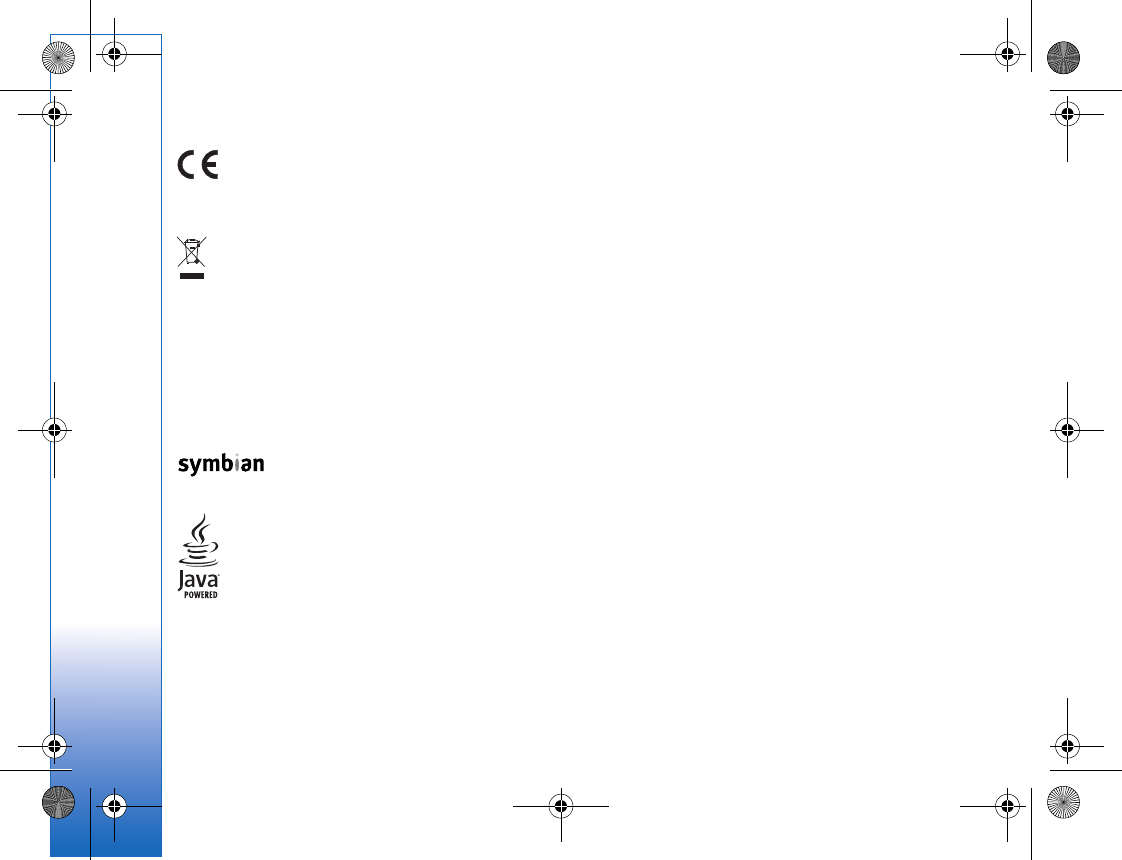
DECLARATION OF CONFORMITY
Hereby, NOKIA CORPORATION declares that this
RM-133 product is in compliance with the
essential requirements and other relevant
provisions of Directive 1999/5/EC. A copy of the Declaration of Conformity can be
found at http://www.nokia.com/phones/declaration_of_conformity/
The crossed-out wheeled bin means that within the European Union the
product must be taken to separate collection at the product end-of-life.
This applies to your device but also to any enhancements marked with
this symbol. Do not dispose of these products as unsorted municipal
waste. For more information, see product Eco-Declaration or country
specific information at www.nokia.com.
© 2007 Nokia. All rights reserved.
Nokia, Nokia Connecting People, Pop-Port, Nseries, N73 and Visual Radio are
trademarks or registered trademarks of Nokia Corporation. Nokia tune is a sound
mark of Nokia Corporation. Other product and company names mentioned herein
may be trademarks or tradenames of their respective owners.
Reproduction, transfer, distribution or storage of part or all of the contents in this
document in any form without the prior written permission of Nokia is prohibited.
This product includes software licensed from Symbian Software Ltd © 1998-
200(7). Symbian and Symbian OS are trademarks of Symbian Ltd.
Java™ and all Java-based marks are trademarks or registered
trademarks of Sun Microsystems, Inc.
US Patent No 5818437 and other pending patents. T9 text input software
Copyright ©1997-2007. Tegic Communications, Inc. All rights reserved.
This product is licensed under the MPEG-4 Visual Patent Portfolio License (i) for
personal and noncommercial use in connection with information which has been
encoded in compliance with the MPEG-4 Visual Standard by a consumer engaged
in a personal and noncommercial activity and (ii) for use in connection with
MPEG-4 video provided by a licensed video provider. No license is granted or shall
be implied for any other use. Additional information, including that related to
promotional, internal, and commercial uses, may be obtained from MPEG LA, LLC.
See <http://www.mpegla.com>.
Nokia operates a policy of ongoing development. Nokia reserves the right to make
changes and improvements to any of the products described in this document
without prior notice.
TO THE MAXIMUM EXTENT PERMITTED BY APPLICABLE LAW, UNDER NO
CIRCUMSTANCES SHALL NOKIA OR ANY OF ITS LICENSORS BE RESPONSIBLE FOR
ANY LOSS OF DATA OR INCOME OR ANY SPECIAL, INCIDENTAL, CONSEQUENTIAL
OR INDIRECT DAMAGES HOWSOEVER CAUSED.
THE CONTENTS OF THIS DOCUMENT ARE PROVIDED "AS IS". EXCEPT AS REQUIRED
BY APPLICABLE LAW, NO WARRANTIES OF ANY KIND, EITHER EXPRESS OR IMPLIED,
INCLUDING, BUT NOT LIMITED TO, THE IMPLIED WARRANTIES OF
MERCHANTABILITY AND FITNESS FOR A PARTICULAR PURPOSE, ARE MADE IN
RELATION TO THE ACCURACY, RELIABILITY OR CONTENTS OF THIS DOCUMENT.
NOKIA RESERVES THE RIGHT TO REVISE THIS DOCUMENT OR WITHDRAW IT AT ANY
TIME WITHOUT PRIOR NOTICE.
Export controls
The availability of particular products and applications and services for these
products may vary by region. Please check with your Nokia dealer for details, and
availability of language options.
This device may contain commodities, technology or software subject to export
laws and regulations from the US and other countries. Diversion contrary to law is
prohibited.
FCC/INDUSTRY CANADA NOTICE
Your device may cause TV or radio interference (for example, when using a
telephone in close proximity to receiving equipment). The FCC or Industry Canada
can require you to stop using your telephone if such interference cannot be
eliminated. If you require assistance, contact your local service facility. This device
complies with part 15 of the FCC rules. Operation is subject to the following two
conditions: (1) This device may not cause harmful interference, and (2) this device
must accept any interference received, including interference that may cause
undesired operation. Any changes or modifications not expressly approved by Nokia
could void the user's authority to operate this equipment.
The third-party applications provided with your device may have been created and
may be owned by persons or entities not affiliated with or related to Nokia. Nokia
does not own the copyrights or intellectual property rights to the third-party
applications. As such, Nokia does not take any responsibility for end-user support,
0434
R1108_en.book Page 2 Wednesday, March 5, 2008 9:53 AM
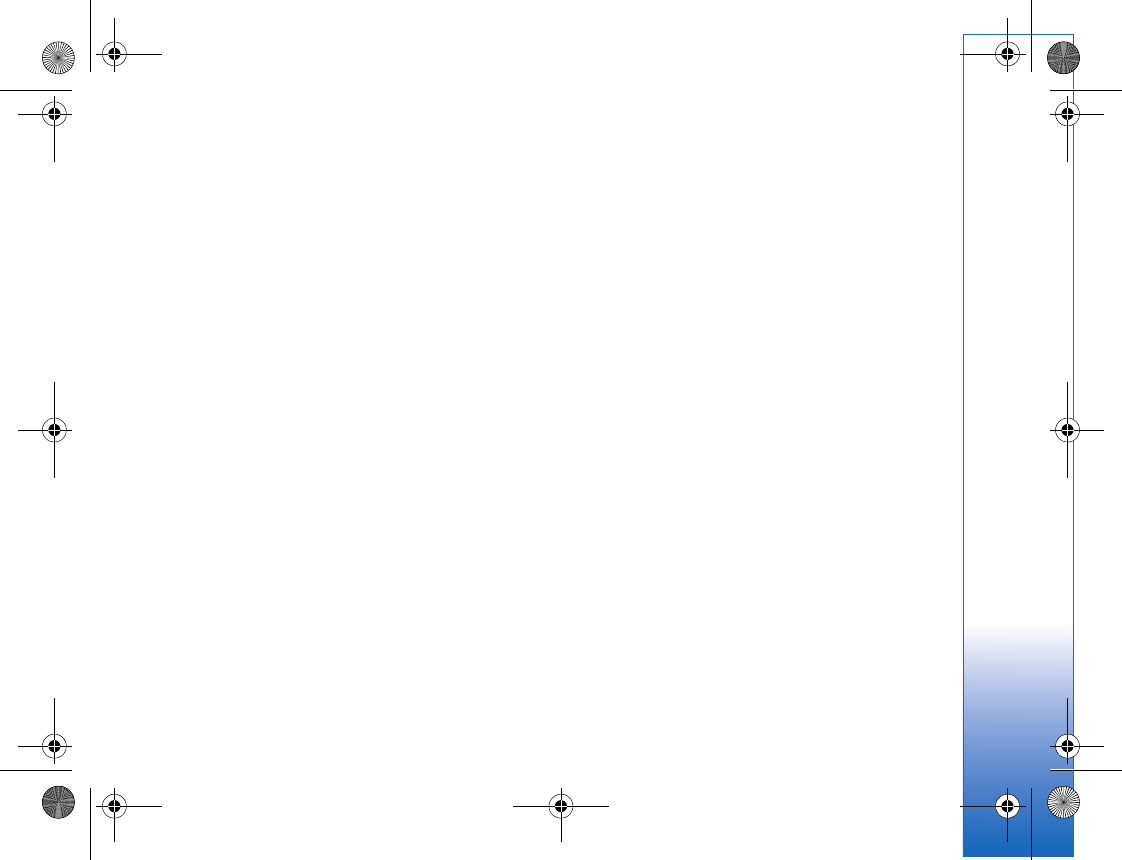
functionality of the applications, or the information in the applications or these
materials. Nokia does not provide any warranty for the third-party applications.
BY USING THE APPLICATIONS YOU ACKNOWLEDGE THAT THE APPLICATIONS ARE
PROVIDED AS IS WITHOUT WARRANTY OF ANY KIND, EXPRESS OR IMPLIED, TO THE
MAXIMUM EXTENT PERMITTED BY APPLICABLE LAW. YOU FURTHER
ACKNOWLEDGE THAT NEITHER NOKIA NOR ITS AFFILIATES MAKE ANY
REPRESENTATIONS OR WARRANTIES, EXPRESS OR IMPLIED, INCLUDING BUT NOT
LIMITED TO WARRANTIES OF TITLE, MERCHANTABILITY OR FITNESS FOR A
PARTICULAR PURPOSE, OR THAT THE APPLICATIONS WILL NOT INFRINGE ANY
THIRD-PARTY PATENTS, COPYRIGHTS, TRADEMARKS, OR OTHER RIGHTS.
Issue 3 EN, 9252070
R1108_en.book Page 3 Wednesday, March 5, 2008 9:53 AM
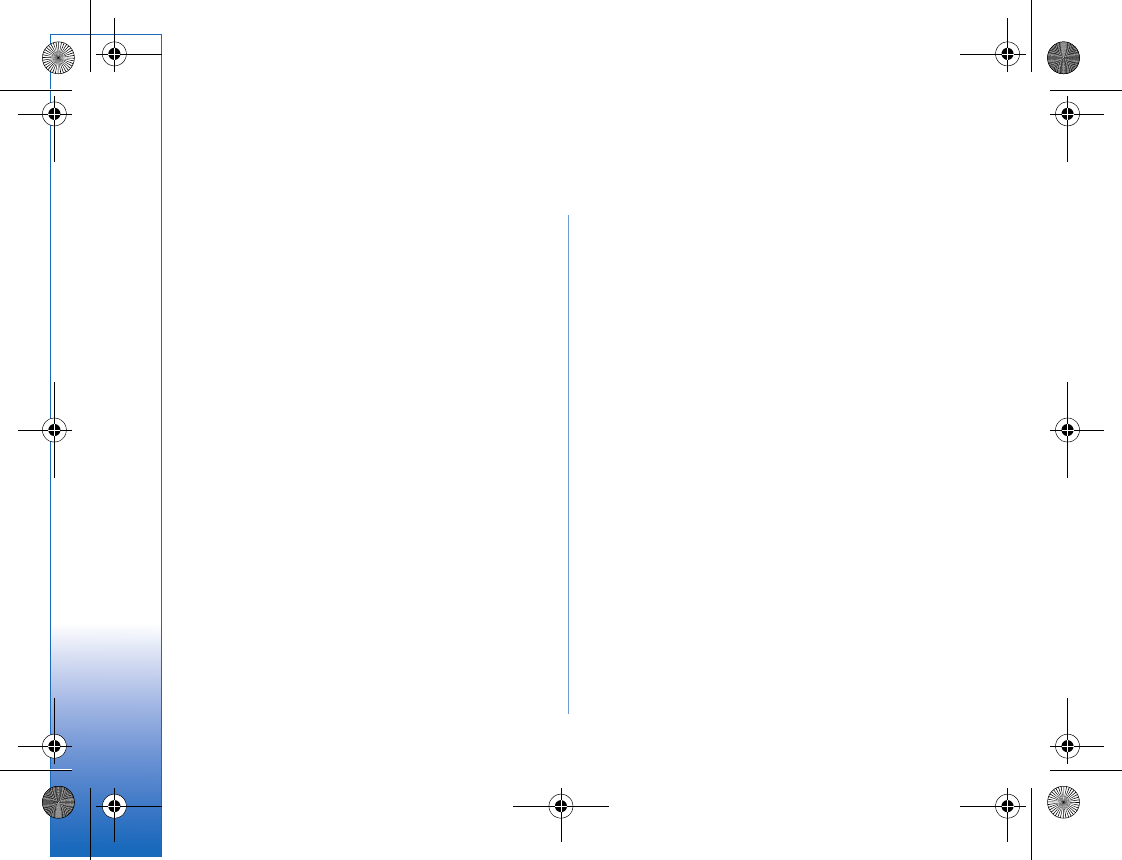
Contents
For your safety7
Get connected10
Your Nokia N7311
Charge the battery11
Settings11
Transfer content from another device11
Essential indicators12
Volume and loudspeaker control13
Multimedia key (Nokia N73 (original
edition))14
Headset14
Memory card tool14
File manager15
Download!16
Support17
Nokia support and contact information
17
Software updates17
Help17
Tutorial18
Camera19
Take pictures19
Take pictures in a sequence24
You in the picture—self-timer24
Record videos25
Gallery28
View and browse files28
Albums30
Edit images31
Edit video clips32
Slide show33
Presentations33
Image print34
Print online35
Share online36
R1108_en.book Page 4 Wednesday, March 5, 2008 9:53 AM
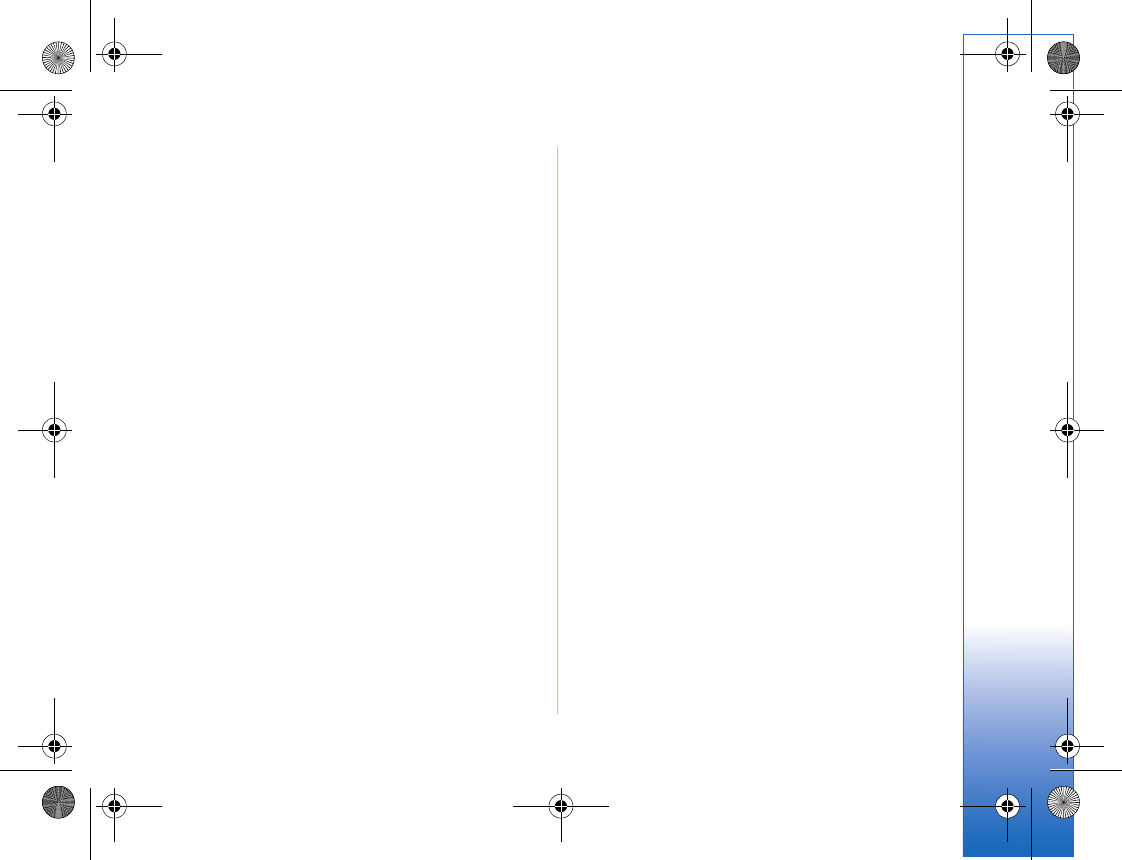
Media applications39
Music access key (Nokia N73 Music
Edition)39
Music player39
Flash Player48
Visual Radio49
RealPlayer51
Movie director52
Time management55
Clock55
Calendar56
Messaging58
Write text59
Write and send messages60
Inbox—receive messages62
Mailbox64
View messages on a SIM card66
Messaging settings66
IM—instant messaging70
Contacts (Phonebook)74
Save and edit names and numbers74
Copy contacts75
Add ringing tones for contacts76
Create contact groups76
Make calls77
Voice calls77
Video calls79
Video sharing80
Answer or decline a call83
Log85
Web browsers87
Services87
Web90
Connections93
Bluetooth connectivity93
Infrared connection96
Data cable97
PC connections97
Connection manager98
Synchronization99
R1108_en.book Page 5 Wednesday, March 5, 2008 9:53 AM
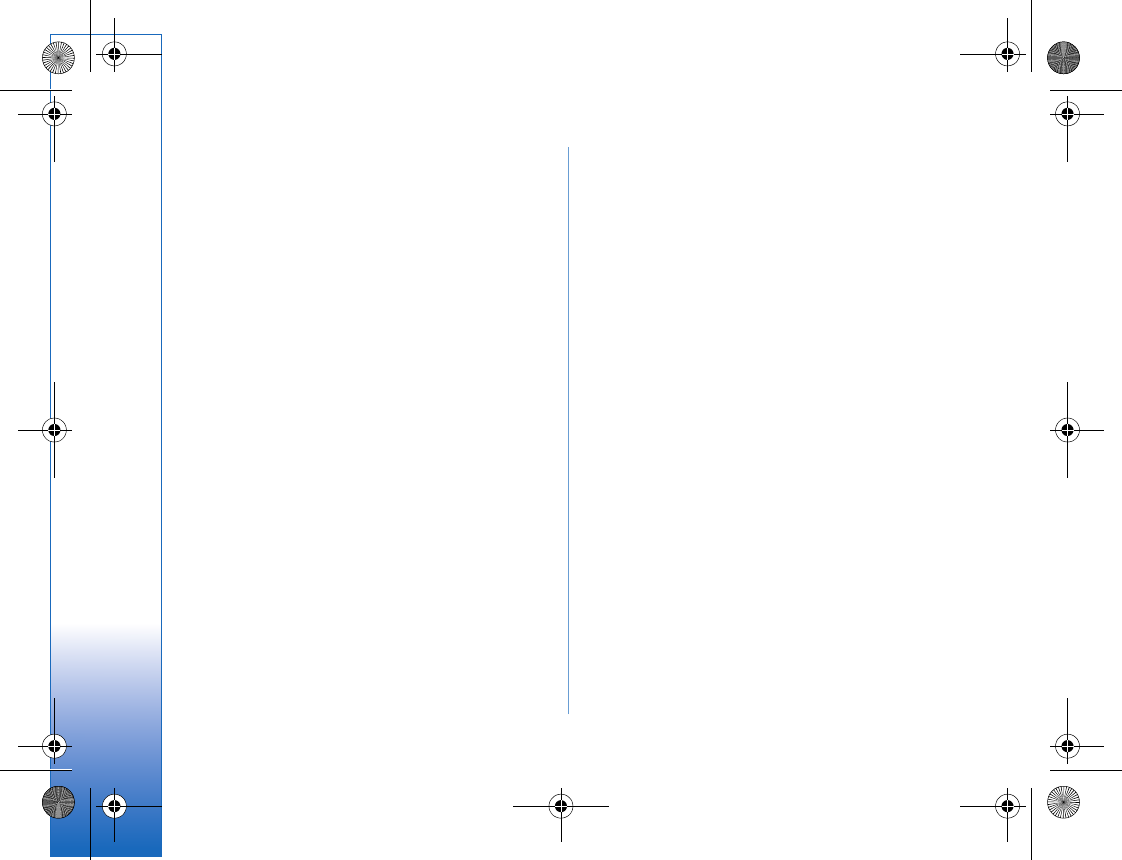
Device manager99
Office102
Calculator102
Converter102
Notes102
Recorder103
Quickoffice103
Adobe Reader104
Personalize your device107
Profiles—set tones107
3-D tones108
Change the look of your device109
Active standby mode110
Tools111
Voice commands111
Application manager111
Digital Rights Management114
Settings115
Phone115
Call116
Connection117
Date and time119
Security120
Call divert123
Call barring 123
Network123
Enhancement124
Troubleshooting: Q&A125
Battery information128
Charging and discharging128
Nokia battery authentication guidelines
128
Care and maintenance131
Additional safety information132
Index135
R1108_en.book Page 6 Wednesday, March 5, 2008 9:53 AM
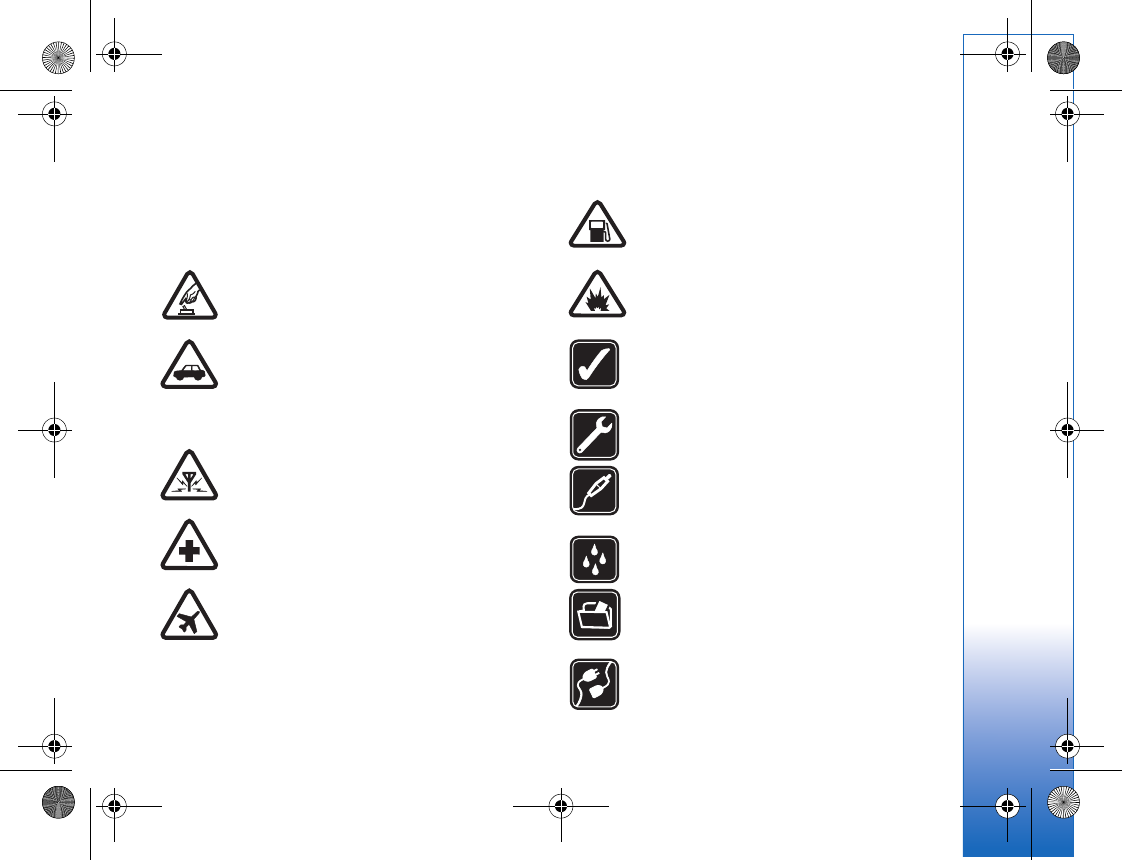
7
For your safety
Read these simple guidelines. Not following them may be
dangerous or illegal. Read the complete user guide for
further information.
SWITCH ON SAFELY Do not switch the device
on when wireless phone use is prohibited or
when it may cause interference or danger.
ROAD SAFETY COMES FIRST Obey all local
laws. Always keep your hands free to operate
the vehicle while driving. Your first
consideration while driving should be road
safety.
INTERFERENCE All wireless devices may be
susceptible to interference, which could affect
performance.
SWITCH OFF IN HOSPITALS Follow any
restrictions. Switch the device off near medical
equipment.
SWITCH OFF IN AIRCRAFT Follow any
restrictions. Wireless devices can cause
interference in aircraft.
SWITCH OFF WHEN REFUELING Do not use
the device at a refueling point. Do not use near
fuel or chemicals.
SWITCH OFF NEAR BLASTING Follow any
restrictions. Do not use the device where
blasting is in progress.
USE SENSIBLY Use only in the positions as
explained in the product documentation. Do
not touch the antenna areas unnecessarily.
QUALIFIED SERVICE Only qualified personnel
may install or repair this product.
ENHANCEMENTS AND BATTERIES Use only
approved enhancements and batteries. Do not
connect incompatible products.
WATER-RESISTANCE Your device is not
water-resistant. Keep it dry.
BACK-UP COPIES Remember to make back-
up copies or keep a written record of all
important information.
CONNECTING TO OTHER DEVICES When
connecting to any other device, read its user
R1108_en.book Page 7 Wednesday, March 5, 2008 9:53 AM
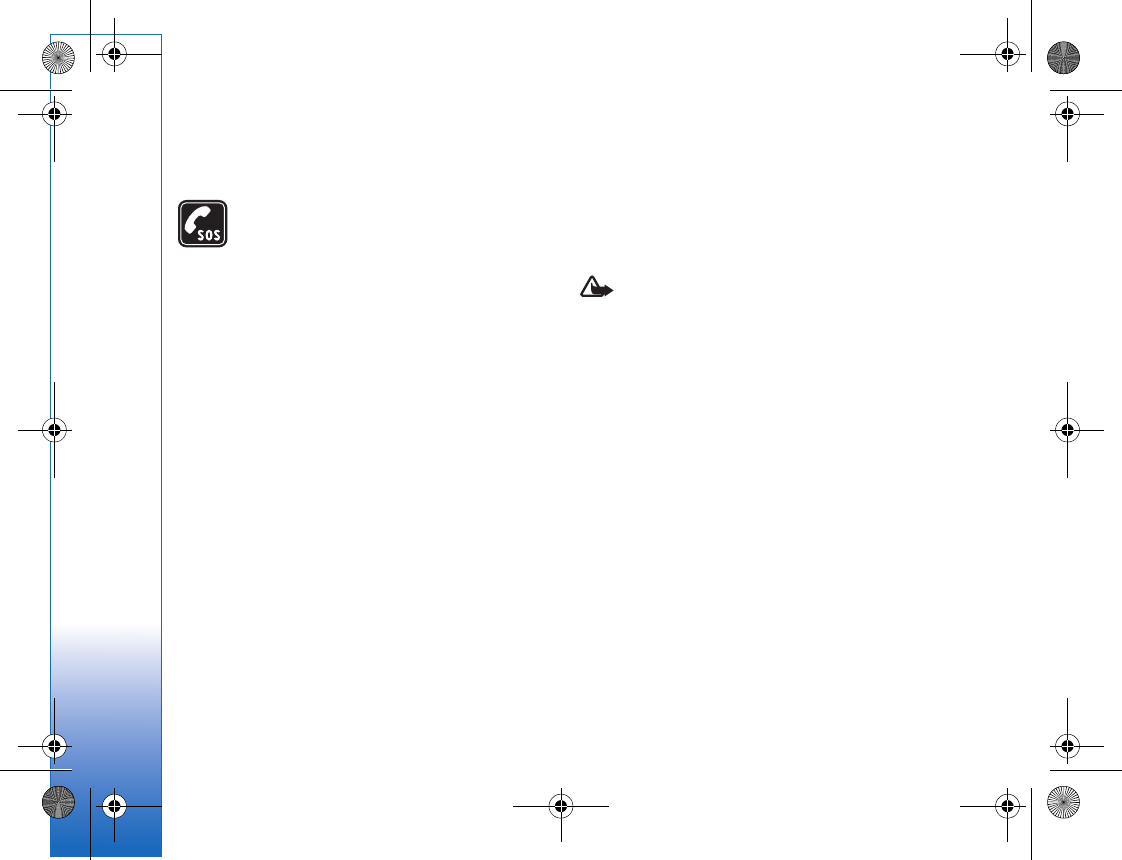
8
guide for detailed safety instructions. Do not
connect incompatible products.
EMERGENCY CALLS Ensure the phone
function of the device is switched on and in
service. Press the end key as many times as
needed to clear the display and return to the
standby mode. Enter the emergency number,
then press the call key. Give your location. Do
not end the call until given permission to do
so.
About your device
The wireless device described in this guide is approved for
use on the EGSM 850/900/1800/1900 and UMTS 2100
networks. Contact your service provider for more
information about networks.
Your device supports Internet connections and other
methods of connectivity. Like computers, your device may
be exposed to viruses, malicious messages and
applications, and other harmful content. Exercise caution
and open messages, accept connectivity requests,
download content, and accept installations only from
trustworthy sources. To increase the security of your
devices, consider installing, using, and regularly updating
anti-virus software, firewall, and other related software
on your device and any connected computer.
When using the features in this device, obey all laws, and
respect local customs, privacy and legitimate rights of
others, including copyrights.
Copyright protections may prevent some images, music
(including ringing tones), and other content from being
copied, modified, transferred or forwarded.
Warning: To use any features in this device, other
than the alarm clock, the device must be switched on.
Do not switch the device on when wireless device use
may cause interference or danger.
The office applications support common features of
Microsoft Word, PowerPoint, and Excel (Microsoft Office
2000, XP, and 2003). Not all file formats can be viewed or
modified.
Your device may have preinstalled bookmarks and links for
third-party internet sites. You may also access other third-
party sites through your device. Third-party sites are not
affiliated with Nokia, and Nokia does not endorse or
assume liability for them. If you choose to access such
sites, you should take precautions for security or content.
Network services
To use the phone you must have service from a wireless
service provider. Many of the features require special
network features. These features are not available on all
R1108_en.book Page 8 Wednesday, March 5, 2008 9:53 AM
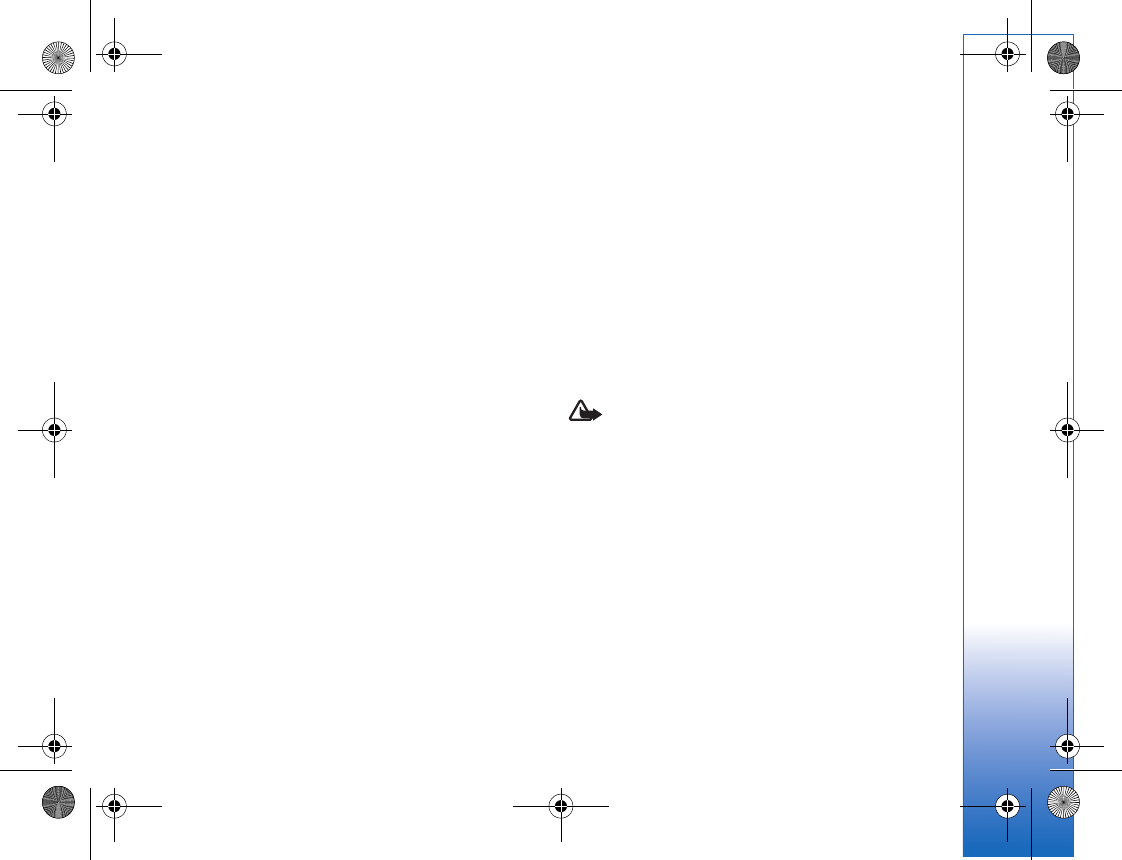
9
networks; other networks may require that you make
specific arrangements with your service provider before
you can use the network services. Your service provider can
give you instructions and explain what charges will apply.
Some networks may have limitations that affect how you
can use network services. For instance, some networks may
not support all language-dependent characters and
services.
Your service provider may have requested that certain
features be disabled or not activated in your device. If so,
these features will not appear on your device menu. Your
device may also have a special configuration such as
changes in menu names, menu order, and icons. Contact
your service provider for more information.
This device supports WAP 2.0 protocols (HTTP and SSL) that
run on TCP/IP protocols. Some features of this device, such
as MMS, browsing, e-mail, and content downloading using
the browser or over MMS, require network support for
these technologies.
For availability and information on using SIM card services,
contact your SIM card vendor. This may be the service
provider or other vendor.
Enhancements, batteries, and
chargers
Always switch the device off and disconnect the charger
before removing the battery.
Check the model number of any charger before use with
this device. This device is intended for use when supplied
with power from a DC-4, AC-3, or AC-4 charger and from
an AC-1, ACP-7, ACP-8, ACP-9, ACP-12, LCH-9, or LCH-12
charger when used with the CA-44 charger adapter.
The battery intended for use with this device is BP-6M.
Warning: Use only batteries, chargers, and
enhancements approved by Nokia for use with this
particular model. The use of any other types may
invalidate any approval or warranty, and may be
dangerous.
For availability of approved enhancements, please check
with your dealer. When you disconnect the power cord of
any enhancement, grasp and pull the plug, not the cord.
R1108_en.book Page 9 Wednesday, March 5, 2008 9:53 AM
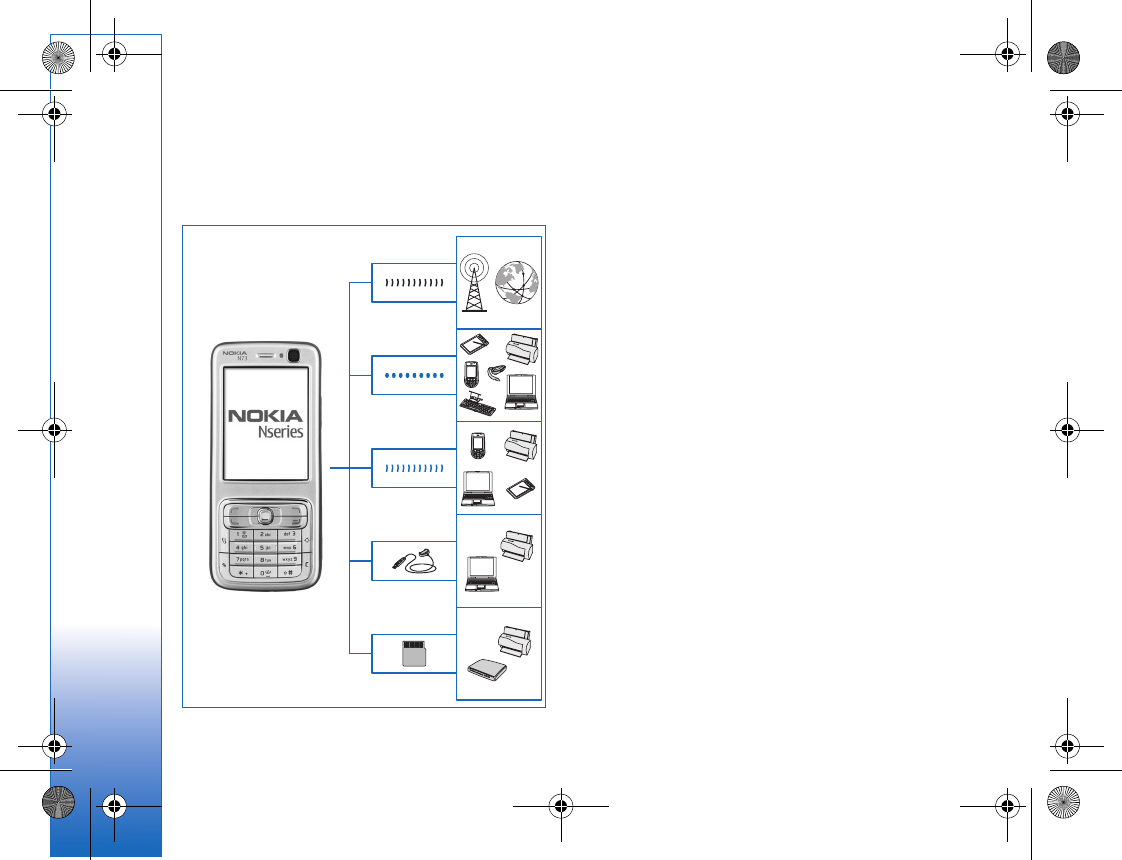
Get connected
10
Get connected
Use your device on the 2G and 3G networks. See ‘About
your device’, p. 8.
Use Bluetooth technology to transfer files and connect to
compatible enhancements. See ‘Bluetooth connectivity’, p.
93.
Use infrared to transfer and synchronize data between
compatible devices. See ‘Infrared connection’, p. 96.
Use a compatible USB data cable, for instance the Nokia
Connectivity Cable CA-53, to connect to compatible
devices, such as printers and PCs. See ‘Data cable’, p. 97.
Use a compatible miniSD card to transfer data or back up
information. See ‘Memory card tool’, p. 14.
R1108_en.book Page 10 Wednesday, March 5, 2008 9:53 AM
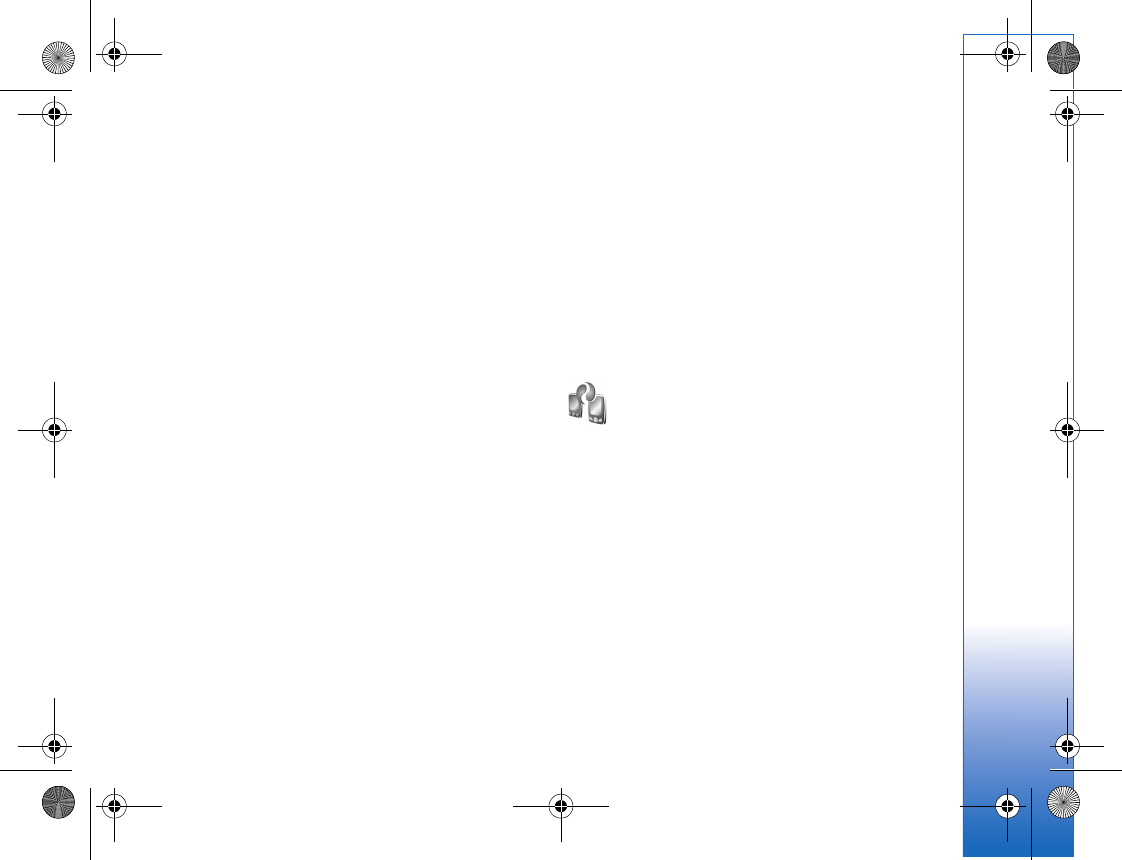
Your Nokia N73
11
Your Nokia N73
Model number: Nokia N73-1.
Hereinafter referred to as Nokia N73. If a function
described in this guide is available only in the original
edition of the Nokia N73 or Nokia N73 Music Edition, this
is indicated in the section describing that function by
referring to the Nokia N73 (original edition) or Nokia
N73 Music Edition. Check the sales box of your device to
see if your device is the original Nokia N73 or Nokia N73
Music Edition.
Charge the battery
1Connect a compatible charger to a wall outlet.
2Connect the power cord to the device. If the battery is
completely discharged, it may take a while before the
charging indicator starts scrolling.
3When the battery is fully charged, disconnect the
charger from the device, then from the wall outlet.
Settings
Your Nokia N73 normally has MMS, GPRS, streaming, and
mobile Internet settings automatically configured in the
device, based upon your wireless service provider
information. You may have settings from your service
providers already installed in your device, or you may
receive the settings from the service providers as a special
text message.
To change the general settings in your device, such as
language, the standby mode, and display settings, see
‘Phone’, p. 115.
Transfer content from
another device
You can transfer content, such as contacts, free of charge
from a compatible Nokia device to your Nokia N73 using
Bluetooth connectivity or infrared. The type of content
that can be transferred depends on the phone model. If
the other device supports synchronization, you can also
synchronize data between the other device and your Nokia
N73.
You can insert your SIM card in the other device. When
Nokia N73 is switched on without a SIM card, the offline
profile is automatically activated.
R1108_en.book Page 11 Wednesday, March 5, 2008 9:53 AM
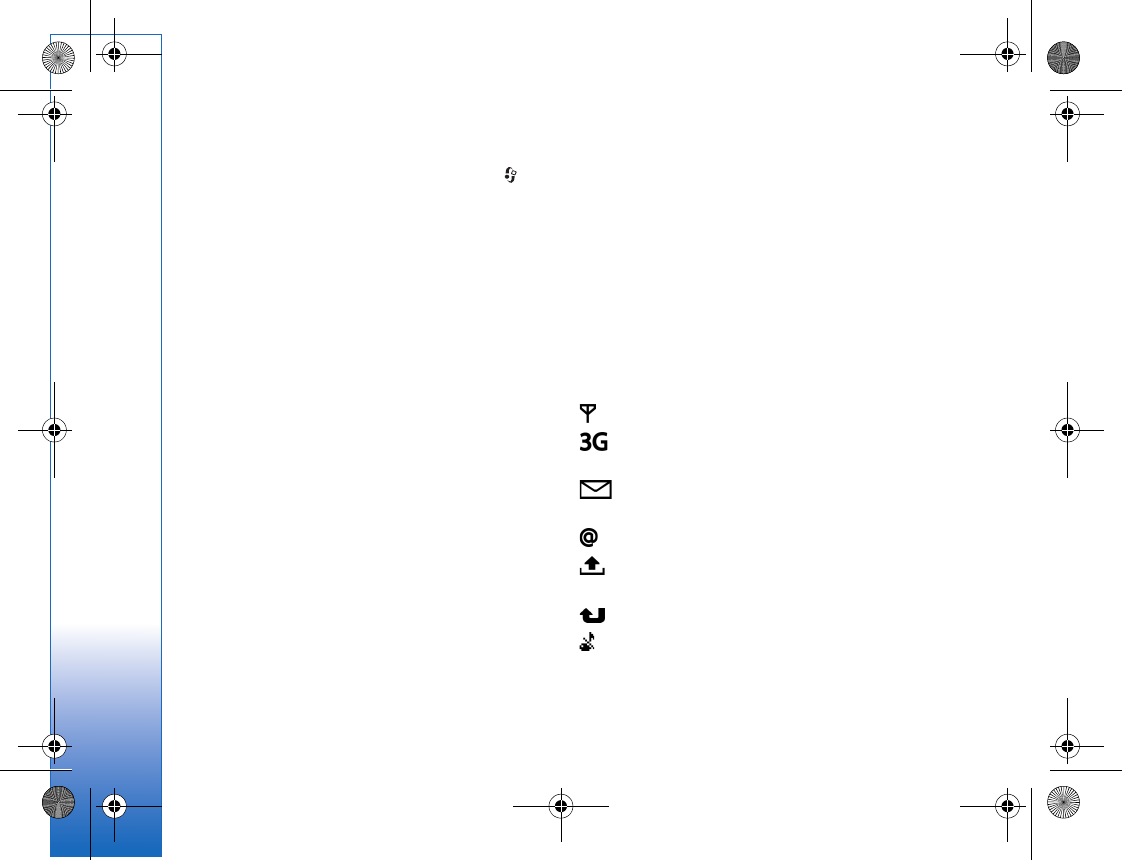
Your Nokia N73
12
Transfer content
1To use the application for the first time, press , and
select Tools > Transfer. If you have used the
application before and want to start a new transfer,
select Transfer data.
In the information view, select Continue.
2Select whether you want to use Bluetooth
connectivity or infrared to transfer the data. Both
devices must support the selected connection type.
3If you select Bluetooth connectivity:
To have Nokia N73 search for devices with Bluetooth
connectivity, select Continue. Select your other device
from the list. You are asked to enter a code on your
Nokia N73. Enter a code (1-16 digits), and select OK.
Enter the same code on the other device, and select
OK. The devices are now paired. See ‘Pair devices’,
p. 95.
For some phone models, the Data transfer application
is sent to the other device as a message. To install Data
transfer on the other device, open the message, and
follow the instructions on the display.
If you select infrared, connect the two devices. See
‘Infrared connection’, p. 96.
4From your Nokia N73, select the content you want to
transfer from the other device.
Content is transferred from the memory of the other
device to the corresponding location in your Nokia N73.
Transferring time depends on the amount of data to be
transferred. You can cancel transferring and continue
later.
If the other device supports synchronization, you can keep
the data up-to-date in both devices. To start a
synchronization with a compatible Nokia device, select
Phones, scroll to the device, and select Options >
Synchronise. Follow the instructions on the display.
To view the log of a previous transfer, select Transfer log.
Essential indicators
The device is being used in a GSM network.
The device is being used in a UMTS network (network
service).
You have one or more unread messages in the Inbox
folder in Messaging.
You have received new e-mail in the remote mailbox.
There are messages waiting to be sent in the Outbox
folder.
You have missed calls.
Shown if Ringing type is set to Silent and Message
alert tone, IM alert tone, and E-mail alert tone are set
to Off.
R1108_en.book Page 12 Wednesday, March 5, 2008 9:53 AM
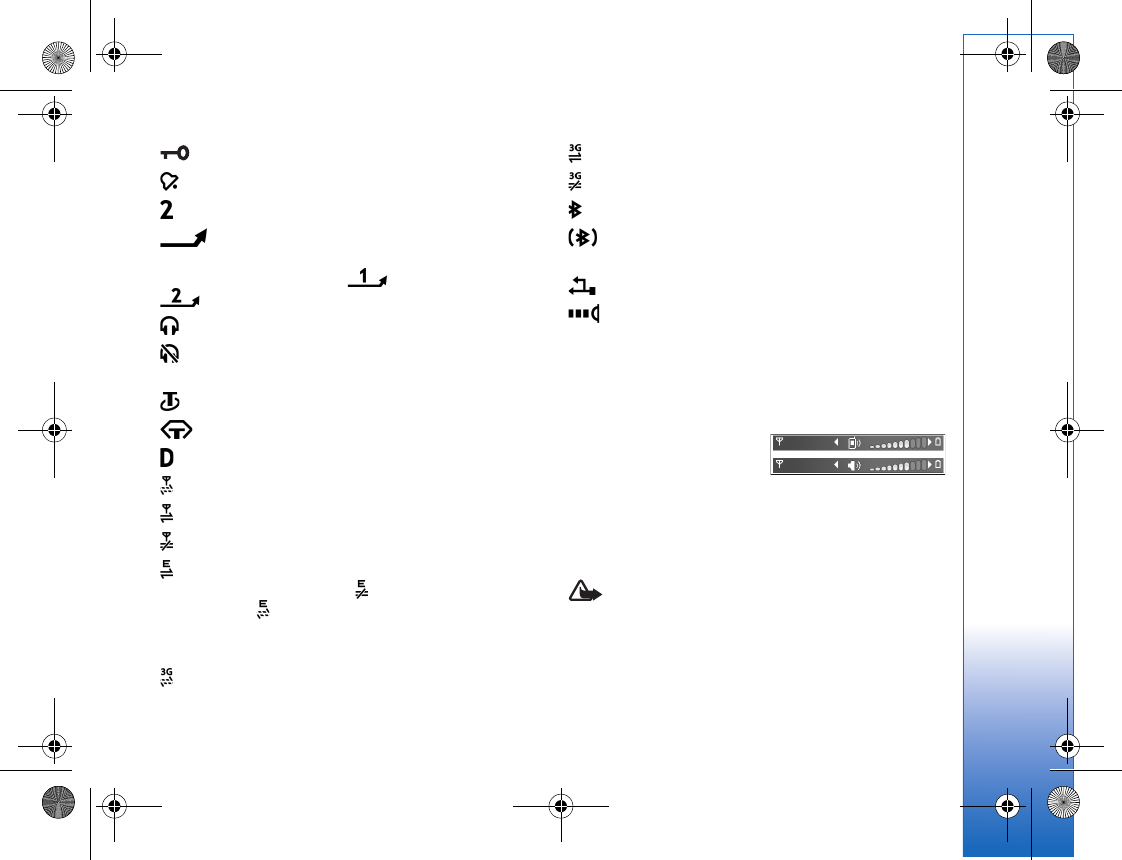
Your Nokia N73
13
The device keypad is locked.
A clock alarm is active.
The second phone line is being used (network service).
All calls to the device are diverted to another
number. If you have two phone lines (network service), the
indicator for the first line is and for the second
.
A compatible headset is connected to the device.
The connection to a compatible headset with
Bluetooth connectivity has been lost.
A compatible loopset is connected to the device.
A compatible Text phone is connected to the device.
A data call is active.
A GPRS packet data connection is available.
A GPRS packet data connection is active.
A GPRS packet data connection is on hold
A packet data connection is active in a part of the
network that supports EDGE. indicates the connection
is on hold and that a connection is available. The icons
indicate that EDGE is available in the network, but your
device is not necessarily using EDGE in the data transfer.
A UMTS packet data connection is available.
A UMTS packet data connection is active.
A UMTS packet data connection is on hold.
Bluetooth connectivity is on.
Data is being transmitted using Bluetooth
connectivity.
A USB connection is active.
An infrared connection is active. If the indicator is
blinking, the device is trying to connect to the other device
or the connection has been lost.
Volume and loudspeaker control
To increase or decrease the
volume level when you have
an active call or are listening
to a sound, press the volume key on the side of the device.
The built-in loudspeaker allows you to speak and listen
from a short distance without having to hold the device to
your ear.
Warning: Do not hold the device near your ear
when the loudspeaker is in use, because the volume
may be extremely loud.
To use the loudspeaker during a call, select Options >
Activate loudsp..
R1108_en.book Page 13 Wednesday, March 5, 2008 9:53 AM
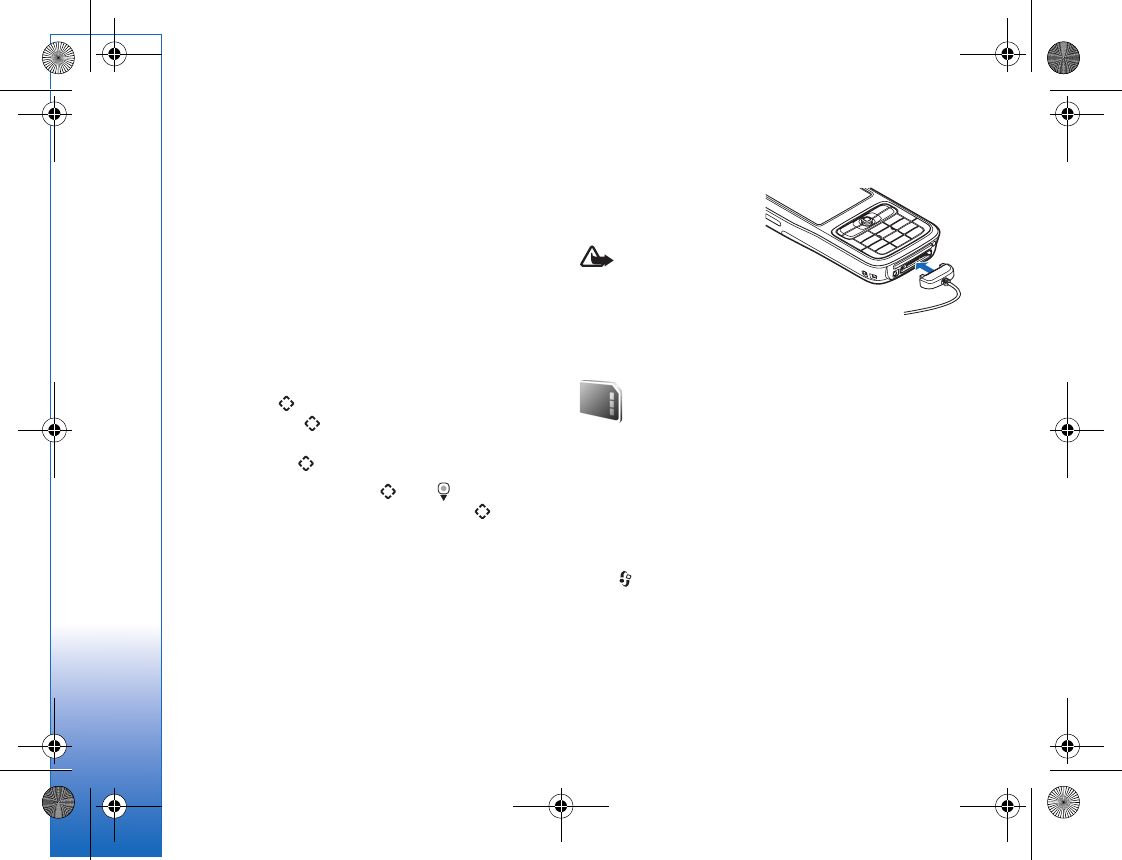
Your Nokia N73
14
To turn off the loudspeaker, select Options > Activate
handset.
Multimedia key (Nokia N73
(original edition))
This section describes the multimedia key in your Nokia
N73 (original edition) device.
With the multimedia key, you have a quick access to
multimedia content and predefined applications.
To open the shortcut assigned to the multimedia key,
press and hold . To open a list of multimedia
applications, press . To open the desired application,
use the scroll key. To exit the list without selecting an
application, press .
To change the shortcuts, press , and . To change the
applications that are shown when you press , select
Top, Left, Middle, and Right and the application.
Some shortcuts may be fixed, and you are not able to
change them.
Headset
Connect a compatible
headset to the Pop-PortTM
connector of your device.
Warning: When
you use the headset, your
ability to hear outside
sounds may be affected.
Do not use the headset where it can endanger your safety.
Memory card tool
Use only compatible miniSD cards approved by Nokia for
use with this device. Nokia uses approved industry
standards for memory cards, but some brands may not be
fully compatible with this device. Incompatible cards may
damage the card and the device and corrupt data stored on
the card.
Press , and select Tools > Memory. You can use a
compatible miniSD card as extra storage space and for
backing up the information in the device memory.
To back up information from the device memory to a
compatible memory card, select Options > Backup phone
mem.
R1108_en.book Page 14 Wednesday, March 5, 2008 9:53 AM
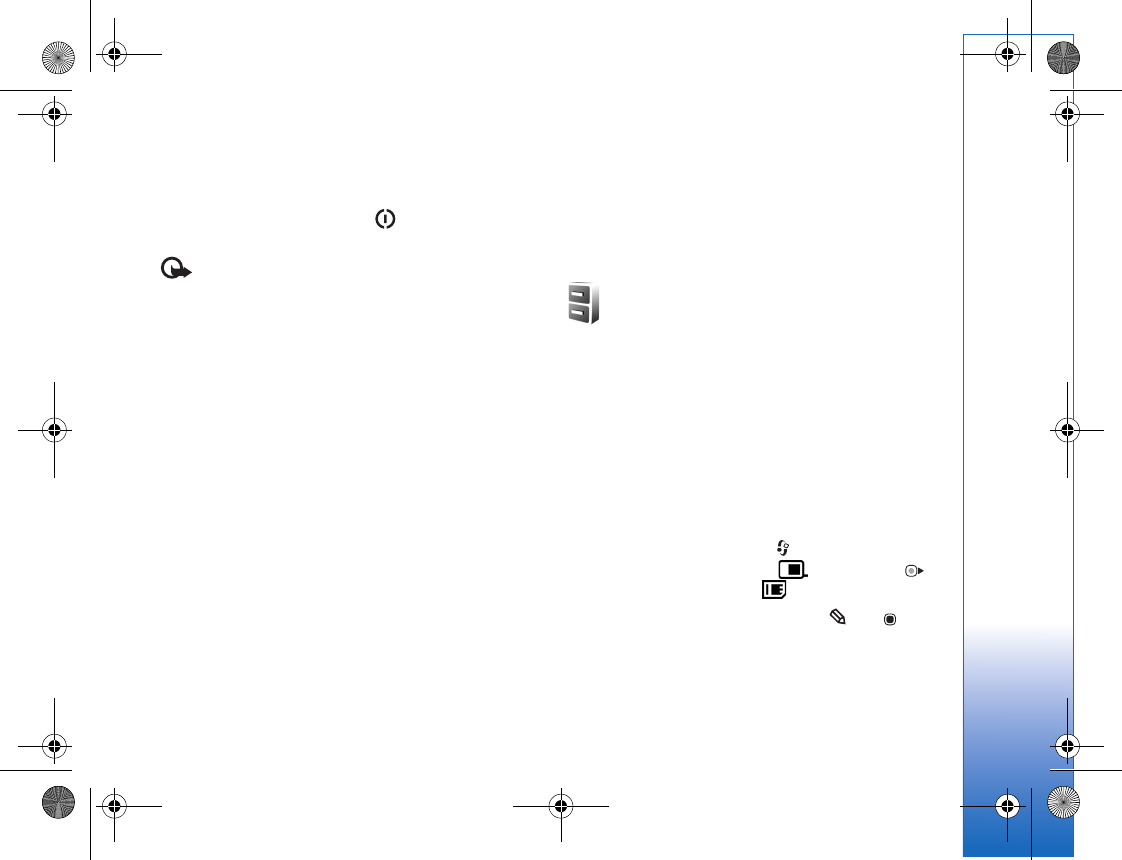
Your Nokia N73
15
To restore information from the compatible memory card
to the device memory, select Options > Restore from
card.
To eject the memory card, press , and select Remove
mem. card.
Important: Do not remove the memory card in the
middle of an operation when the card is being accessed.
Removing the card in the middle of an operation may
damage the memory card as well as the device, and data
stored on the card may be corrupted.
Set a password
To set a password to protect your memory card, select
Options > Set password. You can use up to 8 characters
in the password.
To change the password, select Options > Change
password.
To remove the password, select Options > Remove
password.
Format a memory card
When a memory card is reformatted, all data on the card
is permanently lost.
Some memory cards are supplied preformatted and others
require formatting. Consult your retailer to find out if you
must format the memory card before you can use it.
To format a memory card, select Options > Format mem.
card. Select Yes to confirm.
File manager
Many features of the device, such as contacts, messages,
images, videos, ringing tones, calendar notes, documents,
and downloaded applications, use memory to store data.
The free memory available depends on how much data is
already saved in the device memory.
You can use a compatible memory card as extra storage
space. Memory cards are rewritable, so you can delete old
information and save new data on a memory card.
To browse files and folders in the device memory or on a
memory card (if inserted), press , and select Tools > File
mgr.. The device memory view ( ) opens. Press to
open the memory card view ( ), if available.
To move or copy files to a folder, press and at the
same time to mark a file, and select Options > Move to
folder or Copy to folder.
R1108_en.book Page 15 Wednesday, March 5, 2008 9:53 AM
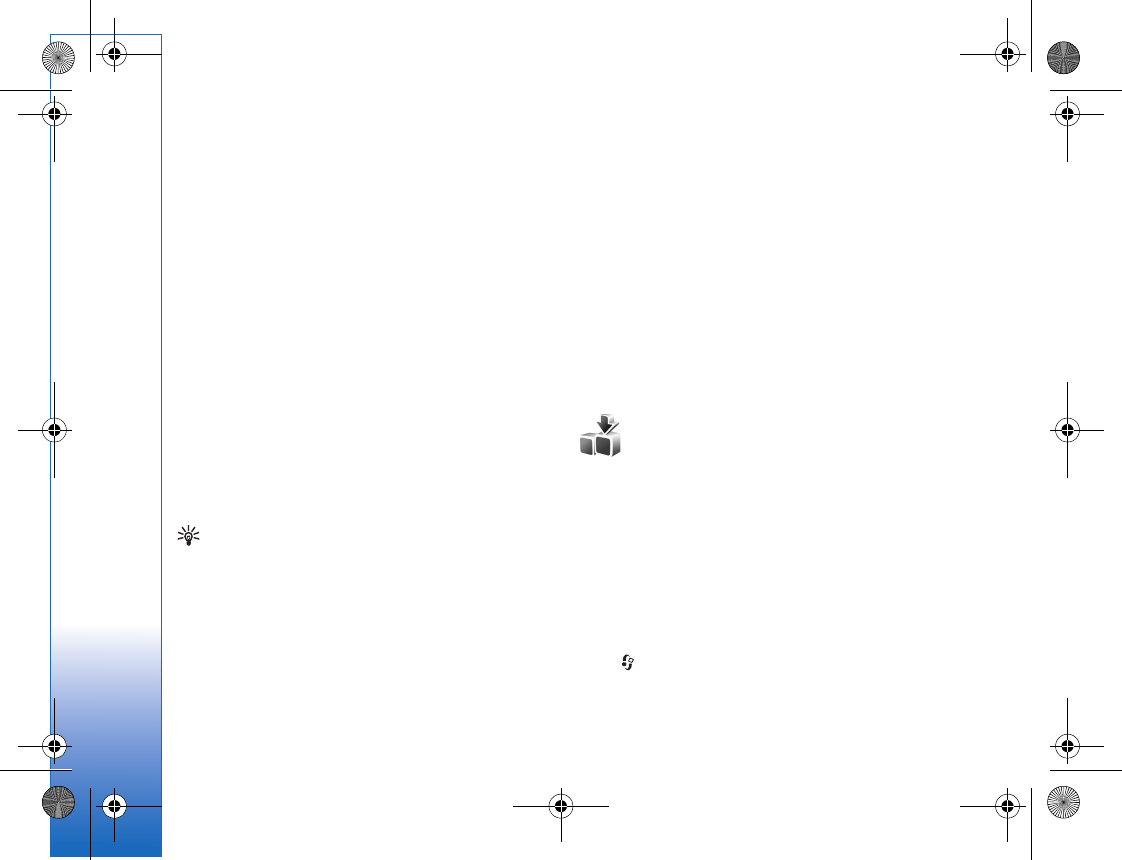
Your Nokia N73
16
To find a file, select Options > Find and the memory from
which to search, and enter a search text that matches the
file name.
View memory consumption
To view what types of data you have in the device and
how much memory the different data types consume,
select Options > Memory details. The amount of
available free memory is shown in Free memory.
Memory low—free memory
The device notifies you if the device or the memory card
memory is low.
To free device memory, transfer data to a compatible
memory card, if you have one. Mark files to be moved, and
select Options > Move to folder > Memory card, and a
folder.
Tip! You can use Nokia Phone Browser available in
Nokia PC Suite to view the different memories in your
device and transfer data.
To remove data to free memory, use File manager, or go
to the respective application. For example, you can
remove the following:
• Messages from Inbox, Drafts, and Sent folders in
Messaging
• Retrieved e-mail messages from the device memory
• Saved Web pages
• Saved images, videos, or sound files
• Contact information
•Calendar notes
• Downloaded applications. See also ‘Application
manager’, p. 111.
• Installation files (.sis) of applications you have installed
to a compatible miniSD card; first back up the
installation files to a compatible PC using Nokia PC
Suite.
• Any other data that you no longer need
Download!
Download! (network service) is a mobile content shop
available on your device. You can browse, download, and
install items, such as applications and media files, to your
device from the Internet.
The items are categorized under catalogs and folders
provided by different service providers. Some items may be
chargeable, but you can usually preview them free of
charge.
Press , and select Internet > Download!
For details, see the Additional applications leaflet.
R1108_en.book Page 16 Wednesday, March 5, 2008 9:53 AM
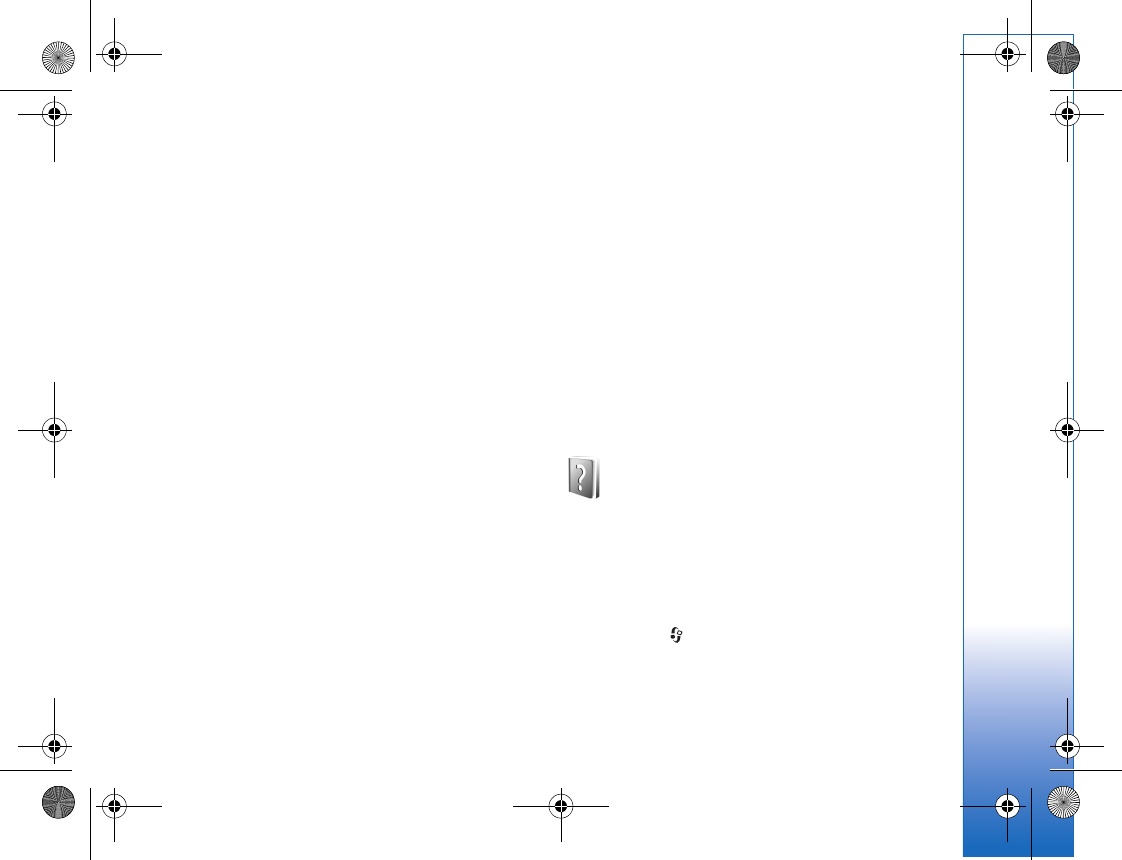
Support
17
Support
Nokia support and contact
information
Check www.nokia.com/support or your local Nokia Web
site for the latest version of this guide, additional
information, downloads, and services related to your Nokia
product.
On the Web site, you can get information on the use of
Nokia products and services. If you need to contact
customer service, check the list of local Nokia contact
centers at www.nokia.com/customerservice.
For maintenance services, check your nearest Nokia service
center at www.nokia.com/repair.
Software updates
Nokia may produce software updates that may offer new
features, enhanced functions, or improved performance.
You may be able to request these updates through the
Nokia Software Updater PC application. To update the
device software, you need the Nokia Software Updater
application and a compatible PC with Microsoft Windows
2000 or XP operating system, broadband internet access,
and a compatible data cable to connect your device to the
PC.
To get more information and to download the
Nokia Software Updater application, visit
www.nokia.com/softwareupdate or your local Nokia web
site.
If software updates over the air are supported by your
network, you may also be able to request updates through
the device. See ‘Device manager’, ‘Software updates’, p.
99.
Help
Your device has context-sensitive help. When an
application is open, select Options > Help to access help
for the current view.
When you are reading the instructions, to switch between
help and the application that is open in the background,
press and hold .
To open help from the main menu, select Tools > Help.
Select the desired application to view its help topics.
R1108_en.book Page 17 Wednesday, March 5, 2008 9:53 AM
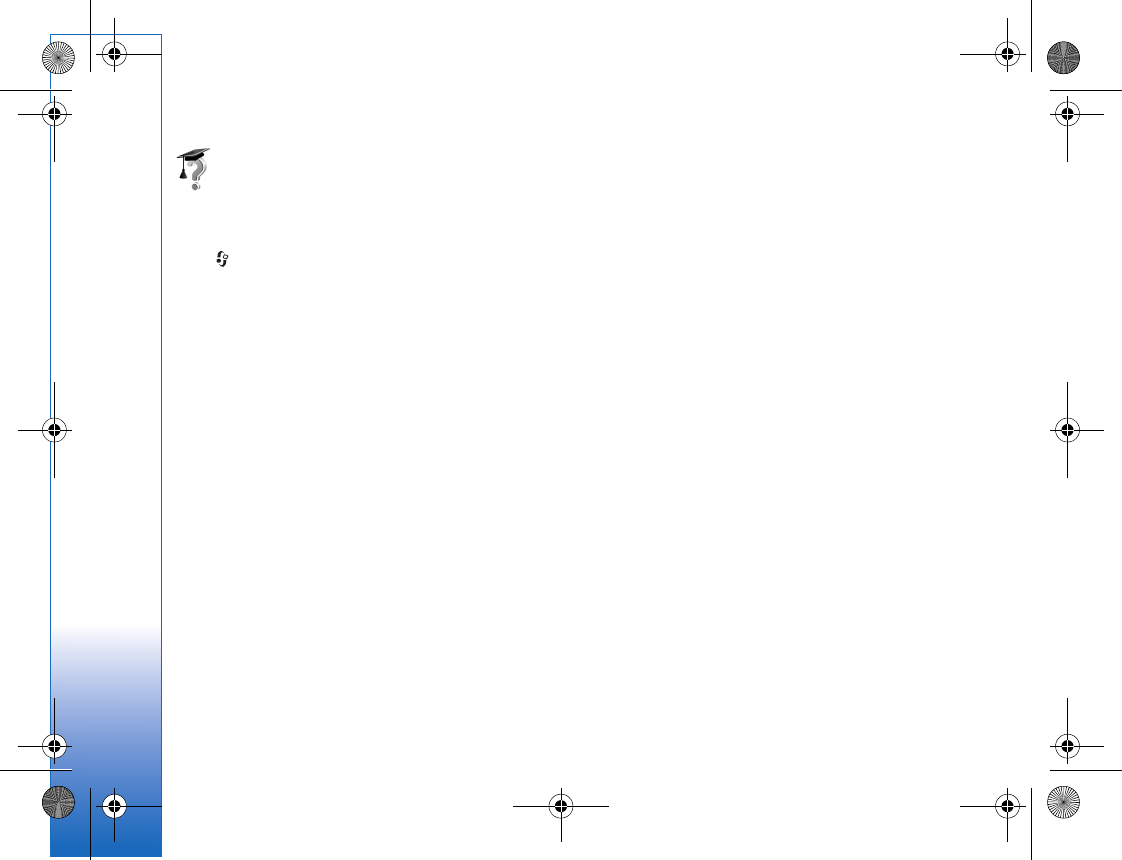
Support
18
Tutorial
The tutorial gives you information about some of the
features of your device. To access the tutorial in the menu,
press , and select Applications > Tutorial and the
section you want to view.
R1108_en.book Page 18 Wednesday, March 5, 2008 9:53 AM
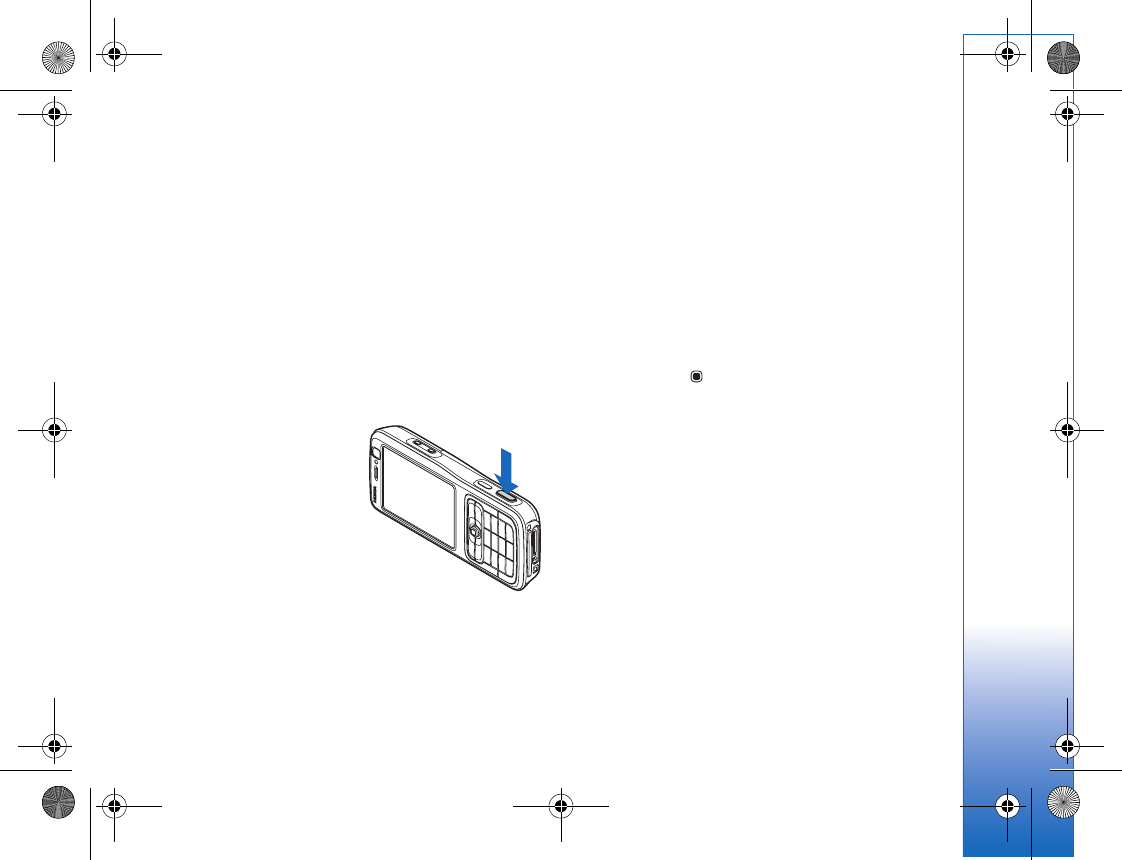
Camera
19
Camera
Your Nokia N73 has two cameras, a high resolution camera
on the back of the device (the main camera) and a lower
resolution camera on the front (the secondary camera).
You can use both cameras to take still pictures and record
videos. The secondary camera on the front is used in
portrait mode, and the main camera on the back in
landscape mode.
The Nokia N73 device supports an image capture
resolution of 2048x1536 pixels using the main camera. The
image resolution in these materials may appear different.
The images and video clips
are automatically saved in
the Images & video folder in
Gallery. The cameras produce
.jpeg images. Video clips are
recorded in the .mp4 file
format, or in the 3GPP file
format with the .3gp file
extension (Sharing quality).
See ‘Video settings’, p. 26.
You can send images and video clips in a multimedia
message, as an e-mail attachment, or by using Bluetooth
connectivity. You can also upload them to a compatible
online album. See ‘Share online’, p. 36.
Take pictures
When taking a picture, note the following:
• Use both hands to keep the camera still.
• The quality of a digitally zoomed picture is lower than
that of a nonzoomed picture.
• The camera goes into the battery saving mode if there
are no keypresses for a moment. To continue taking
pictures, press .
To take a picture, do the following:
1To activate the main camera, open the slide. If the
camera is in Video mode, select Switch to image
mode from the active toolbar.
2To lock the focus on an object, press the capture key
halfway down (main camera only). The green locked
focus indicator appears on the display. If the focus was
not locked, the red focus indicator appears. Release the
capture key, and press it halfway down again. You can,
however, take the picture without locking the focus.
3To take a picture, in the main camera, press the
capture key. Do not move the device before the image
is saved.
To zoom in or out, use the zoom key on the side of your
device.
R1108_en.book Page 19 Wednesday, March 5, 2008 9:53 AM
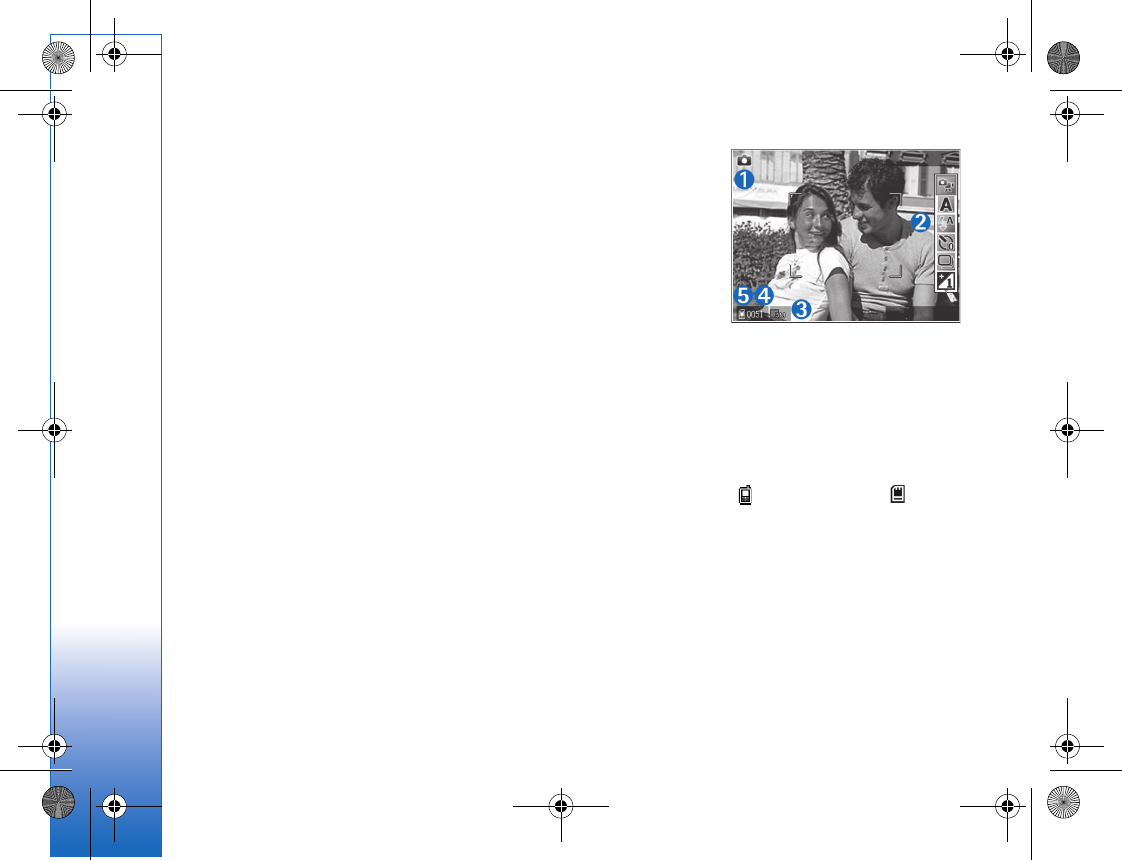
Camera
20
You can make lighting and color adjustments before
taking a picture by using the scroll key to scroll through
the active toolbar. See ‘Setup settings—Adjust color and
lighting’, p. 23.
Saving the captured image may take longer if you change
the zoom, lighting, or color settings.
To free memory before taking a picture, select Options >
Go to free memory (only available if you have backed up
images or video clips). See ‘Free memory’, p. 30.
To activate the front camera, select Options > Use
secondary camera.
To close the main camera, close the slide.
Still image camera indicators
The still image camera viewfinder displays the following:
• The current capture mode indicator (1).
• The active toolbar (2), which you can scroll through
before capturing the image to activate the self-timer
or sequence mode, or select the capturing mode,
scene, flash mode, white balance, exposure
compensation, color tone, and light sensitivity (the
active toolbar is not displayed during focus and image
capture). See ‘Active toolbar’, p. 21.
•The image
resolution
indicator (3)
indicates
whether the
quality of the
image is Print
3M - Large
(2048x1536
resolution), Print
2M - Medium (1600x1200 resolution), Print/e-mail
0.8M - Small (1024x768 resolution), or Multimedia
message 0.3M (640x480 resolution).
• The image counter (4) displays the estimated number of
images you can capture using the current image quality
setting and memory in use (the counter is not displayed
during focus and image capture).
• The device memory ( ) and memory card ( )
indicators (5) show where images are saved.
To display all viewfinder indicators, select Options > Show
icons. To display only the camera status indicators, select
Hide icons.
R1108_en.book Page 20 Wednesday, March 5, 2008 9:53 AM
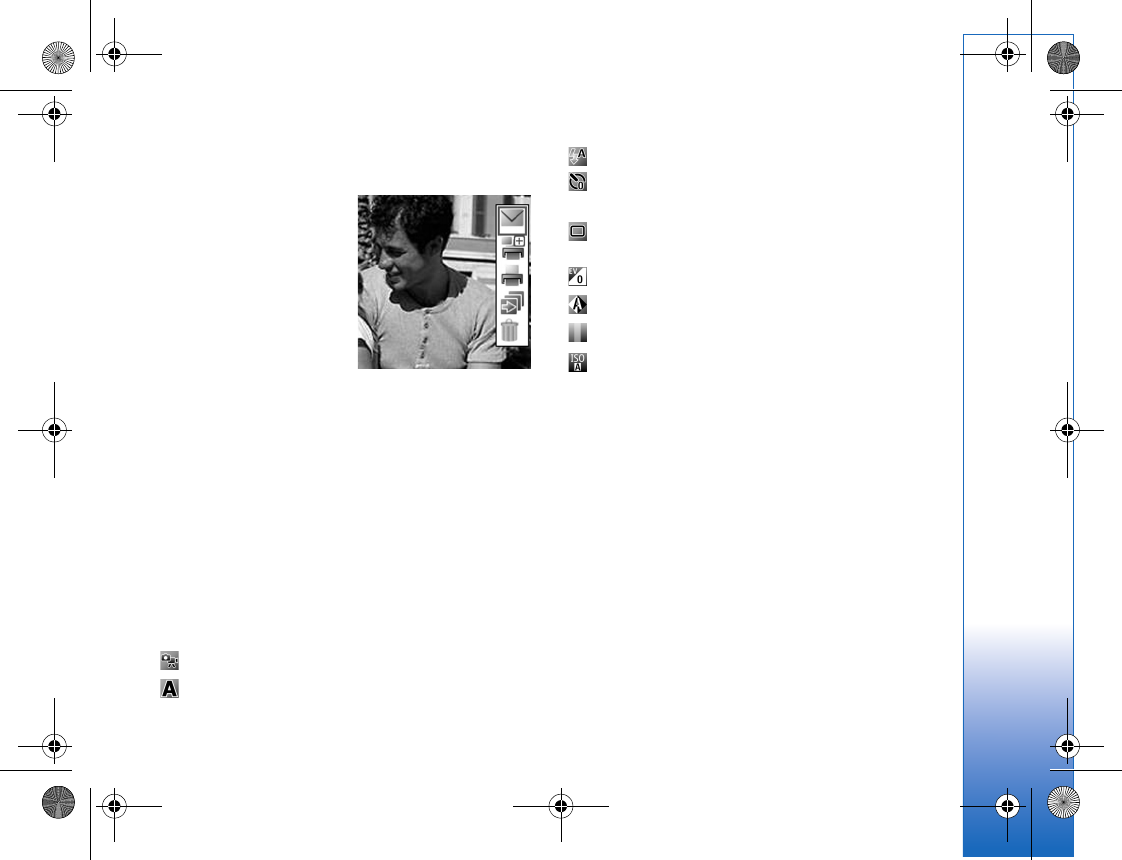
Camera
21
Active toolbar
In the camera, you can use
active toolbar as a
shortcut to select items
and adjust different
settings before and after
taking a picture or
recording a video. In the
active toolbar, scroll to
different items, and select
them by pressing the scroll
key. The available options
vary depending on the capture mode and state you are in.
You can also define whether the active toolbar is always
visible on the display or activated by a key press.
If you want the active toolbar to be visible on the display
before and after taking a picture or recording a video,
select Options > Show icons.
If you want the active toolbar to be visible only a while
when you need it, select Options > Hide icons. You can
activate the active toolbar by pressing the scroll key.
Before taking a picture or recording a video, in the active
toolbar, select from the following:
to switch between the video and image modes
to select the scene
to select the flash mode
to activate the self-timer (images only). See ‘You in
the picture—self-timer’, p. 24.
to activate the sequence mode (images only). See
‘Take pictures in a sequence’, p. 24.
to adjust the exposure compensation (images only)
to adjust white balance
to select a color effect
to adjust light sensitivity (images only)
The icons change to reflect the current status of the
setting.
The available options may vary depending on the view you
are in.
See also active toolbar options in ‘After taking a picture’,
p. 21, ‘After recording a video’, p. 26, and ‘Active toolbar’,
p. 29 in Gallery.
After taking a picture
After you take the picture, select the following from the
active toolbar (available only if Show captured image is
set to On in Still image camera settings):
• If you do not want to keep the image, select Delete.
R1108_en.book Page 21 Wednesday, March 5, 2008 9:53 AM
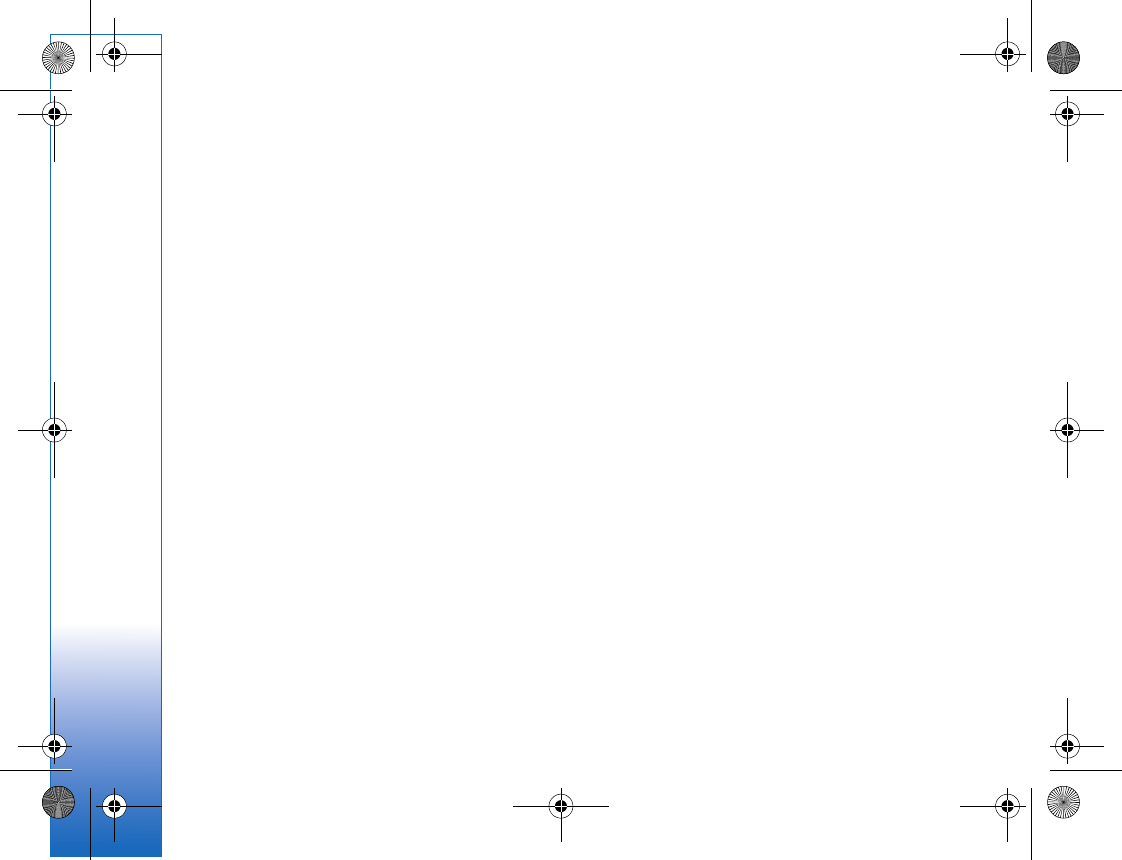
Camera
22
• To send the image using multimedia, e-mail, Bluetooth
connectivity, or infrared, or upload it to a compatible
online album, press the call key, or select Send. For
more information, see ‘Messaging’, p. 58, ‘Bluetooth
connectivity’, p. 93, and ‘Share online’, p. 36. This
option is not available during an active call. You can
also send the image to a call recipient during an active
call. Select Send to caller (only available during an
active call).
• To tag images to the Print Basket for later printing,
select Add to Print Basket.
• To print the picture, select Print. See ‘Image print’,
p. 34.
• To capture a new image, select New image.
To rename the image, select Options > Rename image.
To use the picture as wallpaper in the active standby,
select Options > Set as wallpaper.
Still image camera settings
There are two kinds of settings for the still image camera:
Image setup and main settings. To adjust Image setup,
see ‘Setup settings—Adjust color and lighting’, p. 23. The
setup settings return to the default settings after you
close the camera, but the main settings remain the same
until you change them again. To change the main settings,
select Options > Settings and from the following:
Image quality—Print 3M - Large-Large (2048x1536
resolution), Print 2M - Medium (1600x1200 resolution),
Print/e-mail 0.8M - Small (1024x768 resolution), or
Multimedia message 0.3M (640x480 resolution). The
better the image quality, the more memory the image
consumes. If you want to print the image, select Print 3M
- Large, Print 2M - Medium, or Print/e-mail 0.8M -
Small. If you want to send it through e-mail, select Print/
e-mail 0.8M - Small. To send the image through MMS,
select Multimedia message 0.3M.
These resolutions are only available in the main camera.
Add to album—Select whether you want to save the image
to a certain album in the gallery. If you select Yes, a list of
available albums opens.
Show captured image—Select On if you want to see the
captured image after it is taken, or Off if you want to
continue taking pictures immediately.
Default image name—Define the default name for the
captured images.
Extended digital zoom (main camera only)—Select On to
allow the zoom increments to be smooth and continuous
between digital and extended digital zoom. If you want to
limit the zoom to where the selected image quality is
maintained, select Off.
Capture tone—Select the tone you want to hear when you
take a picture.
R1108_en.book Page 22 Wednesday, March 5, 2008 9:53 AM
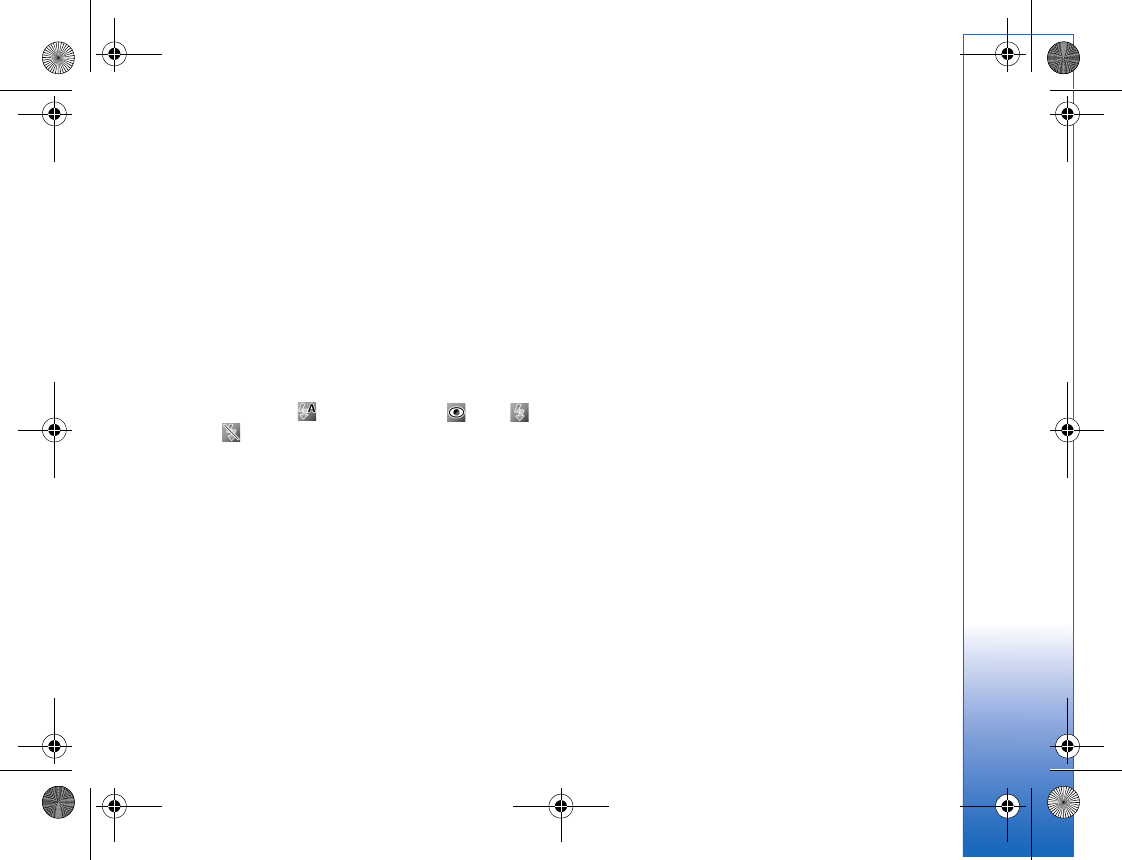
Camera
23
Memory in use—Select where to store your images.
Restore camera settings—Select OK to return the default
values to the camera settings.
Flash
The flash is available only in the main camera.
Keep a safe distance when using the flash. Do not use the
flash on people or animals at close range. Do not cover the
flash while taking a picture.
The camera has an LED flash for low light conditions. The
following flash modes are available for the still image
camera: Automatic (), Red eye reduct. (), On (),
and Off ().
To change the flash mode, in the active toolbar, select the
desired flash mode.
Setup settings—Adjust color and
lighting
To enable the camera to reproduce colors and lighting
more accurately, or to add effects to your pictures or
videos, use the scroll key to scroll through the active
toolbar, and select from the following options:
White balance—Select the current lighting condition
from the list. This allows the camera to reproduce colors
more accurately.
Exposure compensation (images only)—Adjust the
exposure time of the camera.
Colour tone—Select a color effect from the list.
Light sensitivity (images only)—Select the light sensitivity
of the camera. The darker the environment, the higher the
light sensitivity should be.
The screen display changes to match any settings you
make, so that you see how the change affects the pictures
or videos.
The available settings vary depending on the selected
camera.
The setup settings affect both the cameras; if you change
the settings in the secondary camera, the settings in the
main camera change too. The setup settings return to the
default settings when you close the camera.
If you select a new scene, the color and lighting settings
are replaced by the selected scene. See ‘Scenes’, p. 24. You
can change the setup settings after selecting a scene if
needed.
R1108_en.book Page 23 Wednesday, March 5, 2008 9:53 AM
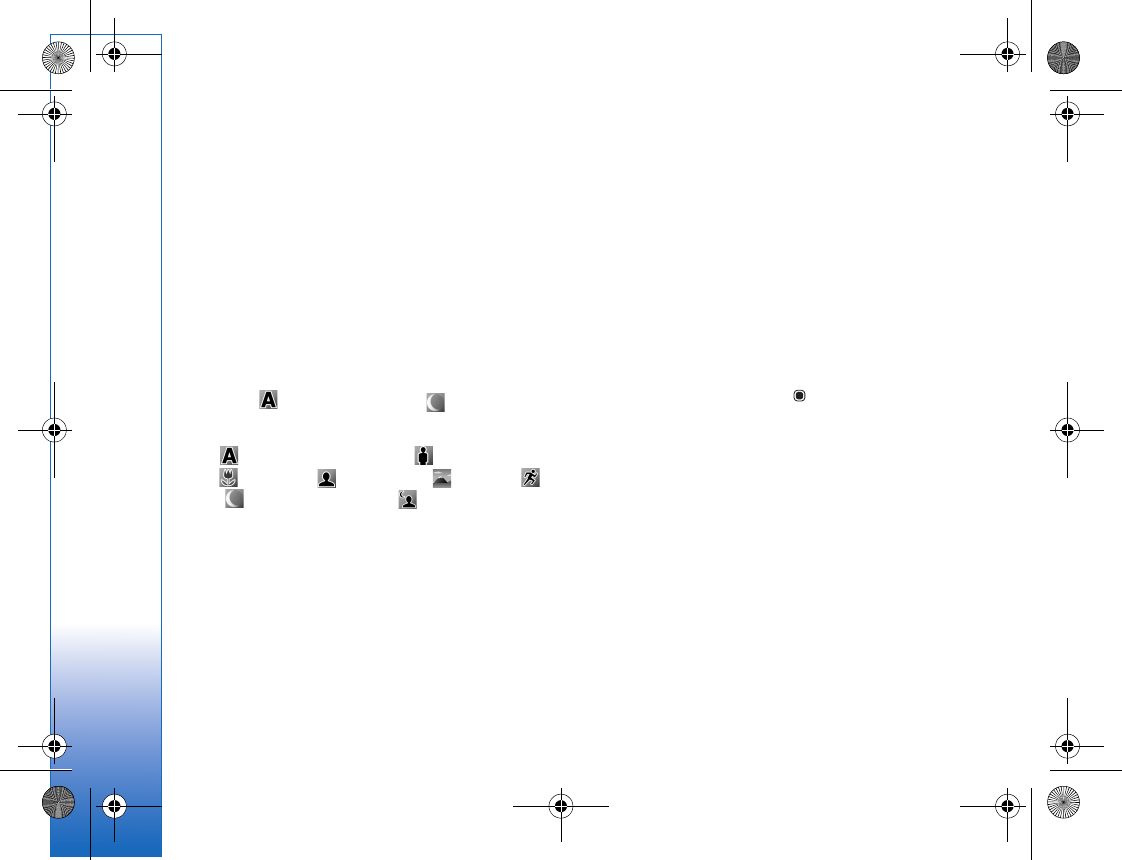
Camera
24
Scenes
A scene helps you to find the right color and lighting
settings for the current environment. Select a proper
scene for taking pictures or recording video clips from the
scene list. The settings of each scene have been set
according to a certain style or environment.
Scenes are only available in the main camera.
Use the scroll key to scroll through the active toolbar, and
select from the following options:
Video scenes
Automatic ( )(default) and Night ().
Image scenes
Auto () (default), User defined (), Close-up
mode(), Portrait (), Landscape (), Sports (),
Night (), and Night portrait ().
When you take pictures, the default scene is Auto. You
can select the User defined scene as the default scene.
To make your own scene suitable for a certain
environment, scroll to User defined, and select Options >
Change. In the user defined scene you can adjust different
lighting and color settings. To copy the settings of another
scene, select Based on scene mode and the desired scene.
Take pictures in a sequence
The sequence mode is available only in the main camera.
To set the camera to take six pictures or more in a
sequence (if enough memory is available), in the active
toolbar, select Switch to sequence mode.
To take six pictures, press the capture key. To take more
than six pictures, press and hold the capture key. To stop
taking pictures, release the capture key. You can capture
up to 100 images, depending on the available memory.
After you take the pictures, they are shown in a grid on the
display. To view a picture, press to open it.
You can also use the sequence mode with the self-timer.
When using the self-timer, the maximum number of
pictures is six.
To return to the sequence mode viewfinder, press the
capture key.
You in the picture—self-timer
The self-timer is available only in the main camera.
Use the self-timer to delay the capture so that you can
include yourself in the picture. To set the self-timer delay,
in the active toolbar, select Self timer > 2 seconds, 10
seconds, or 20 seconds. To activate the self-timer, select
R1108_en.book Page 24 Wednesday, March 5, 2008 9:53 AM
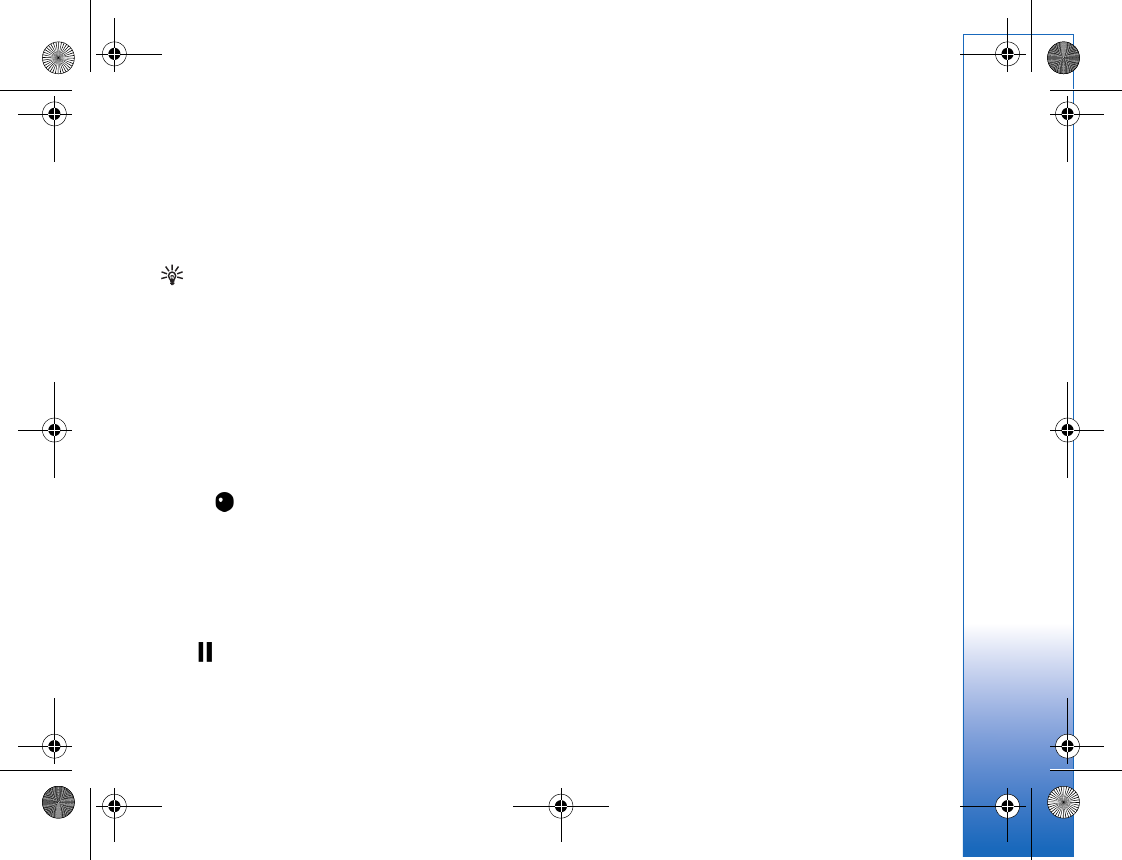
Camera
25
Activate. The device beeps when the timer is running. The
camera takes the picture after the selected delay elapses.
To switch off Self timer, in the active toolbar, select Self
timer > Off.
You can also use the self-timer in the sequence mode.
Tip! In the active toolbar, select Self timer > 2
seconds to keep your hand steady when taking a
picture.
Record videos
1To activate the main camera, open the slide. If the
camera is in the Image mode, select Switch to video
mode from the active toolbar.
2Press the capture key to start recording. In the portrait
mode, use the scroll key for recording. The red record
icon is shown and a tone sounds, indicating that
recording has started.
3Select Stop to stop recording. The video clip is
automatically saved to the Images & video folder of
Gallery. See ‘Gallery’, p. 28. The maximum length of the
video is 60 minutes (if enough memory is available).
To pause recording at any time, press Pause. The pause
icon ( ) blinks on the display. Video recording
automatically stops if recording is set to pause and there
are no keypresses within a minute. Press the capture key
again to resume recording.
To zoom in or out of the subject, press the zoom key on the
side of the device.
To make lighting and color adjustments before recording
a video, use the scroll key to scroll through the active
toolbar. See ‘Setup settings—Adjust color and lighting’,
p. 23 and ‘Scenes’, p. 24.
To free memory before recording a video, select Options >
Go to free memory (only available if you have backed up
images or video clips). See ‘Free memory’, p. 30.
To activate the front camera, select Options > Use
secondary camera.
Video capture indicators
The video viewfinder displays the following:
• The current capture mode indicator (1).
• The video stabilization indicator (2)
• The audio mute on indicator (3).
• The active toolbar (4), which you can scroll through
before recording to select the scene, white balance,
and color tone (the toolbar is not displayed during
recording).
R1108_en.book Page 25 Wednesday, March 5, 2008 9:53 AM
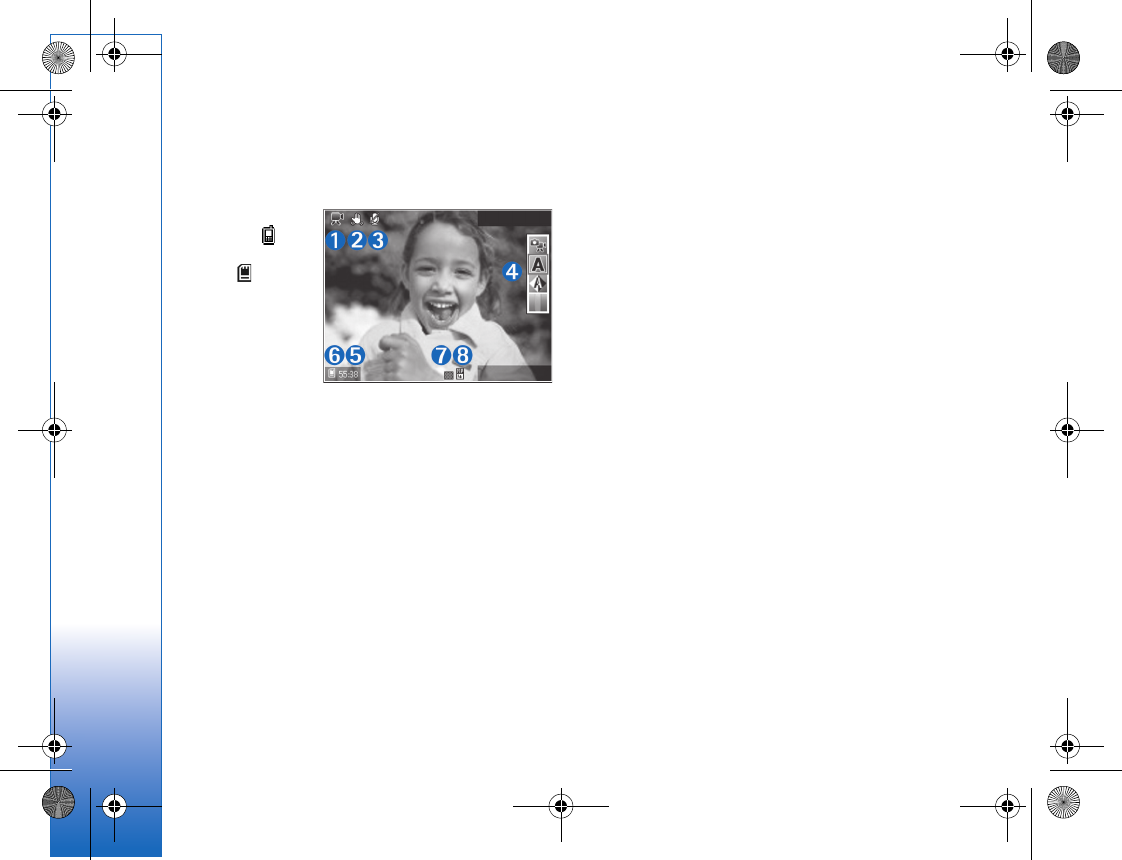
Camera
26
• The total available video recording time (5). When you
are recording, the current video length indicator also
shows the elapsed time and time remaining.
•The device
memory ( )
and memory
card ( )
indicators (6)
show where
videos are saved.
• The video quality
indicator (7)
indicates
whether the quality of the video is High, Normal, or
Sharing.
• The video clip file type (8).
To display all viewfinder indicators, select Options >
Show icons. Select Hide icons to display only the video
status indicators, and during the recording, the available
record time, zoom bar when zooming, and the selection
keys.
To activate the front camera, select Options > Use
secondary camera.
After recording a video
After you record a video clip, select the following from the
active toolbar (available only if Show captured video is set
to On in Video settings):
• To immediately play the video clip you just recorded,
select Play.
• If you do not want to keep the video, select Delete.
• To send the video clip in a multimedia message, or
using e-mail, Bluetooth connectivity, or infrared, or
upload it to a compatible online album, press the call
key, or select Send. For more information, see
‘Messaging’, p. 58, ‘Bluetooth connectivity’, p. 93, and
‘Share online’, p. 36. This option is not available during
an active call. You cannot send video clips saved in the
.mp4 file format in a multimedia message. You can also
send the video clip to a call recipient during an active
call. Select Send to caller.
• To record a new video clip, select New video.
To rename the video, select Options > Rename video.
Video settings
There are two kinds of settings for the video recorder:
Video setup and main settings. To adjust Video setup
settings, see ‘Setup settings—Adjust color and lighting’,
p. 23. The setup settings return to the default settings after
you close the camera, but the main settings remain the
R1108_en.book Page 26 Wednesday, March 5, 2008 9:53 AM
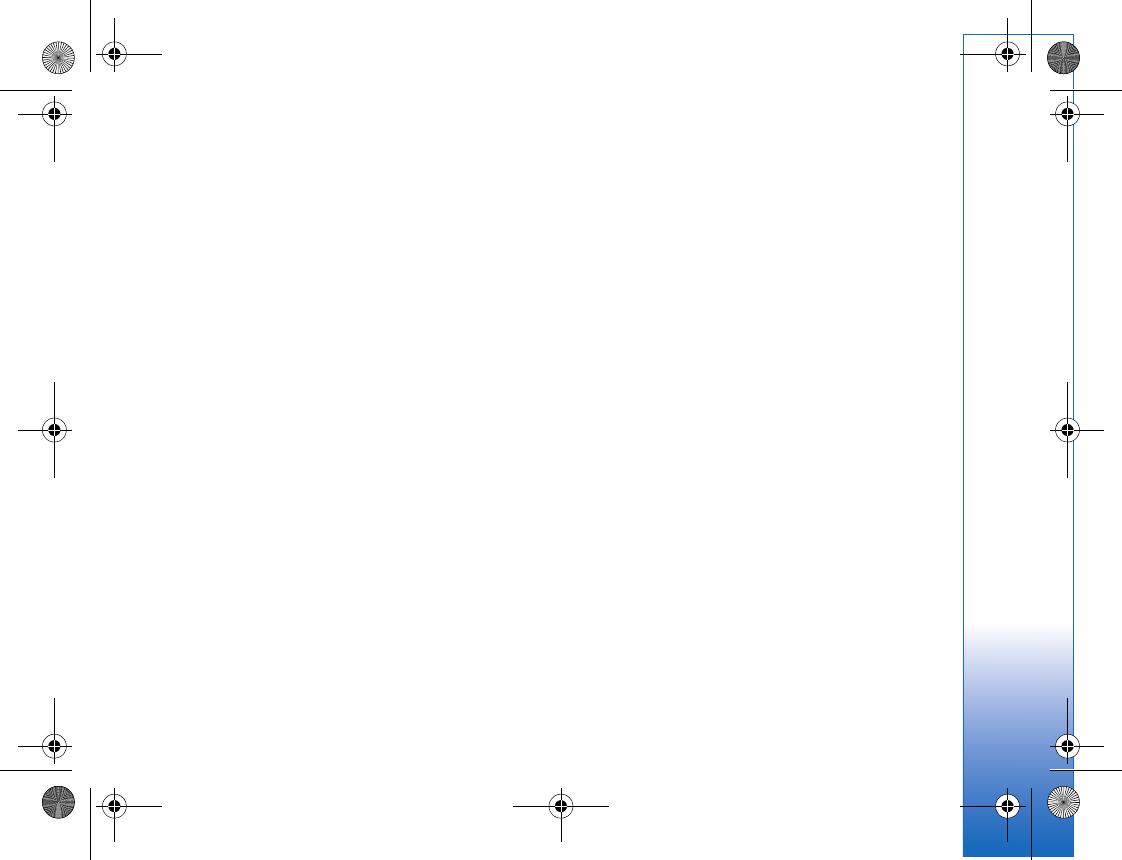
Camera
27
same until you change them again. To change the main
settings, select Options > Settings and from the
following:
Video quality—Set the quality of the video clip to High
(best quality for long term usage and playback on a
compatible TV or PC and mobile device), Normal (standard
quality for playback through your mobile device), or
Sharing (limited video clip size to send in a multimedia
message). If you want to view the video on a compatible TV
or PC, select High, which has CIF resolution (352x288) and
the .mp4 file format. To send the video clip through MMS,
select Sharing (QCIF resolution, .3gp file format). The size
of the video clip recorded with Sharing is limited to 300
KB (about 20 seconds in duration) so that it can be
conveniently sent as a multimedia message to a
compatible device.
Video stabilisation—Select On to reduce camera shake
when recording the video.
Audio recording—Select On if you want to record both
image and sound.
Add to album—Select whether you want to add the
recorded video clip to a certain album in Gallery. Select
Yes to open a list of available albums.
Show captured video—Select whether you want the first
frame of the recorded video clip to be shown on the display
after the recording stops. Select Play from the active
toolbar (main camera) or Options > Play (secondary
camera) to view the video clip.
Default video name—Define the default name for the
captured video clips.
Memory in use—Define the default memory store: device
memory or memory card (if inserted).
Restore camera settings—Select OK to return the default
values to the camera settings.
R1108_en.book Page 27 Wednesday, March 5, 2008 9:53 AM
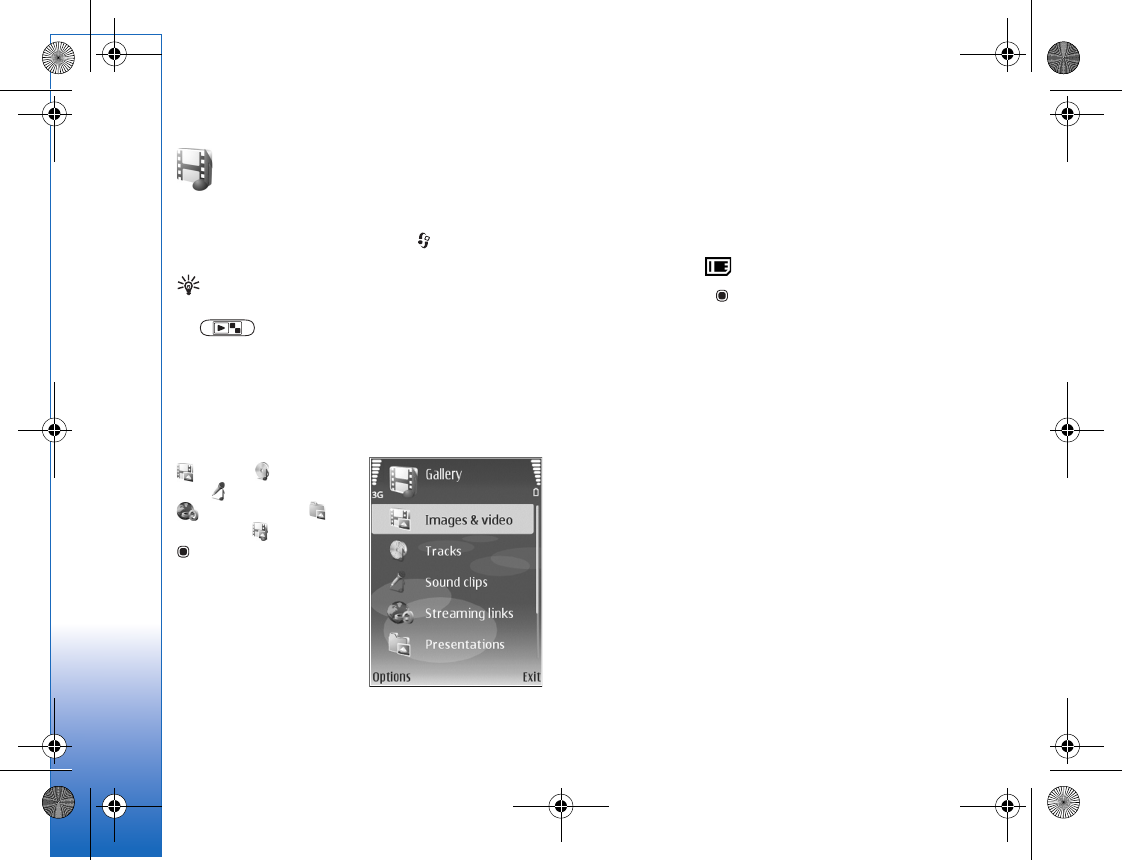
Gallery
28
Gallery
To store and organize your images, video clips, sound clips,
playlists, and streaming links, press , and select
Gallery.
Tip! If you are in another application, to view the last
stored picture in Gallery, press the review key
on the side of your device. To enter the
Images & video folder main view, press the review key
again.
View and browse files
Select Images & video
, Tracks , Sound
clips , Streaming links
, Presentations ,
or All files , and press
to open it.
You can browse and open
folders; and mark, copy,
and move items to
folders. You can also
create albums; and mark,
copy, and add items to
albums. See ‘Albums’, p. 30.
Files stored on your compatible memory card (if inserted)
are indicated with .
To open a file, press . Video clips, .ram files, and
streaming links are opened and played in RealPlayer, and
music and sound clips in Music player. See ‘RealPlayer’, p.
51, and ‘Music player’, p. 39.
To copy or move files to the memory card (if inserted) or to
device memory, select a file and Options > Move and
copy > Copy to memory card or Move to memory card,
or Copy to phone mem. or Move to phone mem..
To download tracks or sound clips into Gallery using the
browser, in the Tracks or Sound clips folders, select Track
downl., or Sound downl.. To download images or videos, in
the Images & video folder, select the download icon. The
browser opens, and you can select a bookmark from which
the site can download.
Images and video clips
Pictures taken and video clips recorded with the camera
are stored in the Images & video folder in Gallery. Images
and video clips can also be sent to you in a multimedia
R1108_en.book Page 28 Wednesday, March 5, 2008 9:53 AM
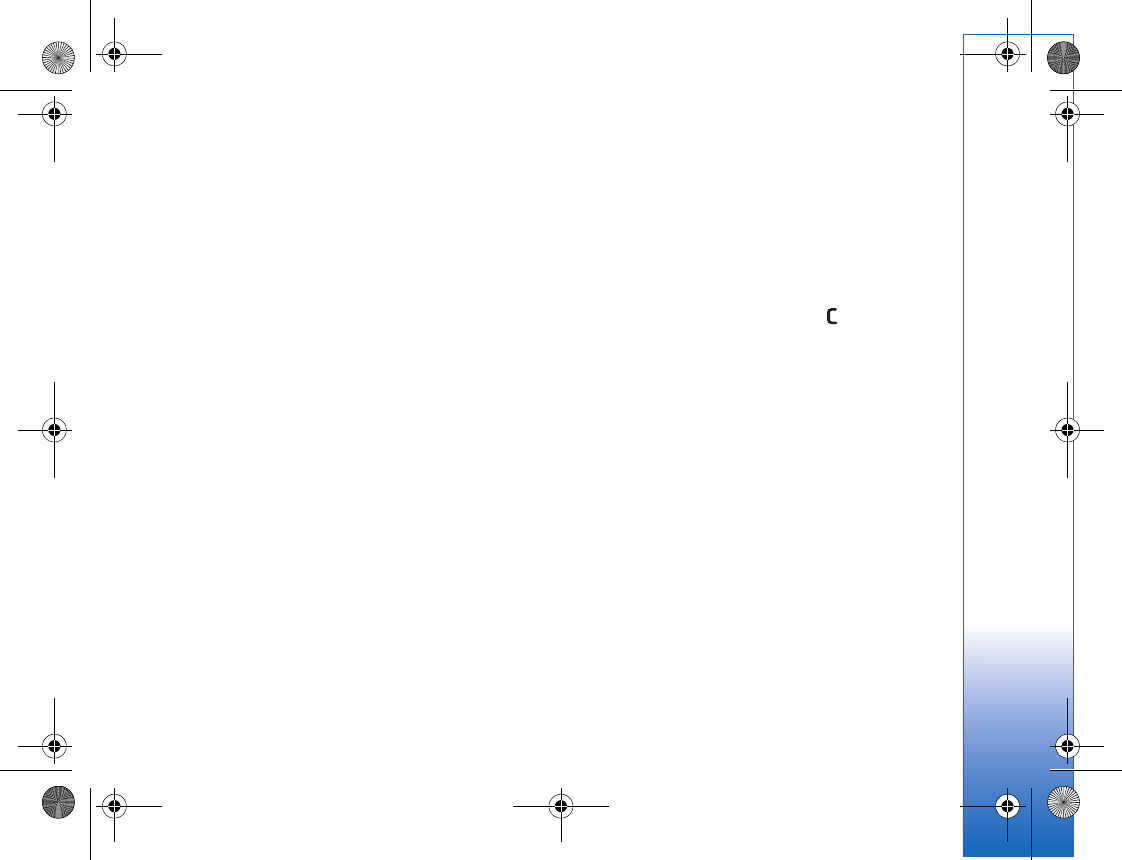
Gallery
29
message, as an e-mail attachment, through Bluetooth
connectivity, or by using infrared. To be able to view a
received image or video clip in Gallery or in RealPlayer,
you must save it in the device memory or on a compatible
memory card (if inserted).
Open the Images & video folder in Gallery. The images and
video clip files are in a loop, and ordered by date. The
number of files is displayed. To browse the files one by one,
scroll left or right. To browse files in groups, scroll up or
down.
When the image is opened, to zoom in on an image, press
the zoom key on the side of your device. The zooming ratio
is shown on the lower left part of the display. The zooming
ratio is not stored permanently.
To rotate the selected image left or right, select Options >
Rotate.
To edit a video clip or a photo, select Options> Edit. An
image editor or a video editor opens. See ‘Edit video clips’,
p. 32. See ‘Edit images’, p. 31.
To create custom video clips, select a video clip or several
clips in the gallery, and select Options > Edit. See ‘Edit
video clips’, p. 32.
To print your images on a compatible printer, or to store
them on your memory card (if inserted) for printing, select
Options> Print. See ‘Image print’, p. 34. You can also tag
images for later printing to the Print Basket in Gallery. See
‘Print Basket’, p. 30.
To add an image or a video clip to an album in the gallery,
select Options > Albums > Add to album. See ‘Albums’,
p. 30.
To use the picture as a background image, select the
picture and Options > Use image > Set as wallpaper.
To delete an image or video clip, press .
Active toolbar
In the Images & video folder, you can use active toolbar
as a shortcut to select different tasks. The active toolbar is
available only when you have selected an image or a video
clip.
In the active toolbar, scroll up or down to different items,
and select them by pressing the scroll key. The available
options vary depending on the state you are in and on
whether you have selected an image or a video clip. You
can also define whether the active toolbar is always visible
on the display or activated by a key press.
If you want the active toolbar to be visible on the display,
select Options > Show icons.
If you want the active toolbar to be visible only a while
when you need it, select Options > Hide icons. To activate
the active toolbar, press the scroll key.
R1108_en.book Page 29 Wednesday, March 5, 2008 9:53 AM
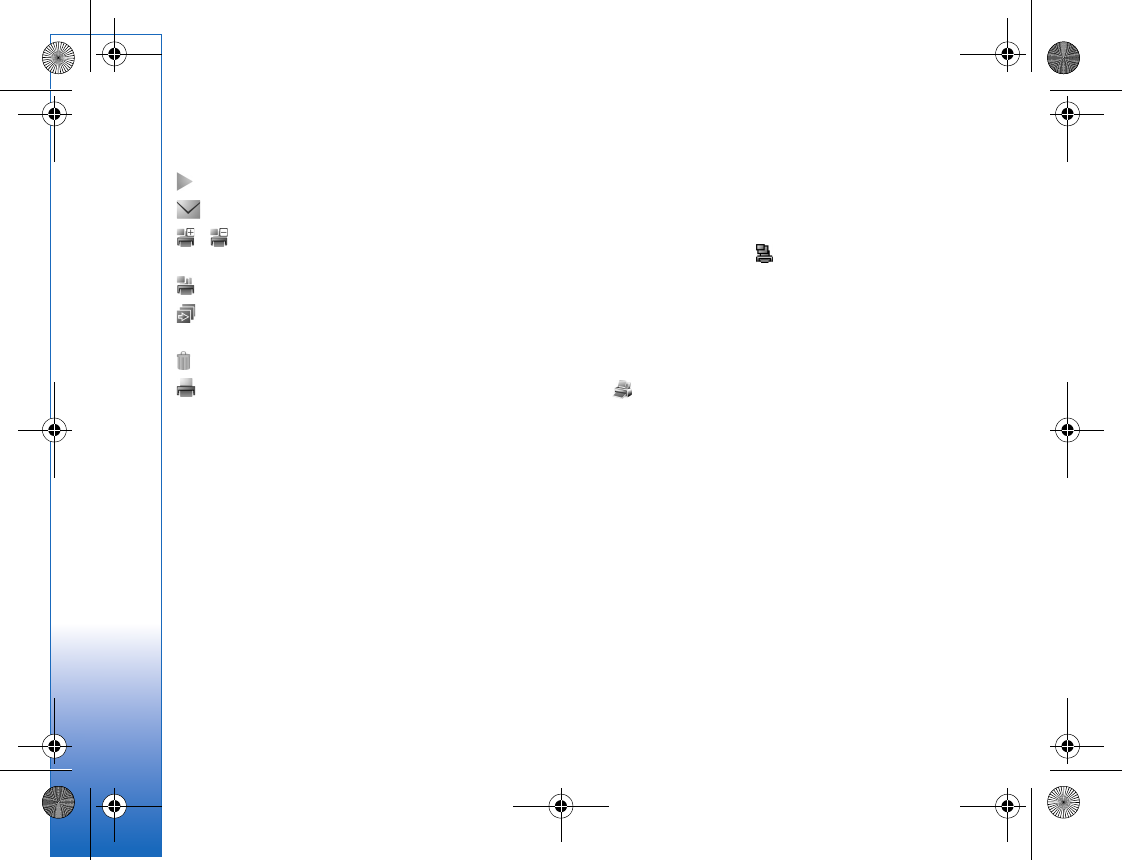
Gallery
30
Select from the following:
to play the selected video clip
to send the selected image or video clip
/ to add or remove an image from the Print Basket.
See ‘Print Basket’, p. 30.
to view the images in the Print Basket
to start a slide show of the images in the selected
album
to delete the selected image or video clip
to print the viewed image
The available options may vary depending on the view you
are in.
Free memory
To reduce the resolution and file size of images saved in
Gallery and free memory for new pictures, select
Options > Shrink. To back up the images first, copy them
to a compatible PC or other location. Selecting Shrink
reduces the resolution of an image to 640x480.
To increase free memory space after you have copied
items to other locations or devices, select Options > Free
memory. You can browse a list of files you have copied. To
remove a copied file from Gallery, select Options>
Delete.
Print Basket
You can tag images to the Print Basket, and print them
later with a compatible printer or in a compatible printing
kiosk, if available. See ‘Image print’, p. 34. The tagged
images are indicated with in the Images & video
folder and albums.
To tag an image for later printing, select an image, and
Add to Print Basket from the active toolbar.
To view the images in the Print Basket, select View Print
Basket from the active toolbar, or select the Print Basket
icon from the Images & video folder (available only
when you have added pictures to the Print Basket).
To remove an image from the Print Basket, select an image
in the Images & video folder or in an album, and Remove
from print from the active toolbar.
Albums
With albums you can conveniently manage your images
and video clips. To view the albums list, in the Images &
video folder, select Options > Albums > View albums.
To add a picture or a video clip to an album in the gallery,
scroll to a picture or video clip, and select Options >
Albums > Add to album. A list of albums opens. Select the
R1108_en.book Page 30 Wednesday, March 5, 2008 9:53 AM
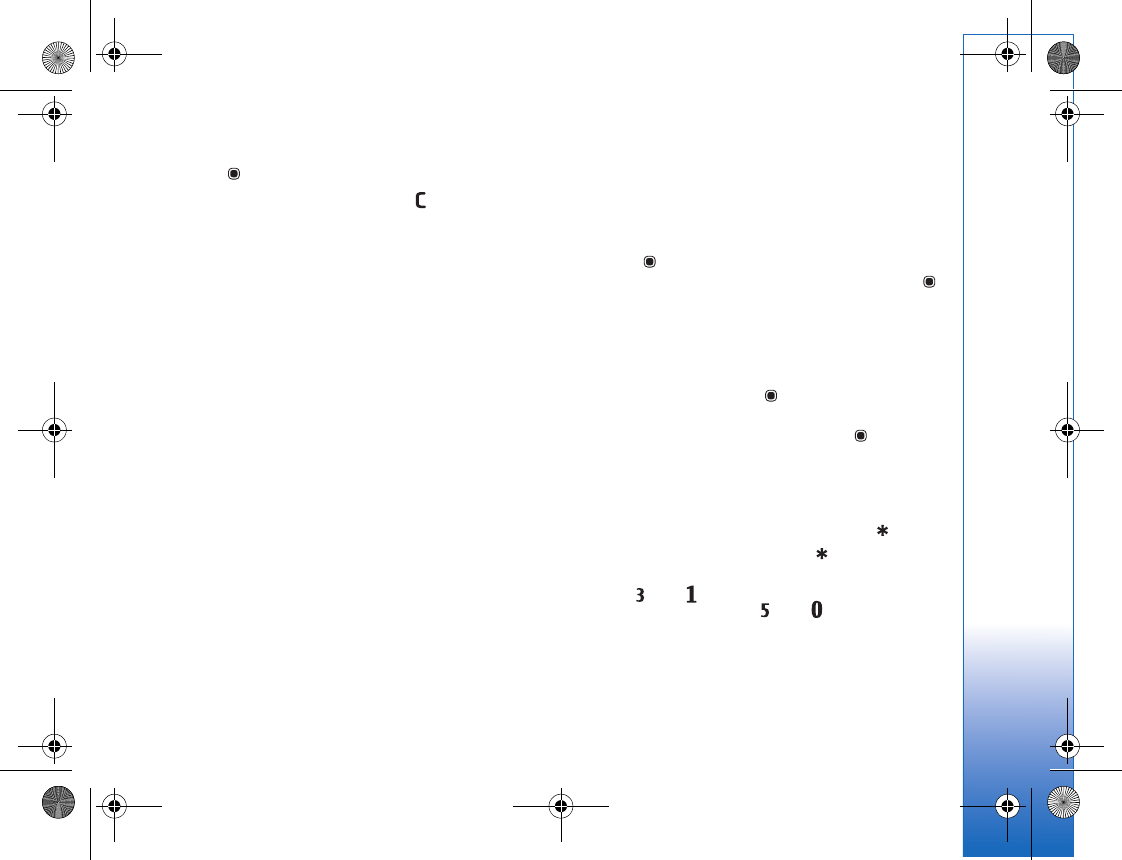
Gallery
31
album to which you want to add the picture or video clip,
and press .
To remove a file from an album, press . The file is not
deleted from the Images & video folder in Gallery.
To create a new album, in the albums list view, select
Options> New album.
Edit images
To edit the pictures after taking them, or the ones already
saved in Gallery, select Options > Edit.
Select Options> Apply effect to open a grid where you
can select different edit options indicated by small icons.
You can crop and rotate the image; adjust the brightness,
color, contrast, and resolution; and add effects, text, clip
art, or a frame to the picture.
Crop image
To crop an image, select Options > Apply effect > Crop.
To crop the image size manually, select Manual or select a
predefined aspect ratio from the list. If you select Manual,
a cross appears in the upper left corner of the image. Move
the scroll key to select the area to crop, and select Set.
Another cross appears in the lower right corner. Again
select the area to be cropped. To adjust the first selected
area, select Back. The selected areas form a rectangle,
which forms the cropped image.
If you selected a predefined aspect ratio, select the upper
left corner of the area to be cropped. To resize the
highlighted area, use the scroll key. To freeze the selected
area, press . To move the area within the picture, use
the scroll key. To select the area to be cropped, press .
Reduce redness
To reduce redness of the eyes in an image, select
Options > Apply effect > Red eye reduction. Move the
cross onto the eye, and press . A loop appears on the
display. To resize the loop to fit the size of the eye, move
the scroll key. To reduce the redness, press .
Useful shortcuts
Shortcuts in the image editor:
• To view an image in the full screen, press . To
return to the normal view, press again.
• To rotate an image clockwise or counterclockwise,
press or .
• To zoom in or out, press or .
• To move on a zoomed image, scroll up, down, left, or
right.
R1108_en.book Page 31 Wednesday, March 5, 2008 9:53 AM
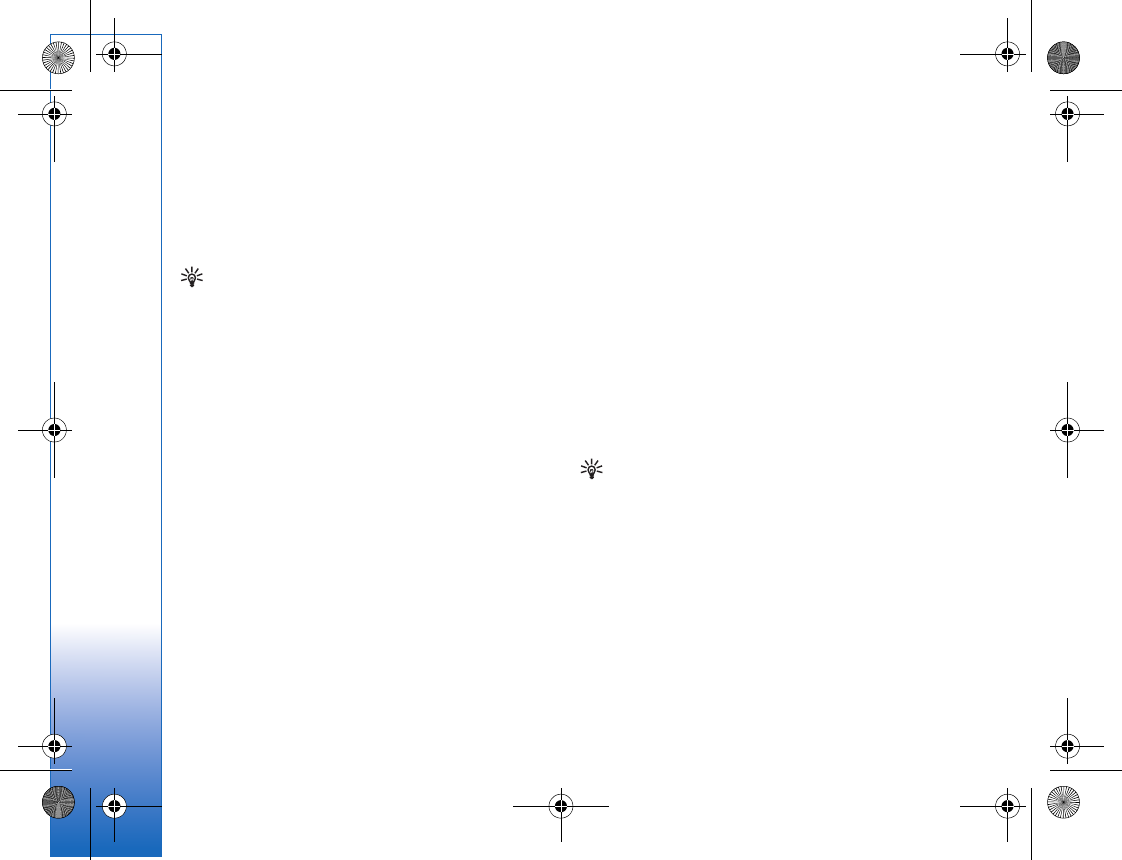
Gallery
32
Edit video clips
To edit video clips in Gallery and create custom video
clips, scroll to a video clip, and select Options > Edit >
Merge, Change sound, Add text, Cut, or Create muvee.
See ‘Gallery’, p. 28.
Tip! You can use Movie to create custom video clips.
Select the video clips and images you want to create a
muvee with and select Options > Edit > Create
muvee. See ‘Movie director’, p. 52.
The video editor supports video file formats 3gp and .mp4,
and sound file formats .aac, .amr, .mp3 and .wav.
The custom video clips are automatically saved in the
Images & video in Gallery. The clips are saved on the
memory card. If the memory card is not available, the
device memory is used.
Add images, video, sound, and text
You can add images, video clips, and text to a video clip
selected in Gallery to create custom video clips.
To combine an image or a video clip with the selected
video clip, in the Images & video folder, select Options>
Edit> Merge> Image or Video clip. Select the desired file,
and press Select.
To add a new sound clip and replace the original sound clip
in the video clip, select Options> Edit> Change sound and
a sound clip.
To add text to the beginning or the end of the video clip,
select Options > Edit> Add text, enter the text you want
to add, and press OK. Then select where you want to add
the text: Beginning or End.
Cut video clip
You can trim the video clip, and add start and end marks
to exclude parts from the video clip. In the Images & video
folder, select Options > Edit> Cut.
To play the selected video clip from the start, select
Options > Play.
Tip! To take a snapshot of a video clip, press the edit
key.
To select which parts of the video clip are included in the
custom video clip, and define the start and end points for
them, scroll to the desired point on the video, and select
Options > Start mark or End mark. To edit the start or end
point of the selected part, scroll to the desired mark, and
press the scroll key. You can then move the selected mark
forwards or backwards on the timeline.
To remove all the marks, select Options> Remove > All
marks.
R1108_en.book Page 32 Wednesday, March 5, 2008 9:53 AM
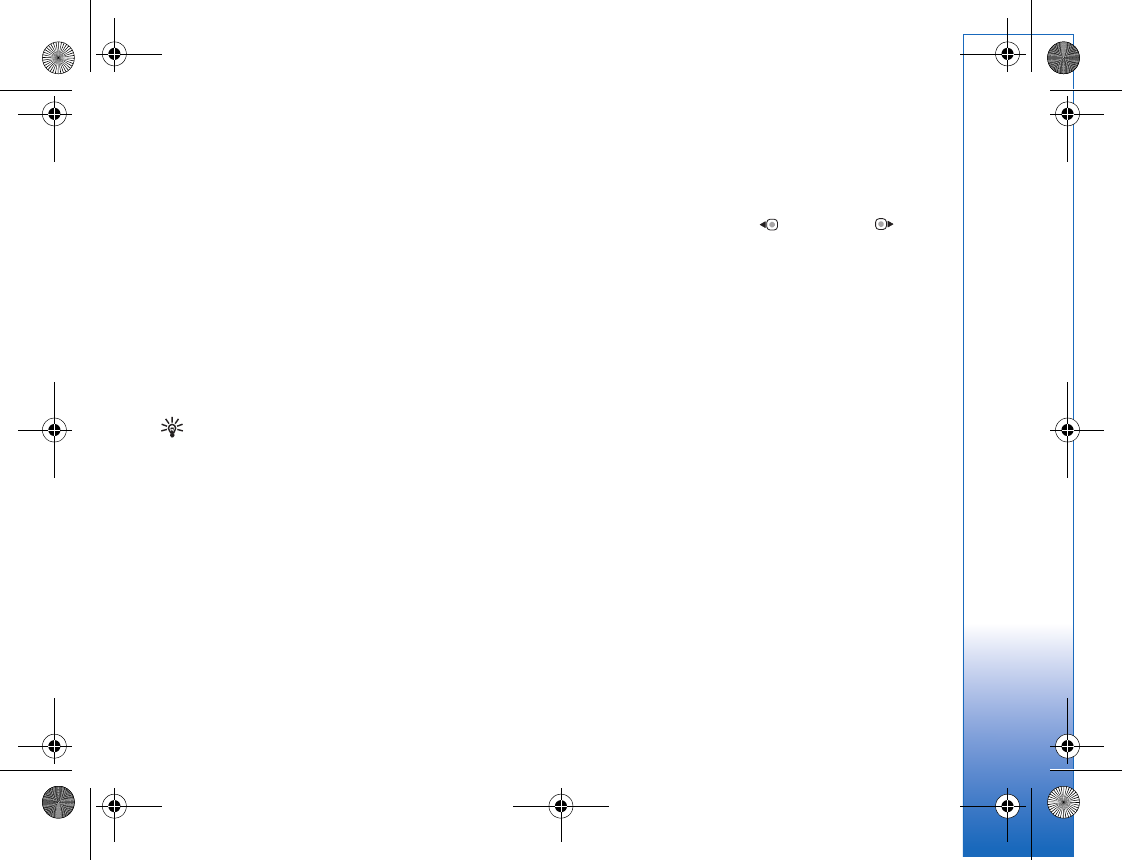
Gallery
33
To preview the video clip, select Options > Play marked
section. To move on the timeline, scroll left or right.
To stop playing the video clip, press Pause. To continue
playing the clip, select Options > Play. To return back to
the cut video view, press Back.
To save the changes, and return to Gallery, press Done.
Send videos
To send the video, select Options> Send > Via
multimedia, Via e-mail, Via Bluetooth, Via infrared, or
Web upload. Contact your service provider for details of
the maximum multimedia message size that you can send.
Tip! If you want to send a video clip that is over the
maximum multimedia message size allowed by your
service provider, you can send the clip using Bluetooth
wireless technology. See ‘Send data using Bluetooth
connectivity’, p. 95. You can also transfer your videos to a
compatible PC using Bluetooth connectivity, a USB data
cable, or by using a compatible memory card reader
enhancement.
Slide show
In the active toolbar, select Start slide show to view a
slide show of images in full screen. The slide show starts
from the selected file. Select from the following:
•Pause—to pause the slide show
•Continue—to resume the slide show, if paused
•End—to close the slide show
To browse the images, press (previous) or (next)
(available only when Zoom and pan is off).
To adjust the tempo of the slide show, before starting the
slide show, select Options > Slide show > Settings>
Delay between slides.
To make the slide show move smoothly from one slide to
another, and let the gallery randomly zoom into and out
of the images, select Zoom and pan.
To add sound to the slide show, select Options > Slide
show > Settings and from the following:
•Music—Select On or Off.
•Track—Select a music file from the list.
To decrease or increase the volume, use the volume key on
the side of your device.
Presentations
With presentations, you can view SVG (scalable vector
graphics) files, such as cartoons and maps. SVG images
maintain their appearance when printed or viewed with
different screen sizes and resolutions. To view SVG files,
R1108_en.book Page 33 Wednesday, March 5, 2008 9:53 AM
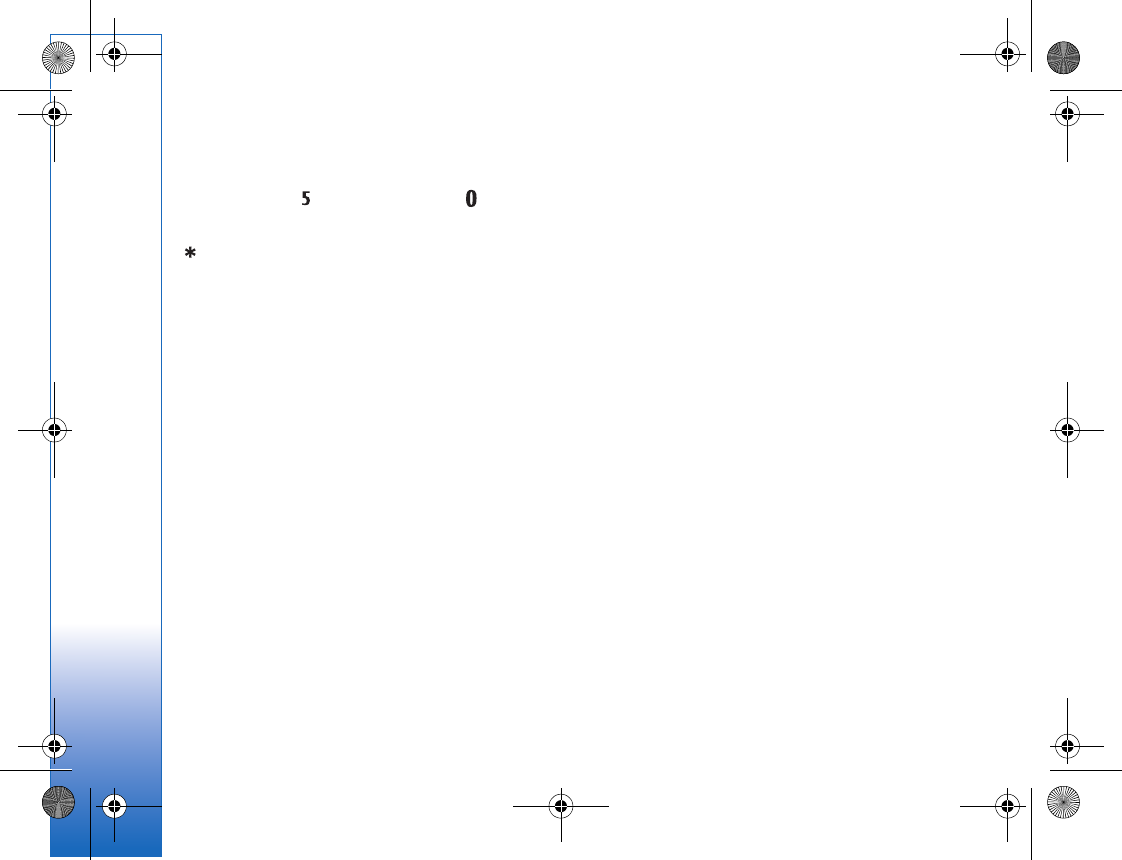
Gallery
34
select the Presentations folder, scroll to an image, and
select Options > Play.
To zoom in, press . To zoom out, press .
To switch between full screen and normal screen, press
.
Image print
To print images with Image print, select the image you
want to print, and the print option in the gallery, camera,
image editor, or image viewer.
Use Image print to print your images using a compatible
USB data cable or Bluetooth connectivity. You can also
store images to a compatible memory card (if available),
and print them using a compatible printer that has a
memory card reader.
You can only print images that are in .jpeg format. The
pictures taken with the camera are automatically saved in
.jpeg format.
To print to a printer compatible with PictBridge, connect
the data cable before you select the print option.
Printer selection
When you use Image print for the first time, a list of
available compatible printers is displayed after you select
the image. Select a printer. The printer is set as the default
printer.
If you have connected a printer compatible with PictBridge
using a compatible data cable, for instance the Nokia
Connectivity Cable CA-53, the printer is automatically
displayed.
If the default printer is not available, a list of available
printing devices is displayed.
To change the default printer, select Options > Settings >
Default printer.
Print preview
The print preview view opens only when you start printing
an image in the gallery.
The selected images are displayed using predefined
layouts. To change the layout, scroll left and right through
the available layouts for the selected printer. If the images
do not fit on a single page, scroll up or down to display the
additional pages.
Print settings
The available options vary, depending on the capabilities of
the printing device you selected.
To set a default printer, select Options > Default printer.
R1108_en.book Page 34 Wednesday, March 5, 2008 9:53 AM
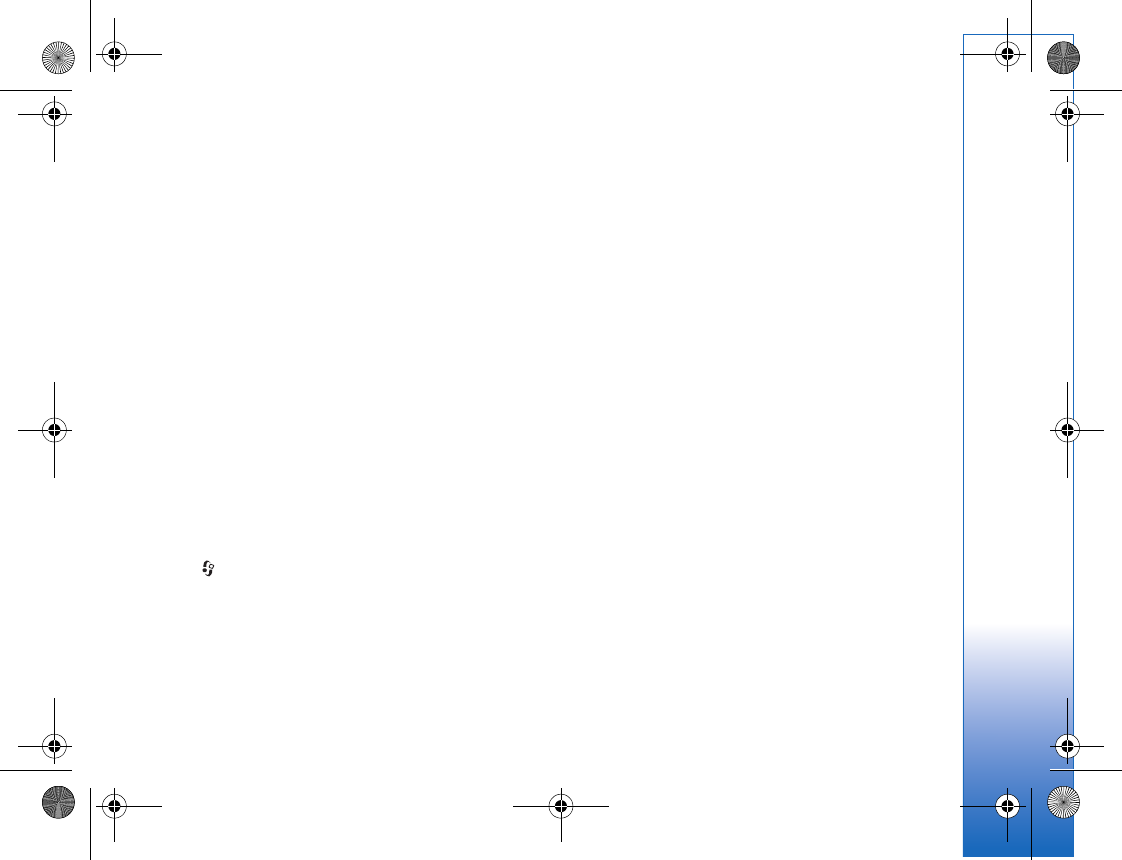
Gallery
35
To select the paper size, select Paper size, the size of paper
from the list, and OK. Select Cancel to return to the
previous view.
Print online
With the Print online application you can order prints of
your images online directly to your home, or to a store
where you can pick them up. You can also order different
products with the selected image, such as mugs or mouse
pads. The available products depend on the service
provider.
In order to use Print online, you must have at least one
printing service configuration file installed. The files can be
obtained from printing service providers that support Print
online.
Order prints
You can only print images that are in .jpeg format.
Press , and select Gallery > Images & video.
1Select an image or images in Gallery, and Options >
Print > Order prints.
2Select a service provider from the list.
3Select Options and from the following:
Open—to start the connection to the service provider.
Info—to view information about the service provider,
for example, the address of a store, contact details, and
Web links to more information on the service provider.
Remove—to remove the service provider from the list.
Log—to view the details of the previous orders.
4If the service provided is a single shop service, you are
connected to the service provider, and the images
preview view displays the images you selected in
Gallery. Select Options and from the following:
Preview—to view the image before ordering a print.
Scroll up or down to view the images.
Order now—to submit your order.
Change product order—to adjust the product details
and number of copies for the selected image. In the
product order view, you can select which product and
of what type you want to order. The available options
and products vary depending on the service provider.
Scroll left or right to view and change the image
details of the other images.
Change customer info—to change the customer and
order information.
Add image—to add more images to the order.
Remove image—to remove images from the order.
5If the service offered is a retailer group service, you are
connected to the service provider, and need to select a
store from where you want to collect your prints. The
images preview view displays the images you selected
in Gallery. Depending on the service provider, you may
R1108_en.book Page 35 Wednesday, March 5, 2008 9:53 AM
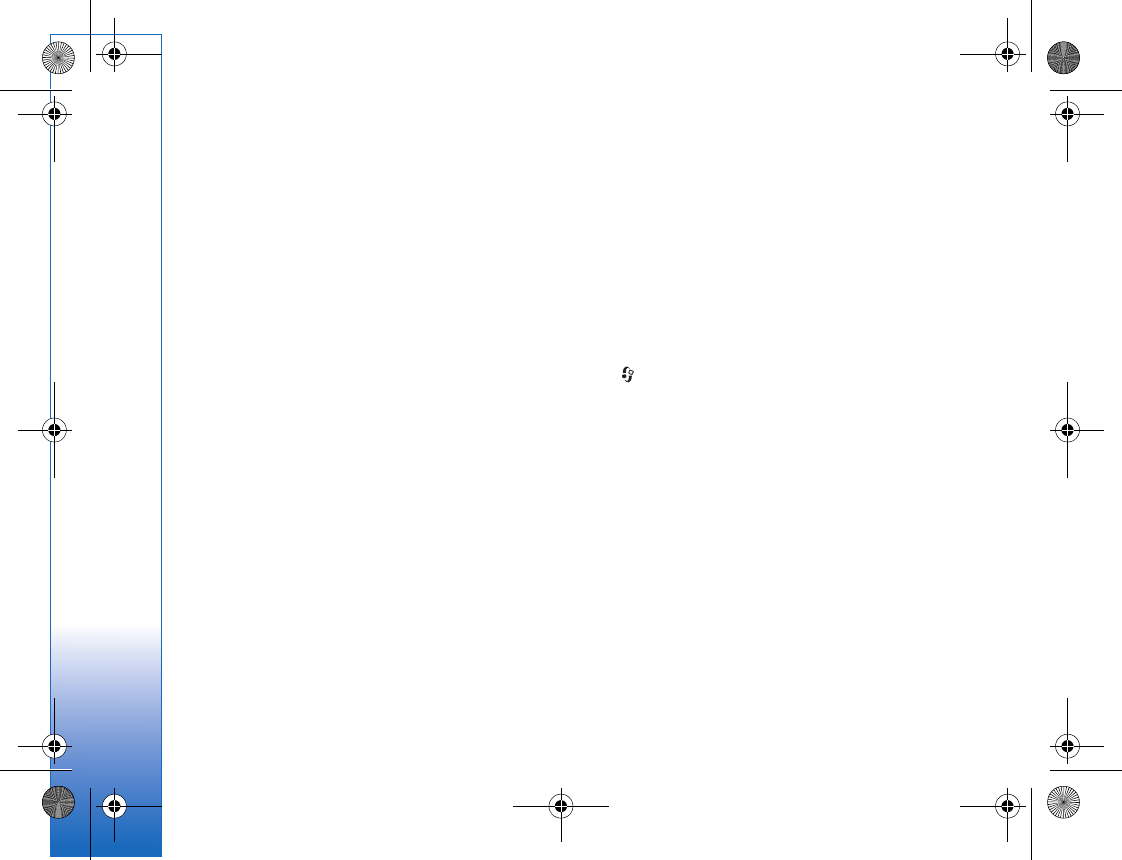
Gallery
36
have options for browsing and searching stores with
different search criteria.
You can check details, such as opening hours of the
selected store, by selecting Options > Info (if provided
by the service provider).
Scroll to the desired retail pick up point, and press the
scroll key. You can preview the images before ordering,
change image details or customer information, or add
or remove images from the order. To order the prints,
select Options > Order now.
Share online
With the Online share application, you can share your
images and videos in compatible online albums, weblogs,
or other online sharing services on the Web. You can
upload content, save unfinished posts as drafts and
continue later, and view the content of the albums. The
supported content types may vary depending on the
service provider.
Get started
To use Online share, you must subscribe to the service
with an online image sharing service provider. You can
usually subscribe to the service on the Web page of the
service provider. Contact your service provider for details
on subscribing to the service. For more information on
compatible service providers, see www.nokia.com/support.
When you open the service for the first time in the Online
share application, you are prompted to create a new
account and define the user name and password for it. You
can access the account settings later through Options >
Settings in the Online share application. See ‘Online
sharing settings’, p. 37.
Upload files
Press , and select Gallery > Images & video, the files
you want to upload, and Options > Send > Web upload.
You can access the Online share application also from the
main camera.
The Select service view opens. To create a new account for
a service, select Options > Add new account or the
service icon with the text Create new in the services list.
If you have created a new account offline, or modified an
account or service settings through a Web browser on a
compatible PC, to update the services list in your device,
select Options > Retrieve services. To select a service,
press the scroll key.
When you select the service, the selected images and
videos are shown in the edit state. You can open and view
the files, reorganize them, add text to them, or add new
files.
R1108_en.book Page 36 Wednesday, March 5, 2008 9:53 AM
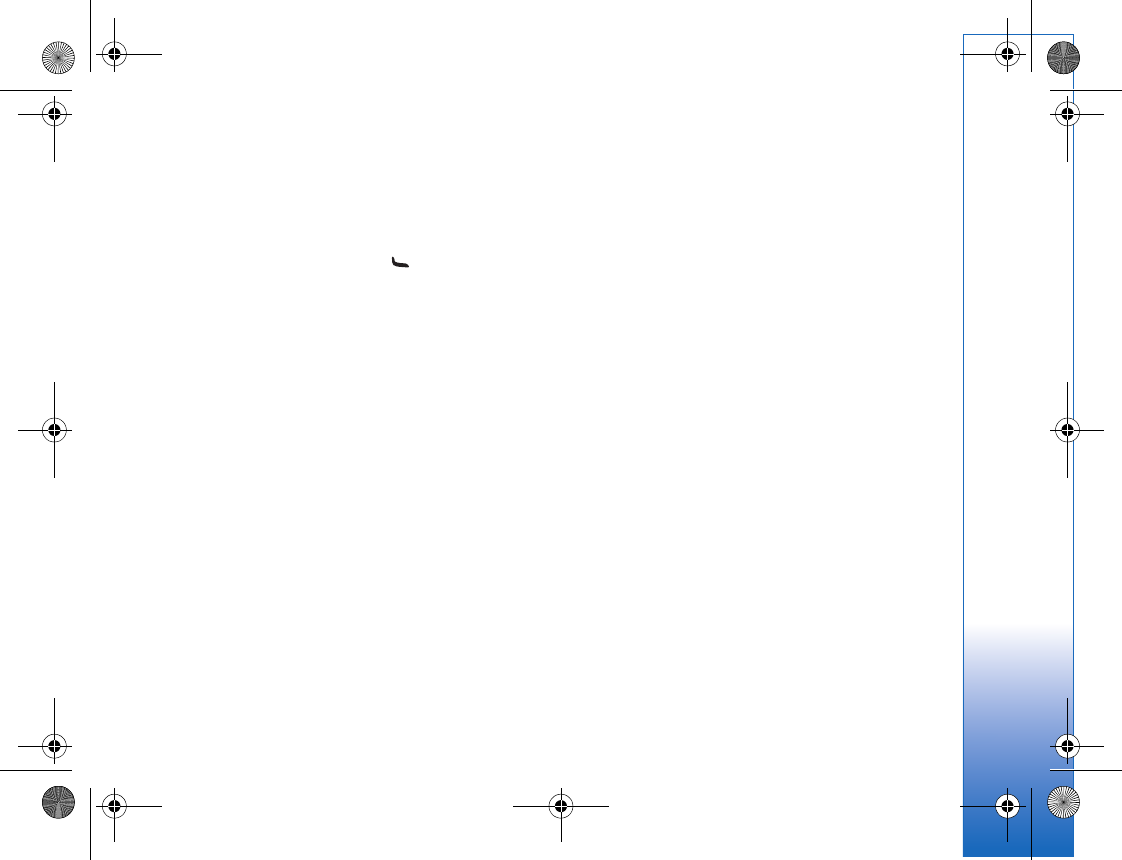
Gallery
37
To cancel the Web upload process, and save the created
post as a draft, select Back > Save as draft. If the
uploading has already started, select Cancel > Save as
draft.
To connect to the service and upload the files to the Web,
select Options > Upload, or press .
Open online service
To view uploaded images and videos in the online service,
and draft and sent entries in your device, in Images &
video select Options > Open online service. If you have
created a new account offline, or modified an account or
service settings through a Web browser on a compatible
PC, select Options > Retrieve services to update the
services list in your device. Select a service from the list.
After you open a service, select from the following:
•Open in Web browser—to connect to the selected
service and view the uploaded and draft albums in the
Web browser. The view may vary depending on the
service provider.
•Drafts—to view and edit the draft entries, and upload
them to the Web
•Sent—to view the 20 latest entries created through
your device
•New post—to create a new entry
The available options may vary depending on the service
provider.
Online sharing settings
To edit the Online share settings, in the Online share
application, select Options > Settings.
My accounts
In My accounts, you can create new accounts or edit
existing accounts. To create a new account, select
Options > Add new account. To edit an existing account,
select an account and Options > Edit. Select from the
following:
Account name—to enter the desired name for the account
Service provider—to select the service provider you want
to use. You cannot change the service provider for an
existing account, you must create a new account for the
new service provider. If you delete an account in My
accounts, the services related to the account are also
deleted from your device, including the sent items for the
service.
User name and Password—to enter the user name and
password you created for your account when you
registered to the online service.
Upload image size—to select the size in which the images
are uploaded to the service.
R1108_en.book Page 37 Wednesday, March 5, 2008 9:53 AM
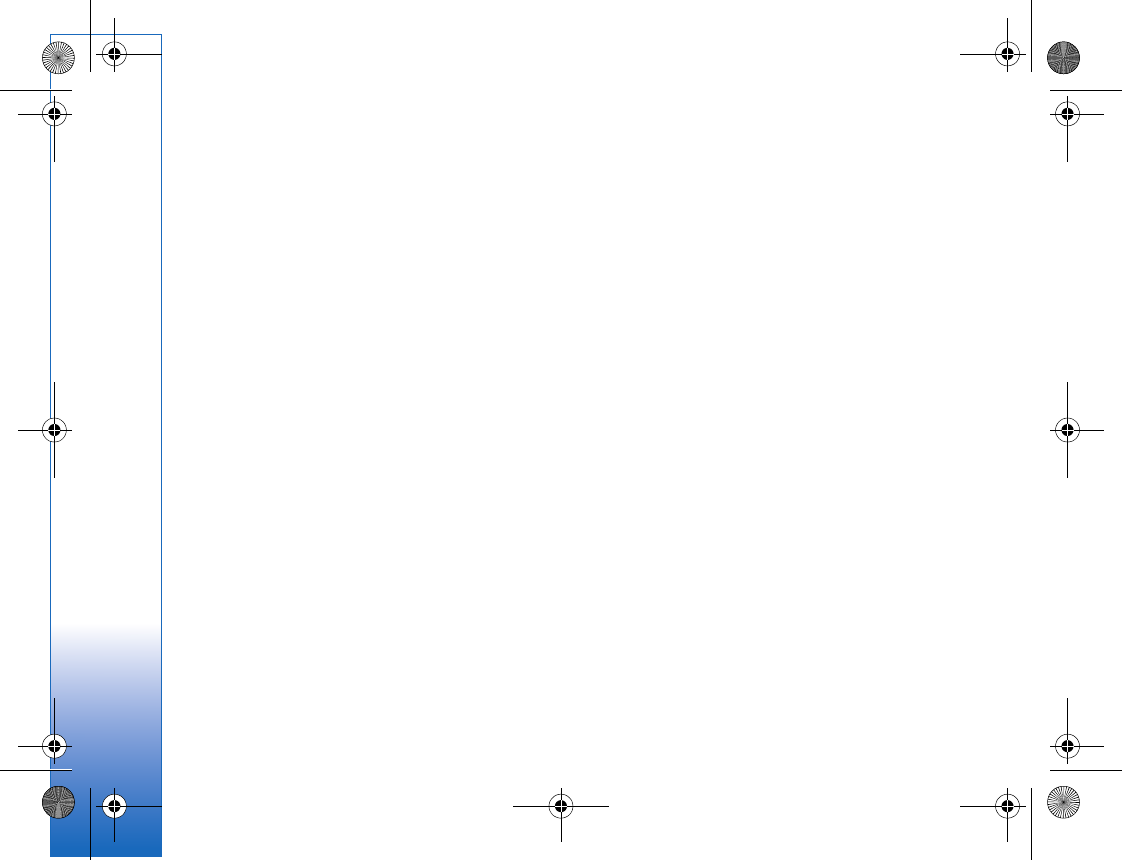
Gallery
38
Application settings
Display image size—to select the size in which the image
is shown on the display of your device. This setting does
not affect the upload image size.
Display text size—to select the font size used to display
text in draft and sent entries, or when you add or edit text
to a new entry.
Advanced
Service providers—to view or edit service provider
settings, add a new service provider, or view details of a
service provider. If you change the service provider, all the
My accounts information for the previous service
provider is lost. You cannot change the settings of
predefined service providers.
Default access point—to change the access point used to
connect to the online service, select the access point you
want.
R1108_en.book Page 38 Wednesday, March 5, 2008 9:53 AM
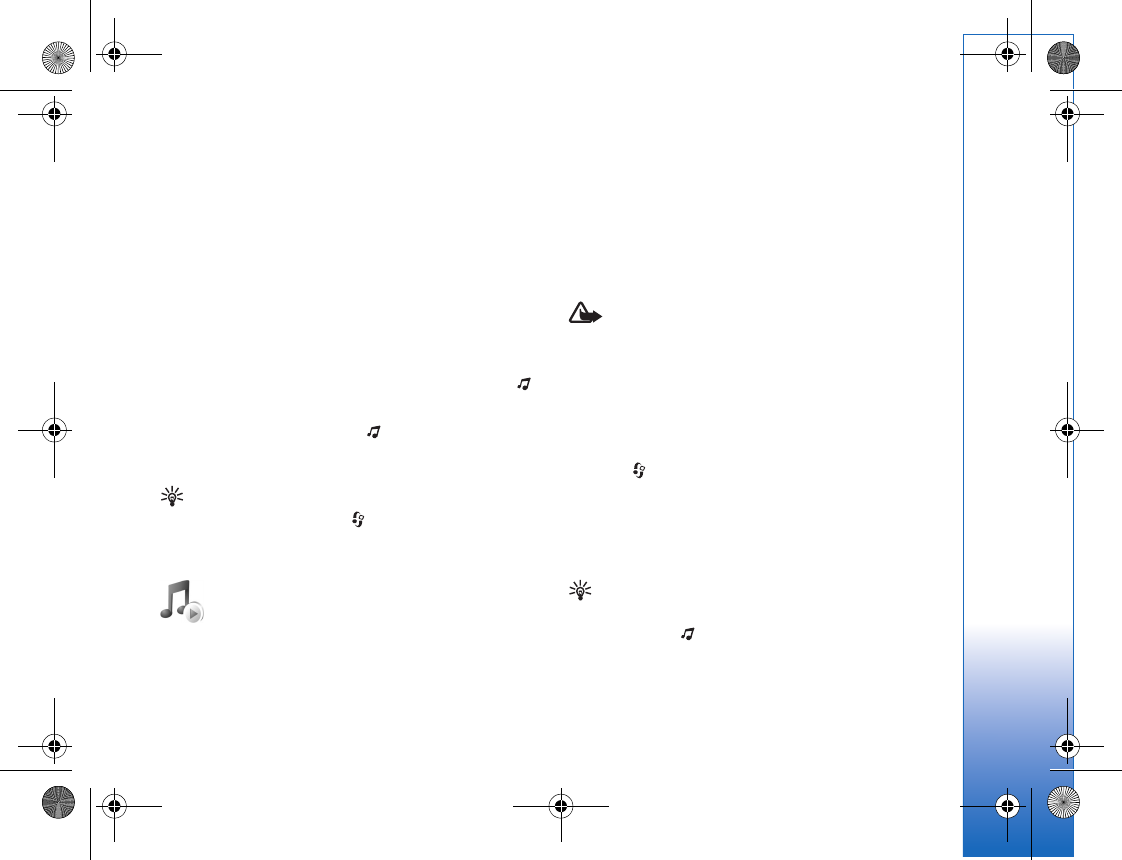
Media applications
39
Media applications
Music access key (Nokia N73
Music Edition)
This section describes the music access key in your Nokia
N73 Music Edition device.
With the music access key, you have quick access to Music
player and Radio.
To open the Now playing view in Music player, press .
To create playlists, see ‘Playlists’, p. 43.
To open Radio, press and hold . To listen to Radio and
configure the settings, see ‘Visual Radio’, p. 49. To close
Radio, select Exit.
Tip! To leave the applications open and music playing
in the background, press twice to return to the
standby mode.
Music player
Music player supports files with extensions AAC, AAC+,
eAAC+, MP3, WMA, WAV, 3GP, 3GPP, MPEG, MP4, M4A,
DCF, and M3U. Music player does not necessarily support
all features of a file format or all the variations of file
formats.
For more information on player, select Options > Help for
context sensitive help.
Warning: Listen to music at a moderate level.
Continuous exposure to high volume may damage your
hearing. Do not hold the device near your ear when the
loudspeaker is in use, because the volume may be
extremely loud.
Play a song
1Press , and select Music.
2Move the scroll key to navigate to a preferred song,
artist, or other category, and press the scroll key to
open category lists.
3Press the scroll key to start playing the selected song.
Use the scroll key to navigate the controls.
Tip! To open the Now playing view of the player from
any other view on your Nokia N73 Music Edition
device, press . To return to the previous view, press
it again.
To select more music to play in the Now playing view,
select Options > Go to Music menu.
R1108_en.book Page 39 Wednesday, March 5, 2008 9:53 AM
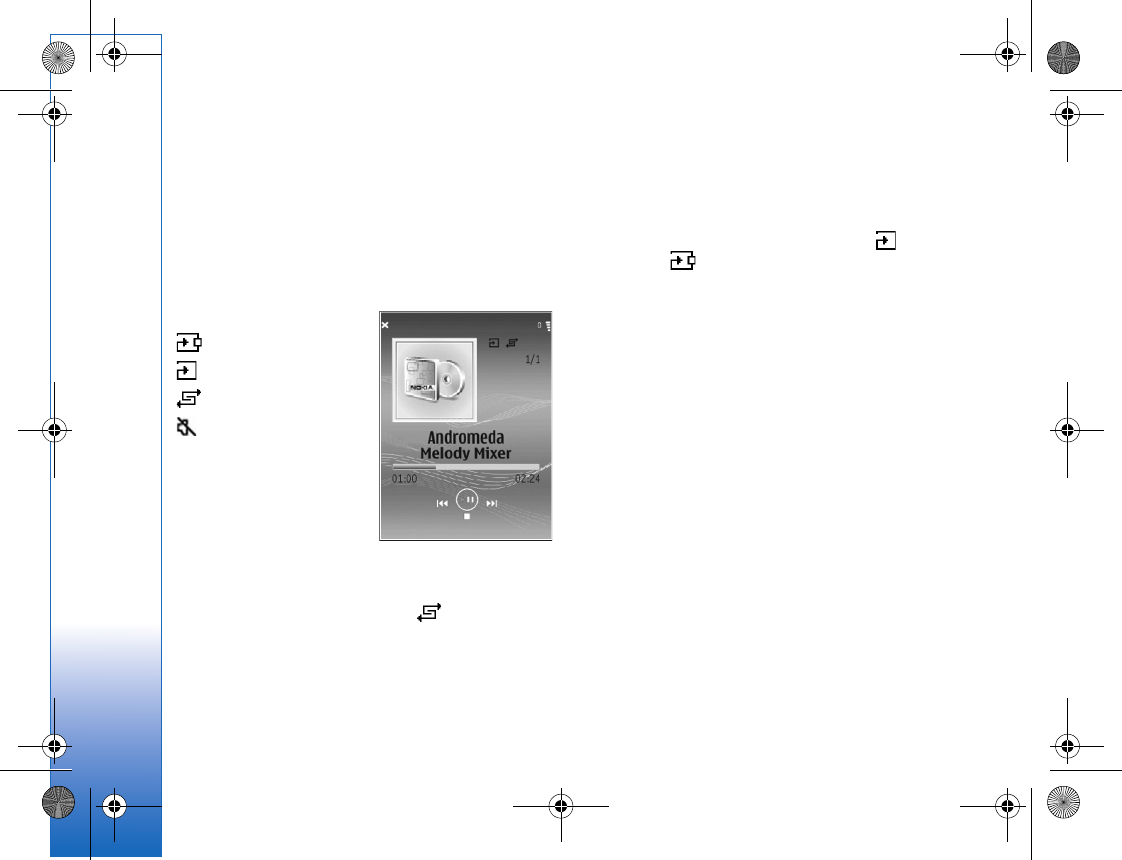
Media applications
40
To refresh the library after you have updated the song
selection in your device, go to Music menu, and select
Options > Refresh Music library.
The songs on a compatible memory card are available only
when the memory card is inserted.
Indicators
Icons in Music player:
—Repeat song
—Repeat all
—Shuffle on
—Loudspeaker muted
(displayed in volume pop-up)
Play modes
Shuffle play
1To switch random play on
or off, select Options > Shuffle.
2Select Off or On. The Now playing view is displayed
with or without the shuffle icon in top right
corner.
Repeat play
1To repeat the current song, all songs, or to switch
repeat off, select Options > Repeat.
2Select Off, All, or Repeat song. The Now playing view
is displayed with or without the repeat all or repeat
song icon in the top right corner.
Modify sound
Equalizer
To modify the tone of the music playback, select Options >
Equaliser.
To use one of the preset equalizer settings, select it with
the scroll key, and select Activate. Each preset has
different settings on a 5–band graphic equalizer.
Modify equalizer presets
1To create a new preset, select Options > New preset.
To modify an existing preset select Options > Edit. The
default preset cannot be edited.
2To adjust the frequency settings, move the scroll key to
the left or right to select low, mid, or, high frequency
and up or down to increase or decrease the volume of
the selected frequency band.
3To reset the settings to their original values, select
Options > Reset to defaults.
R1108_en.book Page 40 Wednesday, March 5, 2008 9:53 AM
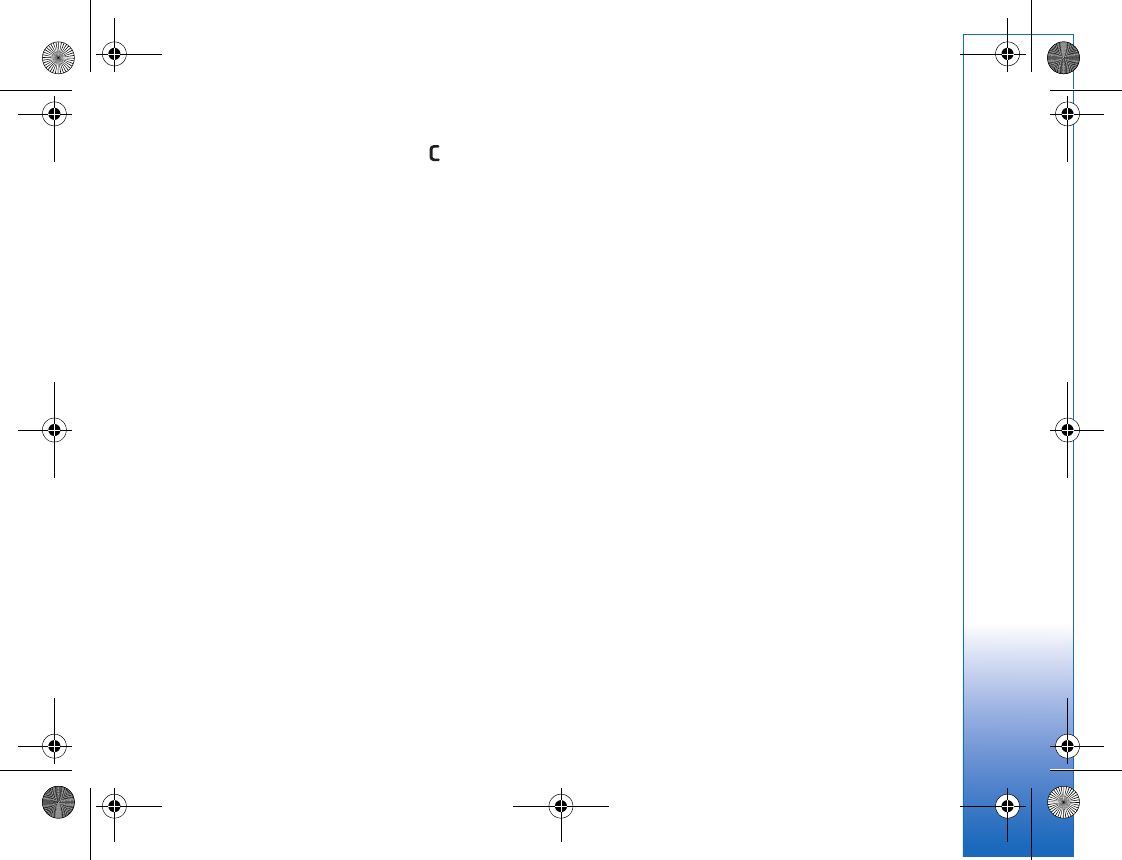
Media applications
41
To delete a preset, scroll to it, and press . The default
presets cannot be deleted.
Audio settings
To modify the balance and stereo image or to enhance
bass, select Options > Audio settings.
Go to Music shop
In Music shop you can search, browse, and purchase music
for downloading to your device. The variety, availability
and appearance of Music shop services may vary.
1In Music menu, select Options > Go to Music shop.
(This option is not available if music service Web
address has not been defined. See ‘Music shop settings’,
p. 41).
2Choose from the options on the screen to search,
browse, or select ringing tones.
Music shop settings
The settings may also be predefined and not editable.
You must have valid Internet connections in order to use
this service. For more details, see ‘Access points’, p. 118.
The availability and appearance of Music shop settings
may vary.
You also must have the Web address of the Music shop
defined in Music shop settings.
To change or define the Web address for the Music shop,
go to Music menu, and select Options > Go to Music
shop. (Music shop may also be available as a separate
shortcut in Operator folder.)
In Music shop, select Options > Settings. Define the
following:
Address:—Enter the Web address of the Music shop
service.
User name:—Enter your user name for Music shop. If this
field is left empty, you may have to enter your user name
at login.
Password:—Enter your password for Music shop. If this
field is left empty, you may have to enter your password
at login.
Transfer music
You can transfer music from a compatible PC or other
compatible devices using a compatible USB cable or
Bluetooth connectivity. For details about connecting your
device, see ‘Connections’, p.93.
The requirements of the PC:
• Microsoft Windows XP operating system (or later).
• A compatible version of Windows Media Player
application. You can get more detailed information
R1108_en.book Page 41 Wednesday, March 5, 2008 9:53 AM
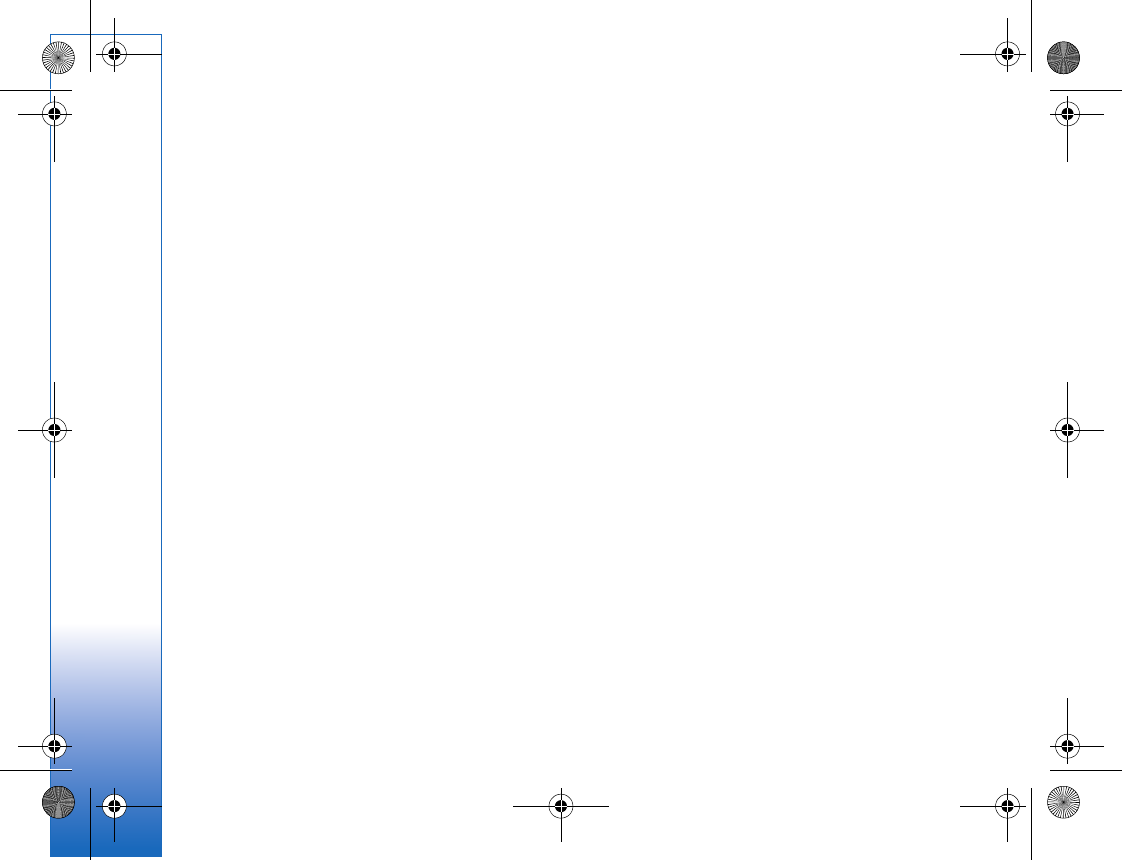
Media applications
42
about Windows Media Player compatibility from the
Nokia N73 section of the Nokia website.
• Nokia PC Suite 6.7 or later. The software is available
for installation on the sales package CD-ROM.
Connection method:
• USB data cable (miniUSB - USB)
• Compatible PC with Bluetooth connectivity
Transfer from PC
You can use three different methods to transfer files:
• To view your device on PC as an external hard drive
where you can transfer any data files, make the
connection with a compatible USB data cable or
Bluetooth connectivity. If you are using the USB cable,
select Data transfer as the connection method in your
device. This method gives you control of what you
move and where you move it, but you cannot see all
the file information. You may not be able to transfer
material that has been protected against copying. To
refresh the library after you have updated the song
selection in your device, go to Music menu, and select
Options > Refresh Music library.
• To synchronize music with Windows Media Player,
attach the USB cable and select Media player as the
connection method. A compatible memory card needs
to be inserted in the device.
• To use Nokia Music Manager in Nokia PC Suite, attach
the USB cable, and select PC Suite as the connection
method.
Music transfer
Both Windows Media Player and Nokia Music Manager in
Nokia PC Suite have been optimized for transferring music
files. For information about transferring music with Nokia
Music Manager, see Nokia PC Suite user guide provided on
the CD-ROM with your Nokia N73.
The functionality of the music synchronization may vary
between different versions of the Windows Media Player
application. For more information, see the corresponding
Windows Media Player guides and helps.
Manual synchronization
After connecting your device with a compatible PC,
Windows Media Player selects manual synchronization if
there is not enough storage room in your device. With
manual synchronization, you can select the songs and
playlists that you want to move, copy, or remove.
The first time you connect your device you must enter a
name that is used as the name of your device in Windows
Media Player.
To transfer manual selections:
R1108_en.book Page 42 Wednesday, March 5, 2008 9:53 AM
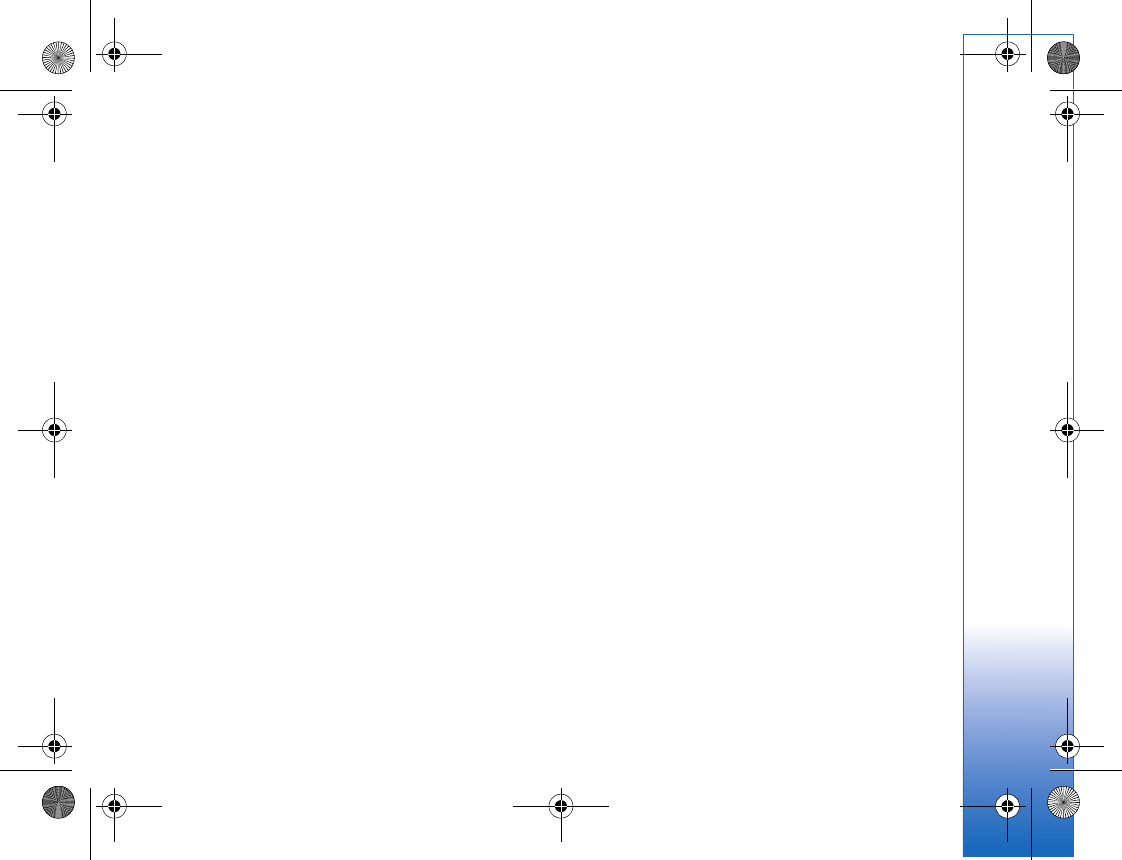
Media applications
43
1After your device is connected with Windows Media
Player, select your device in the navigation pane, if
more than one device is connected.
2Drag the songs or albums to the list pane for
synchronization. To remove songs or albums, select an
item in the list and click Remove from list.
3Check that the list pane contains the files you want to
synchronize and that there is enough capacity on the
device. Click Start Sync. to start the synchronization.
Automatic synchronization
To change the default file transfer option in Windows
Media Player, click the arrow under Sync, select your
device, and click Set up Sync. Clear or select the Sync this
device automatically check box.
If the Sync this device automatically check box is
selected and you connect your device, your Nokia N73
music library is automatically updated based on playlists
you have selected in Windows Media Player.
If no playlists have been selected, the whole PC music
library is selected for synchronization. Note that your PC
library may contain more files that can fit to the device
memory and a compatible memory card of your Nokia N73
(if inserted). See Windows Media Player help for more
information.
The playlists on your device are not synchronized with the
Windows Media Player playlists.
File management
By default, Windows Media Player organizes songs into
folders, for example, by artist or album name. When using
other data transfer methods, such as Mass storage, you
may need to limit the number of files in each folder for
optimal performance. Do not store more than 50 files or
folders in a single folder.
Playlists
Create a playlist
To create a playlist of songs:
1Select Options > Create playlist in Playlists view.
2Enter a name for the playlist, and select OK or press
the scroll key.
3Expand and collapse an artist title to find the songs
you want to include in the playlist. Press the scroll key
to add items. To show the song list under an artist
title, move the scroll key to the right. To hide the song
list, move the scroll key to the left.
4When you have made your selections, select Done.
Add songs to a playlist
You can add songs to an existing playlist or first create a
new playlist.
1In a song list, select Options > Add songs.
R1108_en.book Page 43 Wednesday, March 5, 2008 9:53 AM
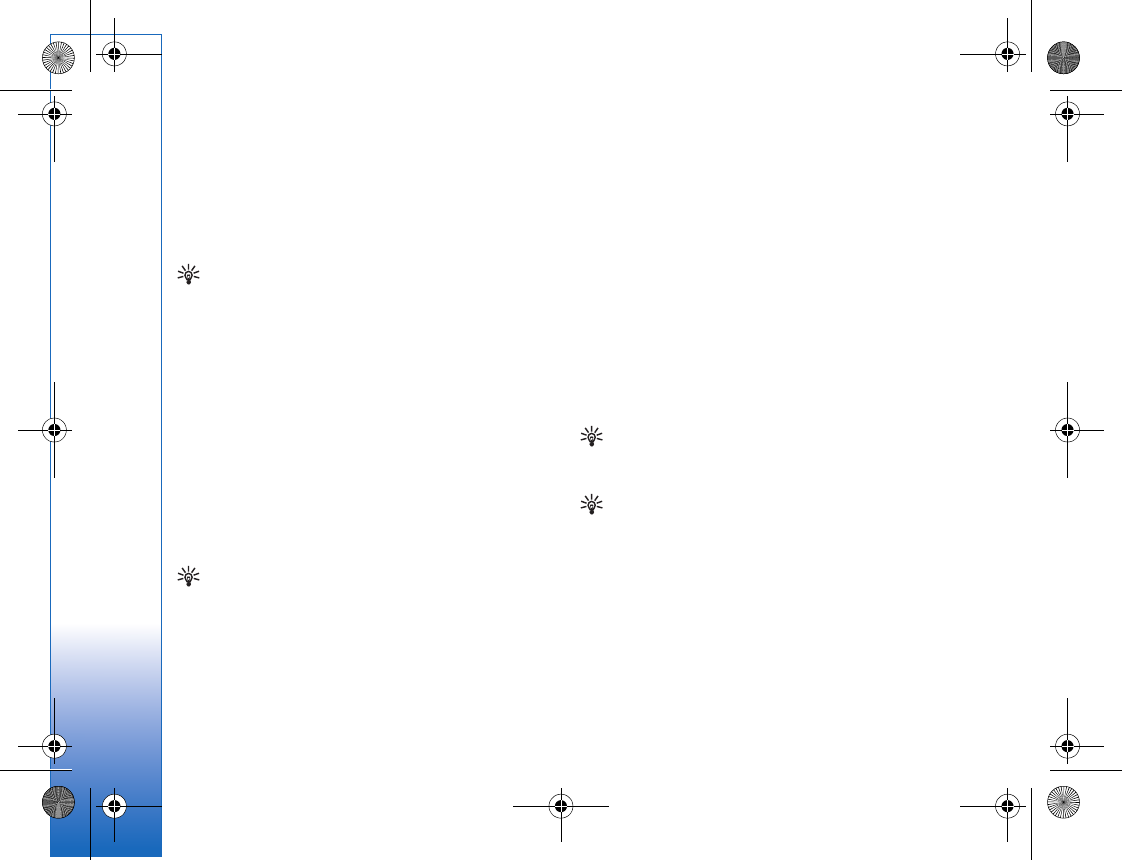
Media applications
44
2Expand and collapse an artist title to find the songs
you want to include in the playlist. Press the scroll key
to add items. To show the song list under an artist
title, move the scroll key to the right. To hide the song
list, move the scroll key to the left.
3When you have made your selections, select Done.
Tip! You can even add songs to a playlist that is
currently playing.
To search for a song start entering letters with the
keypad.
Reorder songs
1Select Options > Reorder list in a playlist view.
2The selected song is ready to be moved. Scroll up or
down to move it or leave it there.
3Select Drop.
4Scroll to the song you want to move.
5Select Grab.
6Scroll to a new position.
7Select Drop.
8When you have reordered the list, select Done.
Tip! To grab and drop, you can also press the scroll
key.
Remove songs from a playlist
You can remove songs from a playlist.
1Scroll to a song in a playlist.
2Select Options > Remove from playlist.
3Select Yes to confirm. This deletion does not delete the
song from the device; it only removes it from the
playlist.
Add items from views to a playlist
You can add songs, albums, artists, genres, and composers
from different views of the Music menu to existing or new
playlists.
1In a view opened from the Music menu, select an item.
2Select Options > Add to a playlist > Saved playlist or
New playlist.
3If you selected New playlist, enter a name for the
playlist, and select OK. If you selected Saved playlist,
select the playlist and OK.
Tip! In some of the views you can select multiple
songs to be added by selecting Options > Mark/
Unmark > Mark.
Tip! You can add a song that you are currently
listening to to a playlist.
Playlist details
In Playlists view, Select Options > Playlist details. The
following information is displayed:
Name—The name of the playlist
Songs—The current number of songs in the playlist
Location—The location of the playlist
R1108_en.book Page 44 Wednesday, March 5, 2008 9:53 AM
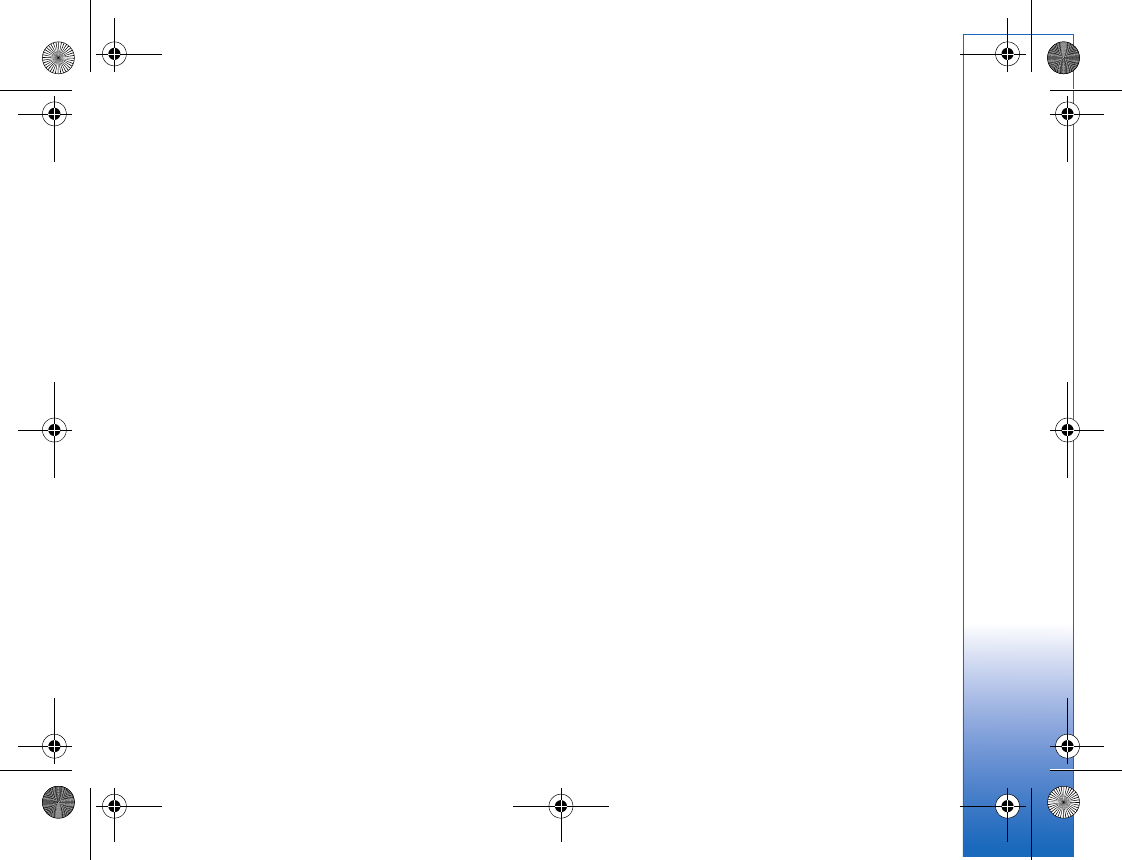
Media applications
45
Date—The date the playlist was last modified
Time—The time the playlist was last modified
Automatic playlists
The following playlists appear in the playlist view
automatically:
Most played tracks—Includes the 40 most-played songs
listed from the most recently played songs
Recent tracks—Includes 40 most recently played songs in
reverse order, ending with the most recently played song.
Recent additions—Includes songs that you have added to
the library within the past week.
Available options
The following items are available as options in different
views of the music player:
Go to Now playing—Opens a view that displays
information about the song that is currently being played
Go to Music shop—Opens wireless connection to a Web
shop, where you can search for, browse, and purchase
music
Refresh Music library—Updates the library list by
scanning the device memory and the memory card of your
device for new songs and removing broken links
Song details/Playlist details/Music library details—
Displays information about the selected item
Help—Opens the help application
Create playlist—Opens a view where you can create a new
playlist
Send—Allows you to send the selected item to another
compatible device
Delete—Removes the selected item after confirmation.
The song is permanently deleted from the device memory
or from a compatible memory card (if inserted).
Rename—Renames the selected item
Add to a playlist—Adds the selected item to an existing
playlist or new playlist
Album art—Opens a view which will show you album art
currently attached to the selected album or song. You can
change or add album art using images on your device.
Mark/Unmark—Allows you to select several items for
action
Set as ringing tone—Selects the selected song as the
ringing tone of the active profile. For optimal
performance, store the ringing tones in the device
memory.
Reorder list—Rearranges the songs of a playlist
R1108_en.book Page 45 Wednesday, March 5, 2008 9:53 AM
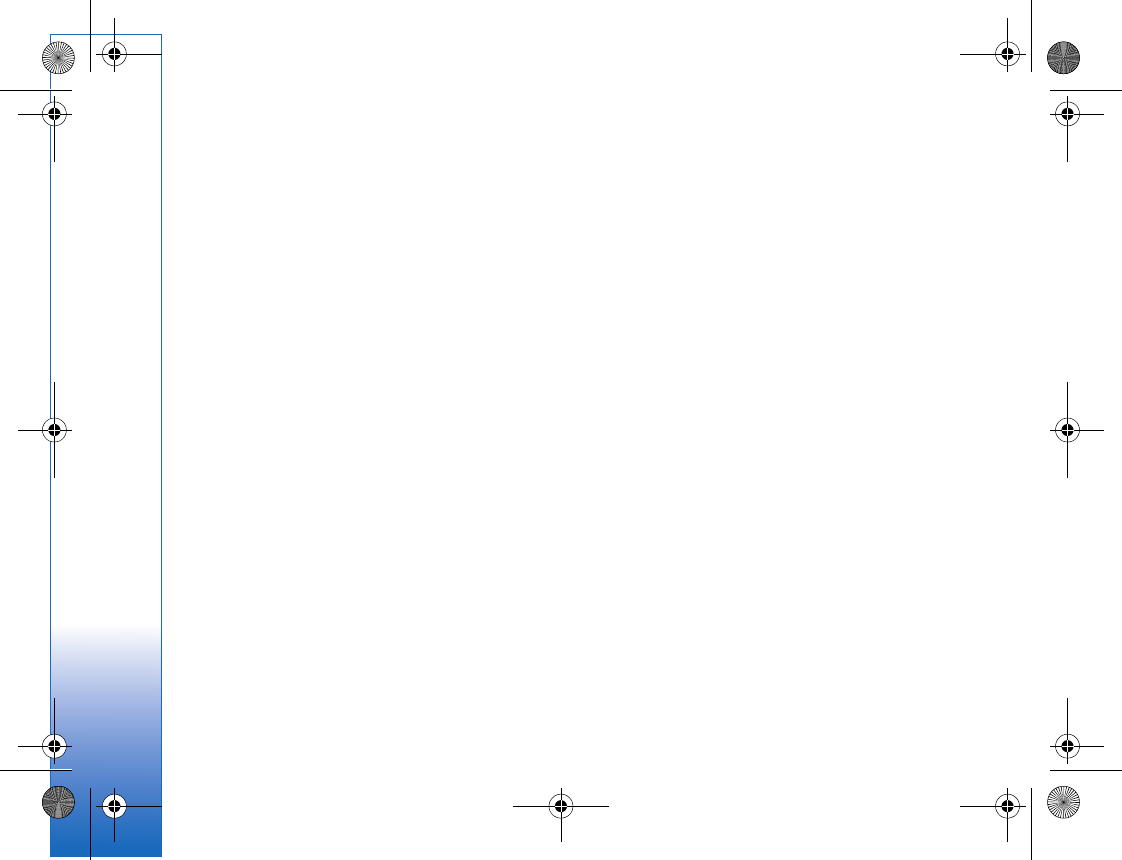
Media applications
46
Options only in Now playing view
Go to Music menu—Opens the Music menu view
Shuffle—Switches the shuffle mode on or off. In shuffle
mode the songs are played in random order.
Repeat—Repeats the song or all songs in the list that is
currently being played.
Equaliser—Opens a view where you can adjust the sound
frequency balance.
Start visualisation—Selects album art or an animation
that shows when a track is playing. Select Close to return
to the Now playing view.
Audio settings—Opens a view where you can change the
sound balance, stereo image and bass response.
Rename items
1Select an Artist, Album, Genre, or Composer from the
list.
2Select Options > Rename.
3Enter the new name, and select OK. All songs
belonging to the selected artist, album, genre, or
composer are updated.
View and edit song details
In a song view, Select Options > Song details. The
following information is displayed and editable:
Song name—The name of the song
Artist—The name of the artist
Album—The name of the album to which this song belongs
Track number—The song position in the album to which
this song belongs
Year—The year in which the album was released
Genre—The style category to which this song belongs
Composer—The name of the composer of this song
Comment—Any other information about this song
To view details like Format, Duration, and Copyright,
select Options > View file details in Song details view.
Library details
In Music menu select Options > Music library details.
The following information is displayed:
Songs—The current number of songs in the library
Duration—The length of current songs together
Used—The total size of the files in the music library
R1108_en.book Page 46 Wednesday, March 5, 2008 9:53 AM
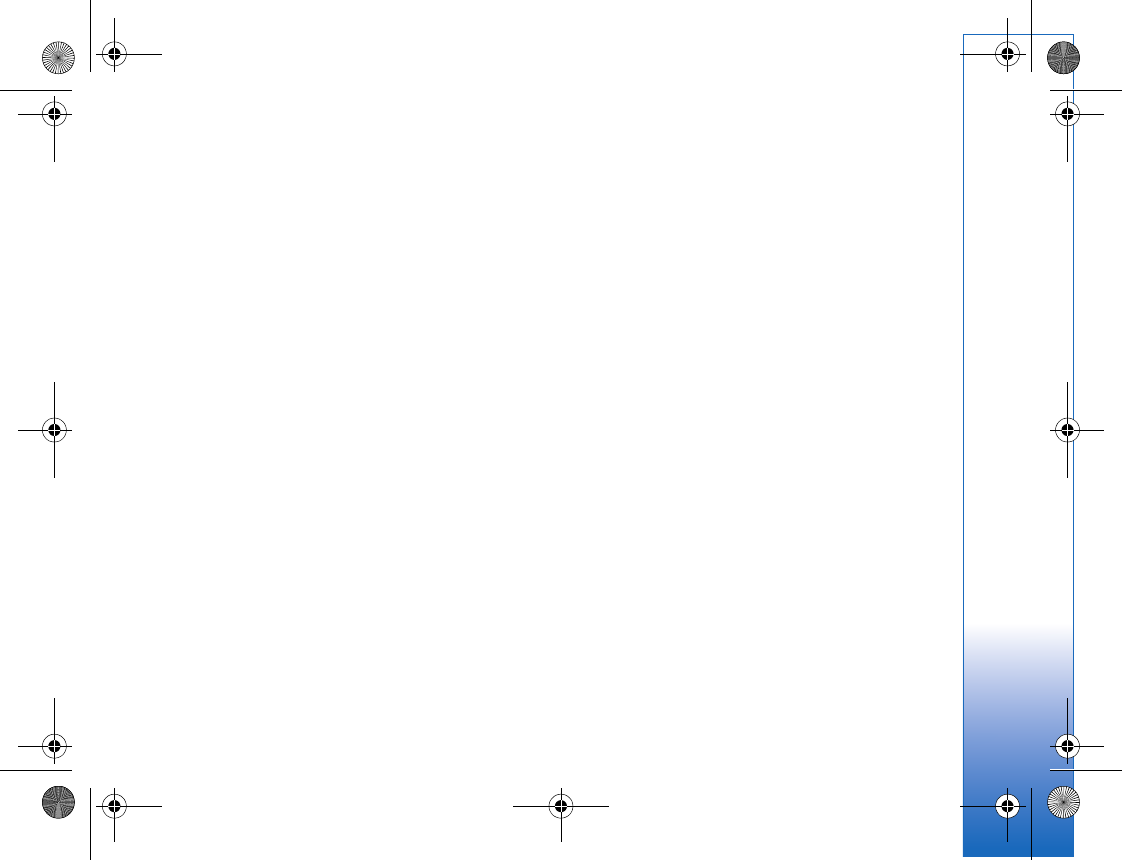
Media applications
47
Refreshed—The date when the library was last modified
Set a song as a ringing tone
1Select a song.
2Select Options > Set as ringing tone. The selected
song has been set as the ringing tone for the active
profile.
Change album art
1Select a song.
2Select Options > Album art.
3Select Options > Change.
4Scroll through images in the gallery of your device, and
select Select:.
5To restore the original album art, select Restore
original.
About encoded audio
Applications like Windows Media Player, and Nokia Audio
Manager (included in the Nokia PC Suite) encode audio
files with codecs such as WMA or MP3 to save storage
space. The encoding is done by removing those parts of the
audio signal that are not audible or only barely audible by
human ear.
Regardless of the encoder and codec quality, the sound
quality of the resulting file is not as good as the original.
The basic codecs supported by this device are AAC, WMA,
and MP3. All of these have different variations.
Bitrates
When encoding audio, the quality of the resulting sound
depends on the sample rate and bit rate used for the
encoding. Sample rate is expressed as thousands of
samples per second (kHz), and for CD music the sample
rate is fixed at 44.1 kHz. Bit rate is expressed as kilobits
per second (Kbps). The higher the bitrate, the better the
sound quality.
The required quality level may depend on your demands,
the headsets used, and the surrounding noise. For MP3s a
bitrate between 128 and 192 Kbps usually gives results
good enough for listening to pop music with your device.
WMA or AAC generally gives a similar result as MP3 with
one step lower bitrate (96-160 Kbps). Variations of AAC,
such as AAC+ and enhanced AAC+ (eAAC+) provide CD
quality audio at bitrates as low as 48 Kbps. Classical music
and music with nuances usually require a higher bitrate
than basic pop music.
For speech or other sources where the quality of the sound
is less important than saving storage space, you can use
bitrates between 8 and 64 Kbps. At low bitrates WMA or
AAC generally gives better results than MP3.
R1108_en.book Page 47 Wednesday, March 5, 2008 9:53 AM
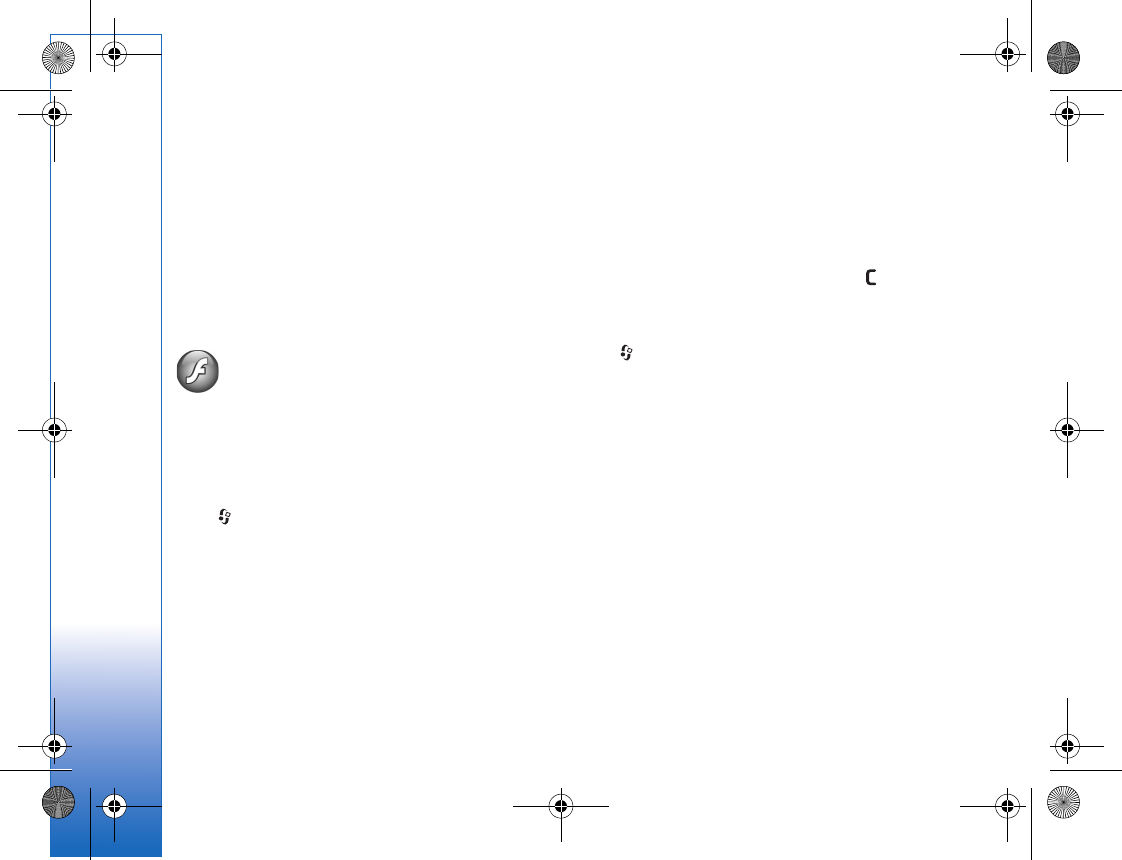
Media applications
48
Variable bitrate
Your device also supports variable bitrate (VBR). Variable
bitrate means that the bit rate of the encoding varies with
the complexity of the encoded material. When using VBR,
the encoding is optimized to preserve a constant audio
quality throughout the track, rather than losing quality
for complex music sections as with constant bitrate (CBR)
encoding.
Flash Player
With Flash Player, you can view, play, and interact with
compatible flash files made for mobile devices.
Organize flash files
Press , and select Applications > Flash Player.
To open a folder or play a flash file, scroll to it, and press
the scroll key.
To send a flash file to a compatible device, scroll to it, and
press the call key.
To copy a flash file to another folder, select Options >
Organise > Copy to folder.
To move a flash file to another folder, select Options >
Organise > Move to folder.
To create a folder to organize your flash files, select
Options >Organise > New folder.
The available options may vary.
To delete a flash file, scroll to it, and press .
Play flash files
Press , and select Applications > Flash Player. Scroll to
a flash file, and press the scroll key.
To increase or decrease the volume, use the volume key on
the side of your device.
If available, select Options and from the following:
Pause—to pause the playback
Stop—to stop the playback
Quality—to select the playback quality. If the playback
appears uneven and slow, select Normal or Low.
Full screen—to play the file using the entire display. To
return to the normal screen, select Normal screen.
Even though they are not visible in full screen, the key
functions may still be available when you press either
selection key.
R1108_en.book Page 48 Wednesday, March 5, 2008 9:53 AM
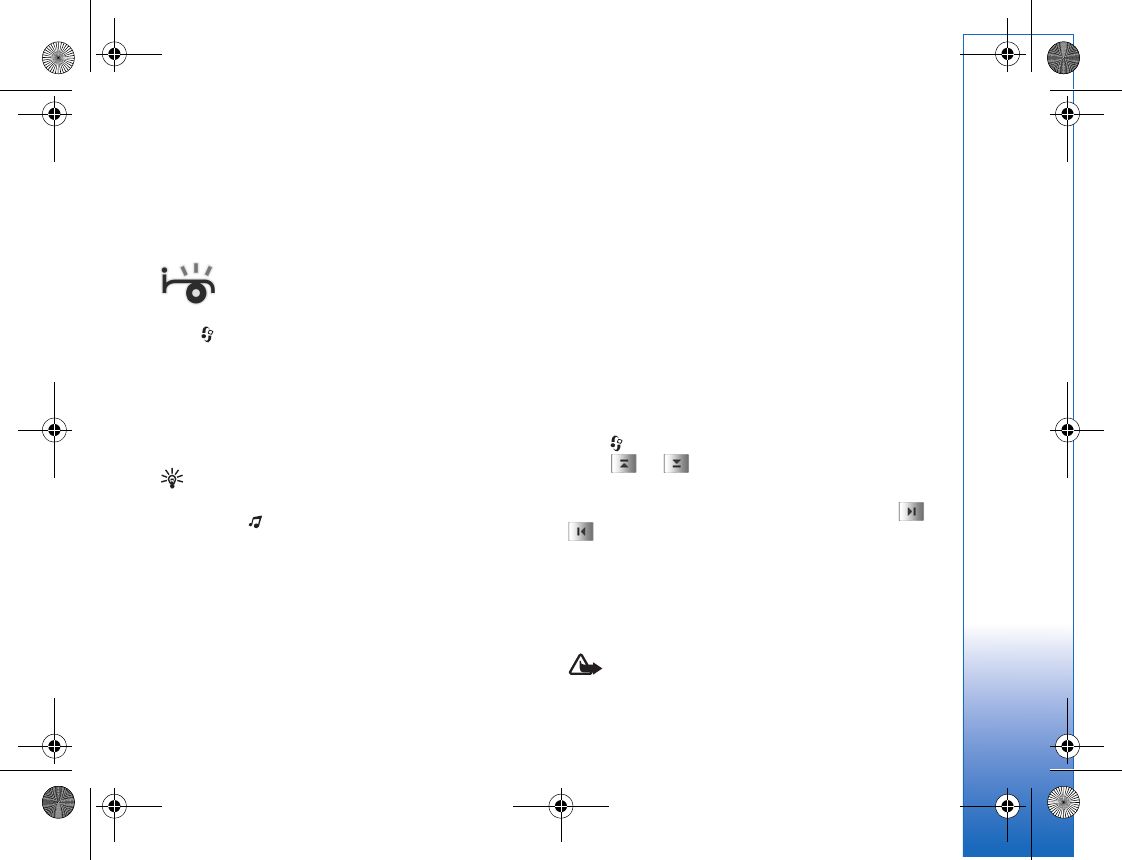
Media applications
49
Fit to screen—to play the file in its original size after
zooming it
Pan mode on—to be able to move around the display with
the scroll key when you have zoomed in
Visual Radio
Press , and select Radio. You can use the application as
a traditional FM radio with automatic tuning and saved
stations, or with parallel visual information related to the
radio program on the display, if you tune to stations that
offer Visual Radio service. The Visual Radio service uses
packet data (network service). You can listen to the FM
radio while using other applications.
Tip! To access Visual Radio in the active standby
mode on your Nokia N73 Music Edition device, press
and hold .
If you do not have access to the Visual Radio service, the
operators and radio stations in your area may not support
Visual Radio.
You can normally make a call or answer an incoming call
while listening to the radio. The radio is muted when there
is an active call.
The radio selects the used frequency band based on the
country information received from the network. If this
information is not available, you may be asked to select
the region you are located in, or you can select the region
in the Visual Radio settings. See ‘Settings’, p. 50.
Listen to the radio
Note that the quality of the radio broadcast depends on
the coverage of the radio station in that particular area.
The FM radio depends on an antenna other than the
wireless device antenna. A compatible headset or
enhancement needs to be attached to the device for the
FM radio to function properly.
Press , and select Radio. To start a station search,
select or . To change the frequency manually,
select Options > Manual tuning.
If you have previously saved radio stations, select or
to go to the next or previous saved station, or press
the corresponding number key to select the memory
location of a station.
To adjust the volume, press the volume keys. To listen to
the radio using the loudspeaker, select Options >
Activate loudspeaker.
Warning: Listen to music at a moderate level.
Continuous exposure to high volume may damage your
R1108_en.book Page 49 Wednesday, March 5, 2008 9:53 AM
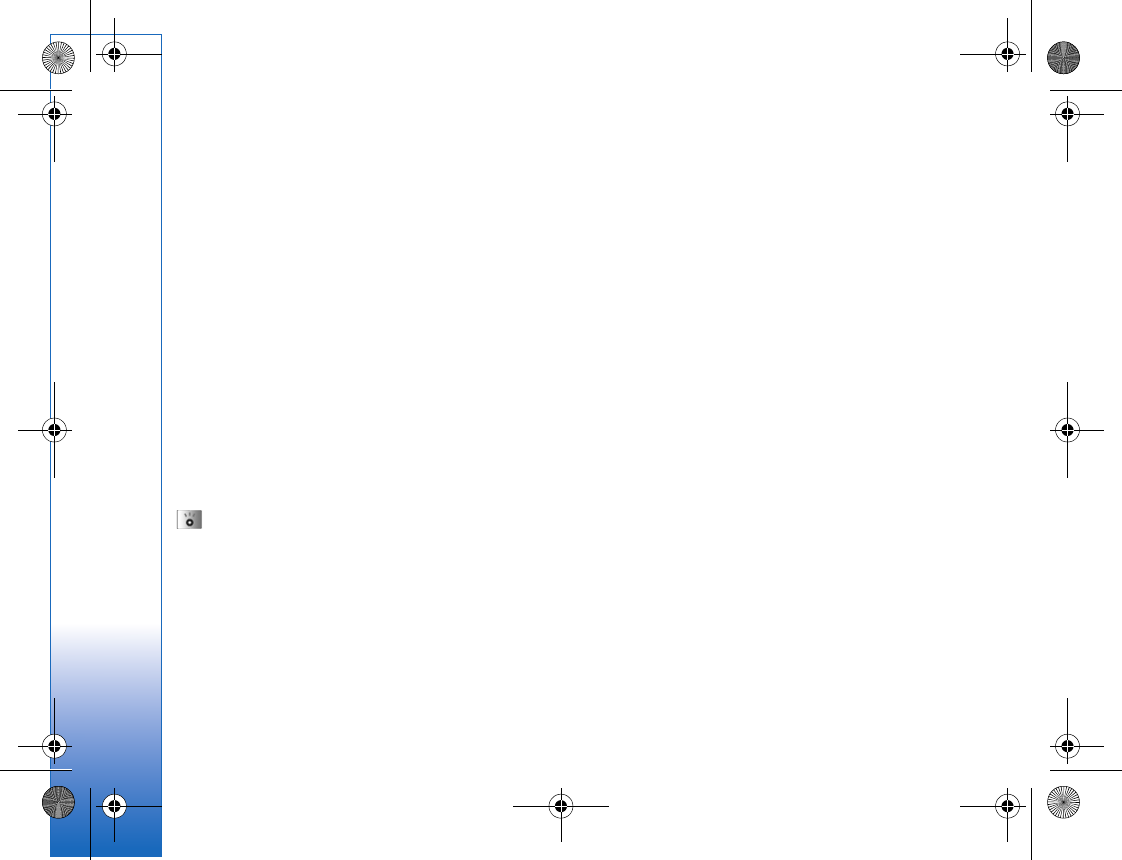
Media applications
50
hearing. Do not hold the device near your ear when the
loudspeaker is in use, because the volume may be
extremely loud.
To view available stations based on location, select
Options > Station directory (network service).
To save the current tuned station to your station list,
select Options > Save station. To open the list of your
saved stations, select Options > Stations.
To return to the standby mode and leave the FM radio
playing in the background, select Options > Play in
background.
View visual content
To check availability and costs, and to subscribe to the
service, contact your service provider.
To view available visual content for a tuned station, select
or Options > Start visual service. If the visual
service ID has not been saved for the station, enter it, or
select Retrieve to search for it in the station directory
(network service).
When the connection to the visual service is established,
the display shows the current visual content.
To adjust display settings for the visual content view,
select Options > Display settings.
Saved stations
You can save up to 20 radio stations in the radio. To open
your station list, select Options > Stations.
To listen to a saved station, select Options > Station >
Listen. To view available visual content for a station with
Visual Radio service, select Options > Station > Start
visual service.
To change station details, select Options > Station > Edit.
Settings
Select Options > Settings and from the following:
Start-up tone—Select whether a tone is played when the
application is started.
Auto-start service—Select Yes to have the Visual Radio
service start automatically when you select a saved station
that offers Visual Radio service.
Access point—Select the access point used for the data
connection. You do not need an access point to use the
application as an ordinary FM radio.
Current region—Select the region you are currently
located in. This setting is displayed only if there was no
network coverage when the application was started.
R1108_en.book Page 50 Wednesday, March 5, 2008 9:53 AM
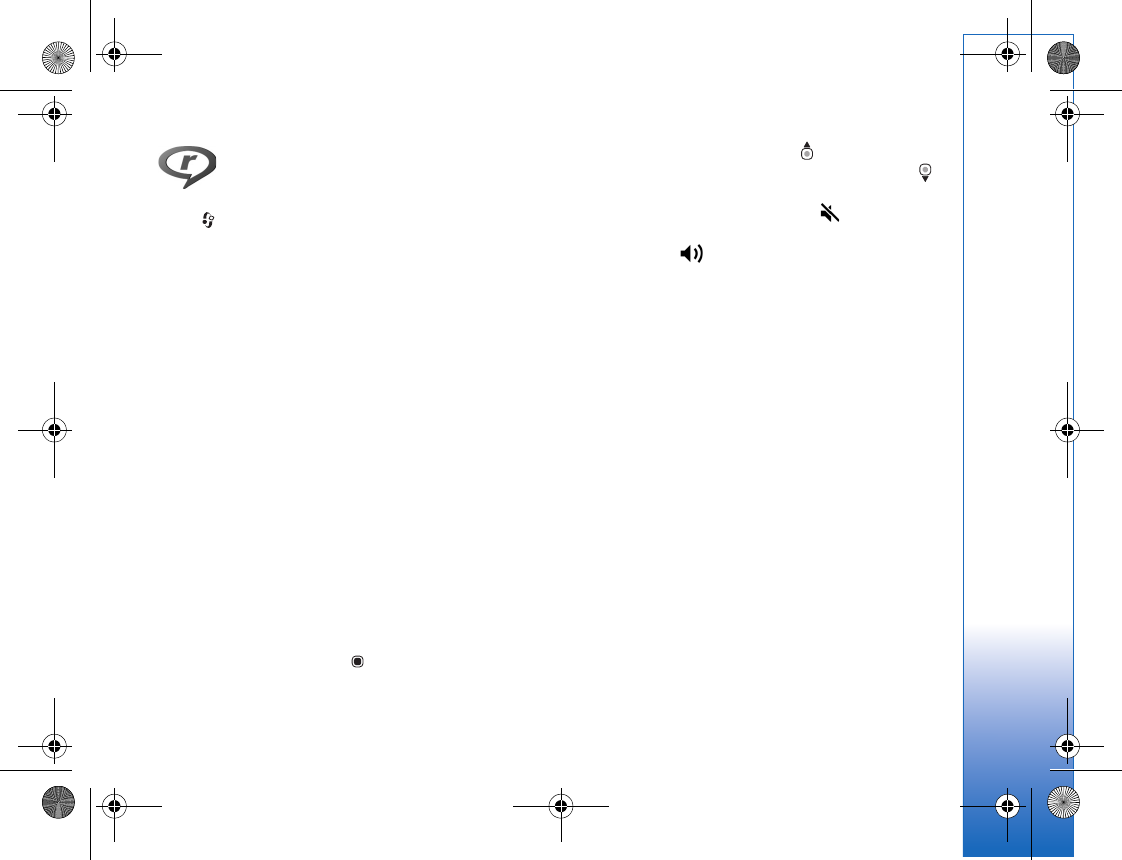
Media applications
51
RealPlayer
Press , and select Applications > RealPlayer. With
RealPlayer, you can play video clips, or stream media files
over the air. You can activate a streaming link when you
browse Web pages, or store it in the device memory or a
compatible memory card (if inserted).
RealPlayer supports files with extensions such as .3gp,
.mp4 or .rm. However, RealPlayer does not necessarily
support all file formats or all the variations of file formats.
For example, RealPlayer attempts to open all .mp4 files,
but some .mp4 files may include content that is not
compliant with 3GPP standards and, therefore, is not
supported by this device.
Play video clips
1To play a media file stored in device memory, or on the
memory card (if inserted), select Options > Open and
from the following:
Most recent clips—to play one of the last six files
played in RealPlayer
Saved clip—to play a file saved in Gallery.
See ‘Gallery’, p. 28.
2Scroll to a file, and press to play the file.
Shortcuts during play:
• To fast forward, press and hold .
• To rewind through the media file, press and hold .
• To mute the sound, press and hold the volume key on
the side of your device down until is displayed. To
turn on the sound, press and hold the volume key up
until you see .
Stream content over the air
Many service providers require you to use an Internet
access point (IAP) for your default access point. Other
service providers allow you to use a WAP access point.
The access points may be configured when you first start
your device.
Contact your service provider for more information.
In RealPlayer, you can only open an rtsp:// URL address.
However, RealPlayer recognizes an http link to a .ram file.
To stream content over the air, select a streaming link
saved in Gallery, on a Web page, or received in a text
message or multimedia message. Before live content
begins streaming, your device connects to the site and
starts loading the content. The content is not saved in
your device.
R1108_en.book Page 51 Wednesday, March 5, 2008 9:53 AM
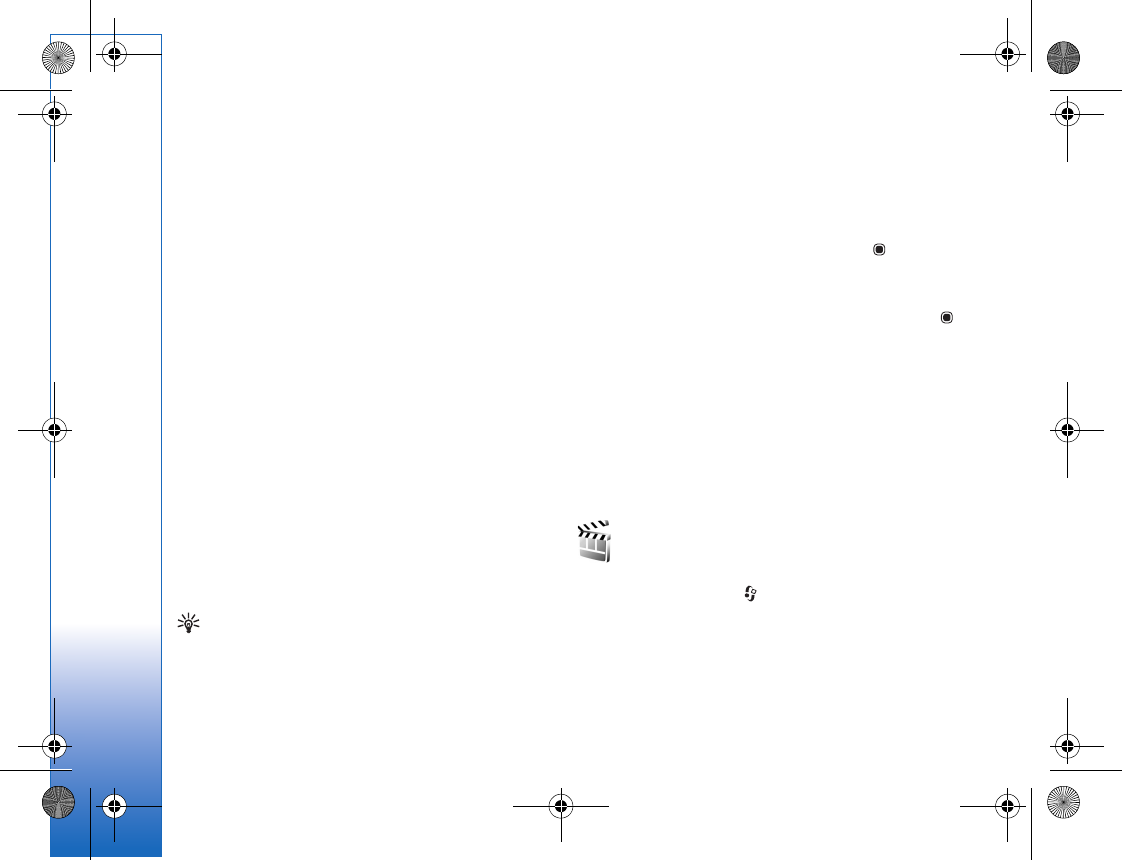
Media applications
52
Receive RealPlayer settings
You may receive RealPlayer settings in a special text
message from the service provider. See ‘Data and
settings’, p. 63. For more information, contact your service
provider.
Change the RealPlayer settings
Select Options > Settings and from the following:
Video—to have RealPlayer automatically repeat video
clips after they finish playing.
Connection—to select whether to use a proxy server,
change the default access point, and set the port range
used when connecting. Contact your service provider for
the correct settings.
Proxy settings
Use proxy—To use a proxy server, select Yes.
Proxy serv. address—Enter the IP address of the proxy
server.
Proxy port number—Enter the port number of the proxy
server.
Glossary: Proxy servers are intermediate servers
between media servers and their users. Some service
providers use them to provide additional security or
speed up access to browser pages that contain sound or
video clips.
Network settings
Default access point—Scroll to the access point you want
to use to connect to the Internet, and press .
Online time—Set the time for RealPlayer to disconnect
from the network when you pause a media clip playing
through a network link. Select User defined, and press .
Enter the time, and select OK.
Lowest UDP port—Enter the lowest port number of the
server’s port range. The minimum value is 1024.
Highest UDP port—Enter the highest port number of the
server’s port range. The maximum value is 65535.
Select Options > Advanced settings to edit the
bandwidth values for different networks.
Movie director
To create muvees, press , and select Gallery > Images
& video > Options > Edit > Create muvee.
muvees are short, edited video clips that can contain video,
images, music, and text. Quick muvee is created
automatically by Movie after you select the style for the
muvee. Movie uses the default music and text associated
R1108_en.book Page 52 Wednesday, March 5, 2008 9:53 AM
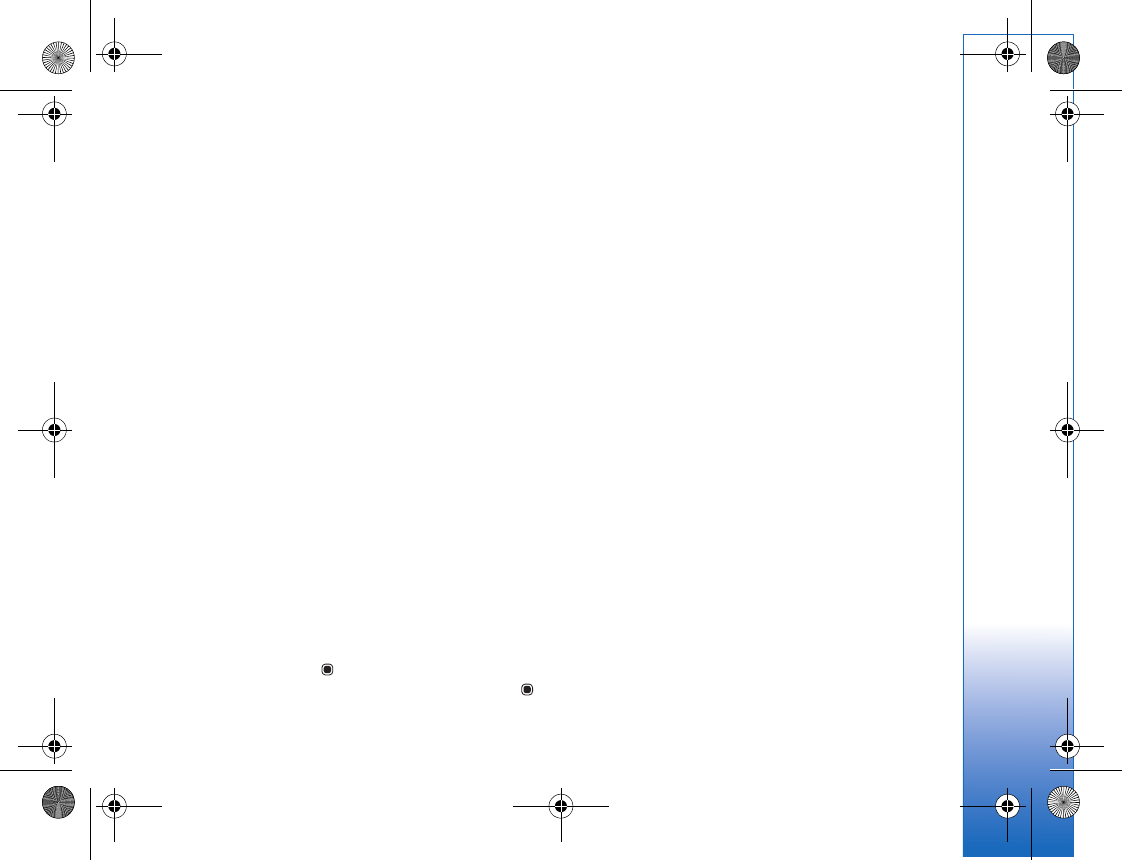
Media applications
53
with the chosen style. In a custom muvee you can select
your own video and music clips, images and style, and add
an opening and closing message. You can send muvees in
a multimedia message.
The muvees can be saved in the Images & video folder in
Gallery in .3gp file format.
Create a quick muvee
1In Gallery, select images and videos for the muvee, and
Options > Edit > Create muvee. The style selection
view opens.
2Select a style for the muvee from the style list.
3Select Options > Create muvee.
Create a custom muvee
1In Gallery, select images and videos for the muvee, and
Options > Edit > Create muvee. The style selection
view opens.
2Scroll to the desired style, and select Options >
Customise.
3Select the clips you want to include in your muvee in
Videos & images or Music.
In Videos & images, you can define the order in which
the files are played in the muvee. To select the file you
want to move, press . Then scroll to the file below
which you want to place the marked file, and press .
To add or remove images and videos from the muvee,
select Options > Add/Remove.
To cut the video clips, In Videos & images, select
Options > Select contents. See ‘Select content’, p. 53.
In Message you can add an opening and closing text
to a muvee.
In Length, you can define the length of the muvee.
Select from the following:
User defined—to define the length of the muvee
Multimedia message—to optimize the length of the
muvee for sending in a multimedia message
Same as music—to set the muvee duration to be the
same as the chosen music clip
Auto-select—to include all the selected images and
video clips in the muvee
4Select Options > Create muvee. The preview view
opens.
5To preview the custom muvee before saving it, select
Options > Play.
6To save the muvee, select Options > Save.
To create a new custom muvee by using the same style
settings, select Options > Recreate.
Select content
To edit the selected video clips, in the Videos & images
folder, select Options > Select contents. You can select
which parts of the video clip you want to include or
R1108_en.book Page 53 Wednesday, March 5, 2008 9:53 AM
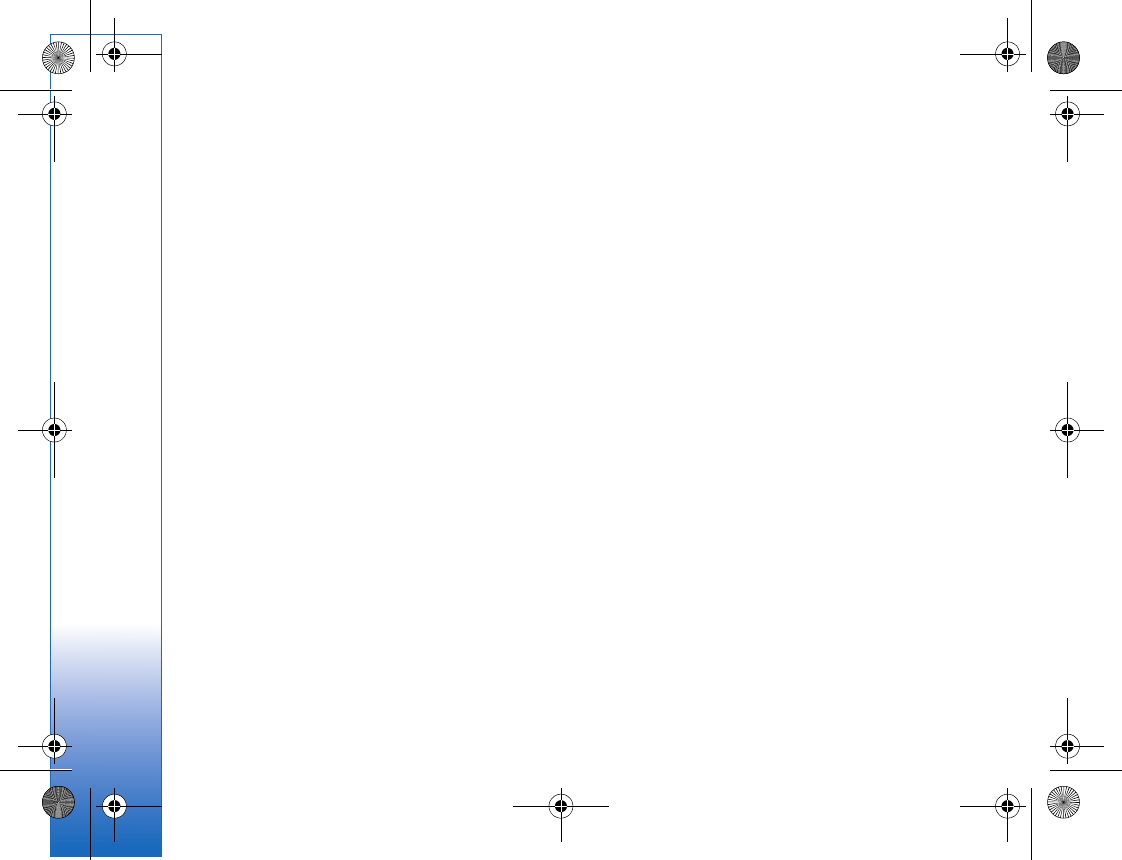
Media applications
54
exclude in the muvee. In the slide, green is for included,
red is for excluded, and grey is for neutral parts.
To include a part of the video clip in the muvee, scroll to
the part, and select Options > Include. To exclude a part,
select Options > Exclude. To exclude a shot, select
Options > Exclude shot.
To let Movie randomly include or exclude a part of the
video clip, scroll to the part, and select Options > Mark
as neutral.
To let Movie randomly include or exclude parts of video
clip, select Options > Mark all as neutral.
Settings
In the style selection view, select Options > Customise >
Settings to edit the following options:
Memory in use—Select where to store your muvees.
Resolution—Select the resolution of your muvees. Select
Automatic to use the optimal resolution based on the
number and length of the video clips you have selected.
Default muvee name—Set a default name for the
muvees.
R1108_en.book Page 54 Wednesday, March 5, 2008 9:53 AM
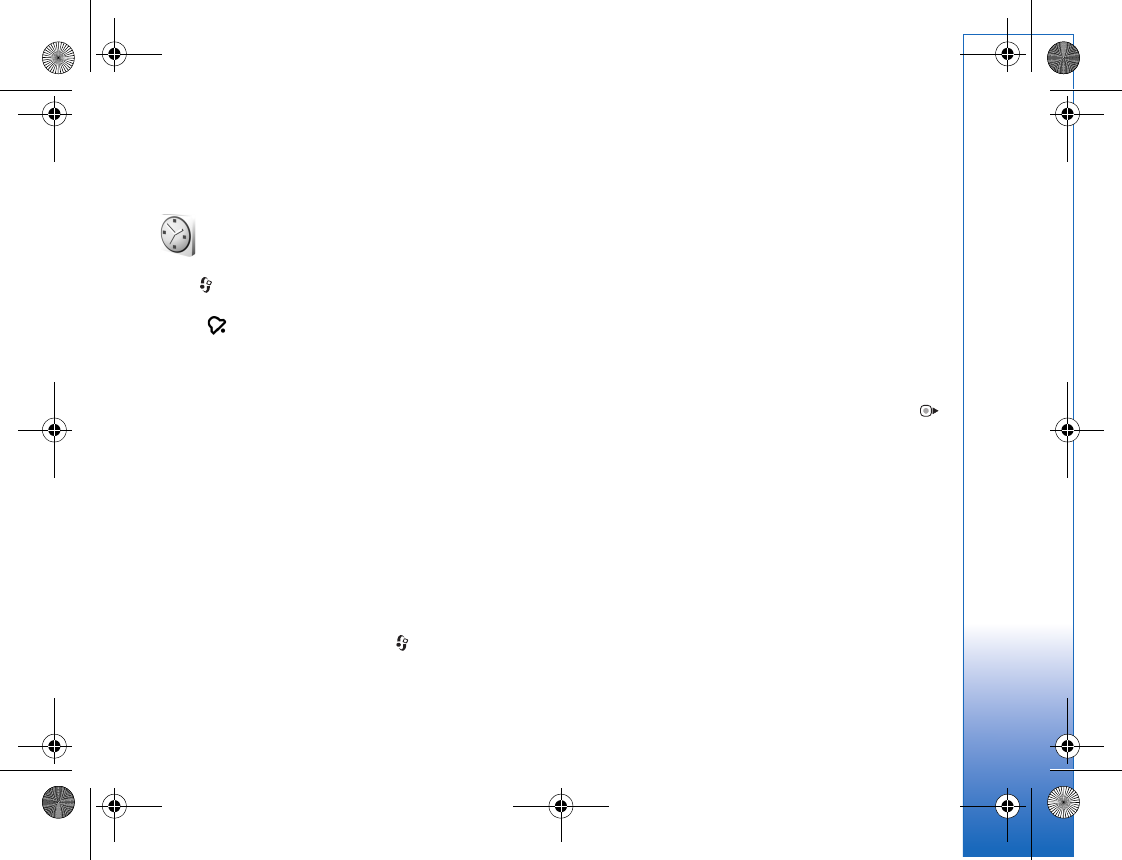
Time management
55
Time management
Clock
Press , and select Applications > Clock. To set a new
alarm, select Options > Set alarm. When an alarm is
active, is shown.
To turn off the alarm, select Stop, or to stop the alarm for
5 minutes, select Snooze.
If the alarm time is reached while the device is switched
off, the device switches itself on and starts sounding the
alarm tone. If you select Stop, the device asks whether you
want to activate the device for calls. Select No to switch
off the device or Yes to make and receive calls. Do not
select Yes when wireless phone use may cause
interference or danger.
To cancel an alarm, select Applications > Clock >
Options > Remove alarm.
Clock settings
To change the clock settings, press , and select
Applications > Clock > Options > Settings.
To change the time or date, select Time or Date.
To change the clock shown in the standby mode, select
Clock type > Analogue or Digital.
To allow the mobile phone network to update the time,
date, and time zone information to your device (network
service), select Network operator time > Auto-update.
To change the alarm tone, select Clock alarm tone.
World clock
To open the world clock view, open Clock, and press .
In the world clock view, you can view the time in different
cities.
To add cities to the list, select Options > Add city. You can
add a maximum of 15 cities to the list.
To set your current city, scroll to a city, and select
Options > My current city. The city is displayed in the
clock main view, and the time in your device is changed
according to the city selected. Check that the time is
correct and matches your time zone.
R1108_en.book Page 55 Wednesday, March 5, 2008 9:53 AM
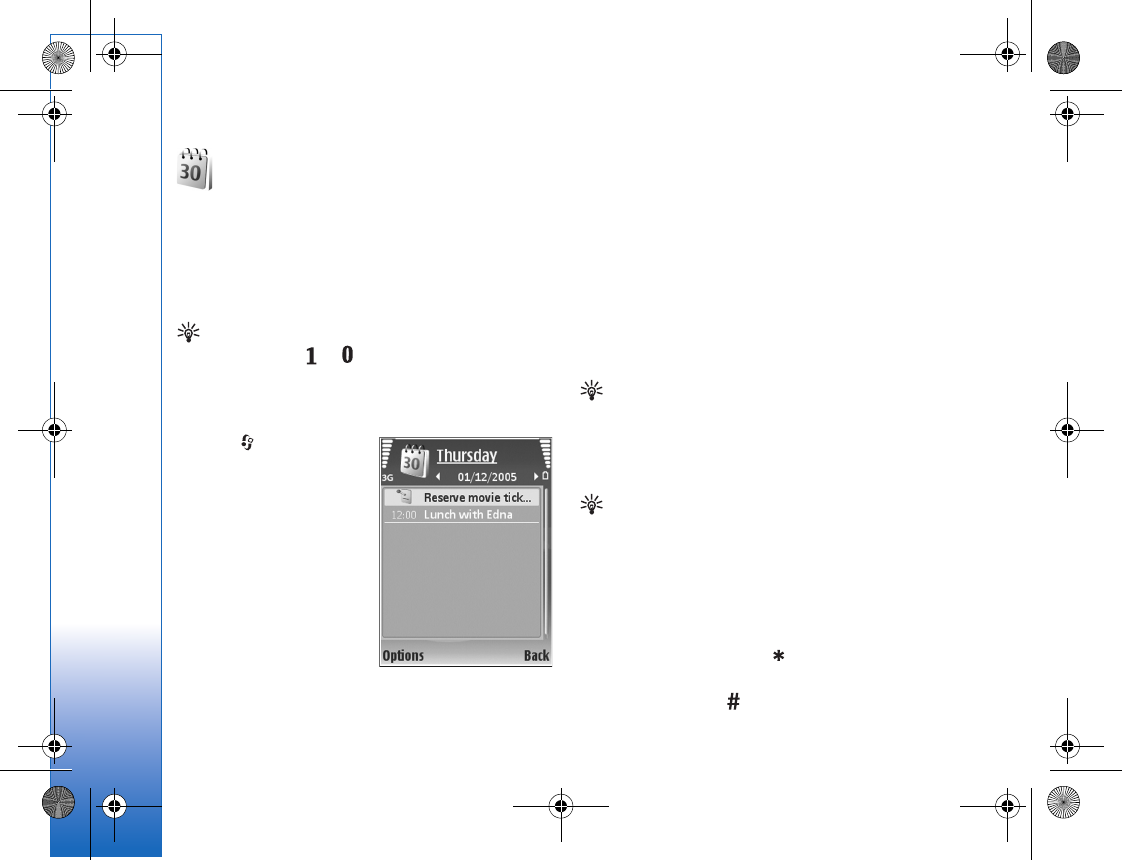
Time management
56
Calendar
Use Calendar to remind you of meetings and
anniversaries, and to keep track of your tasks and other
notes.
Create calendar entries
Shortcut: In the day, week, or month calendar view,
press any key ( — ). An appointment entry
opens, and the characters you enter are added to the
Subject field. In the to-do view, pressing any key
opens a to-do note entry.
1Press , and select
Calendar > Options >
New entry and one of
the following:
Meeting—to remind you
of an appointment that
has a specific date and
time
Memo—to write a
general entry for a day
Anniversary—to remind
you of birthdays or
special dates (entries are
repeated every year)
To-do—to remind you of a task that needs doing by a
specific date
2Fill in the fields. To set an alarm, select Alarm > On,
and enter the Alarm time and Alarm date.
To add a description for an appointment, select
Options > Add description.
3To save the entry, select Done.
When the calendar alarms for a note, select Silence to turn
off the calendar alarm tone. The reminder text stays on the
screen. To end the calendar alarm, select Stop. To set the
alarm to snooze, select Snooze.
Tip! You can synchronize your calendar with a
compatible PC using Nokia PC Suite. When creating a
calendar entry, set the desired Synchronisation option.
Calendar views
Tip! Select Options > Settings to change the starting
day of the week or the view that is shown when you
open the calendar.
In the month view, dates that have calendar entries are
marked with a small triangle in the right bottom corner. In
the week view, memos and anniversaries are placed before
8 a.m. To switch between the month view, week view, day
view, and to-do view, press .
To go to a certain date, select Options > Go to date. To
jump to today, press .
R1108_en.book Page 56 Wednesday, March 5, 2008 9:53 AM
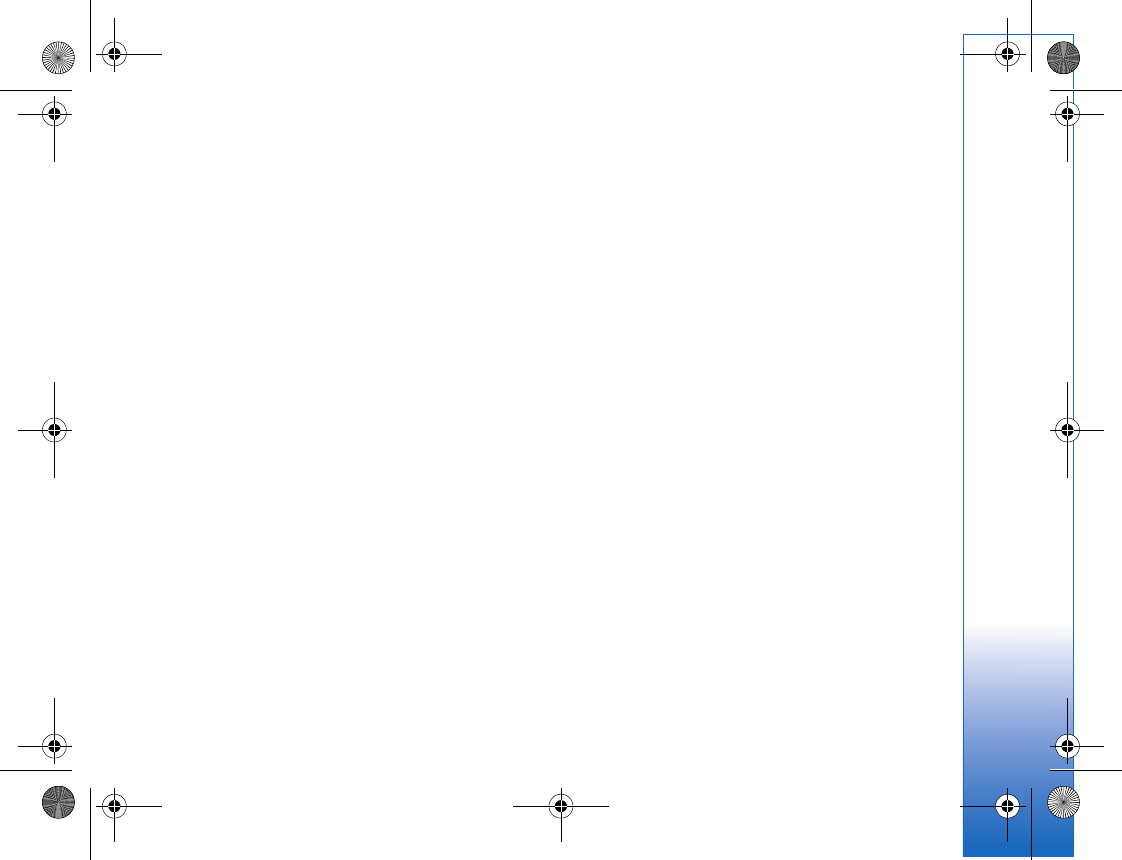
Time management
57
To send a calendar note to a compatible device, select
Options > Send.
To print calendar entries on a compatible Basic Print
Profile (BPP) equipped printer with Bluetooth connectivity
(such as HP Deskjet 450 Mobile Printer or HP Photosmart
8150), select Options > Print.
Manage your calendar entries
Deleting past entries in Calendar saves space in your
device memory.
To delete more than one event at a time, go to the month
view, and select Options > Delete entry > Before date or
All entries.
To mark a task as completed, scroll to it in the to-do view,
and select Options > Mark as done.
Calendar settings
To modify the Calendar alarm tone, Default view, Week
starts on, and Week view title, select Options > Settings.
R1108_en.book Page 57 Wednesday, March 5, 2008 9:53 AM
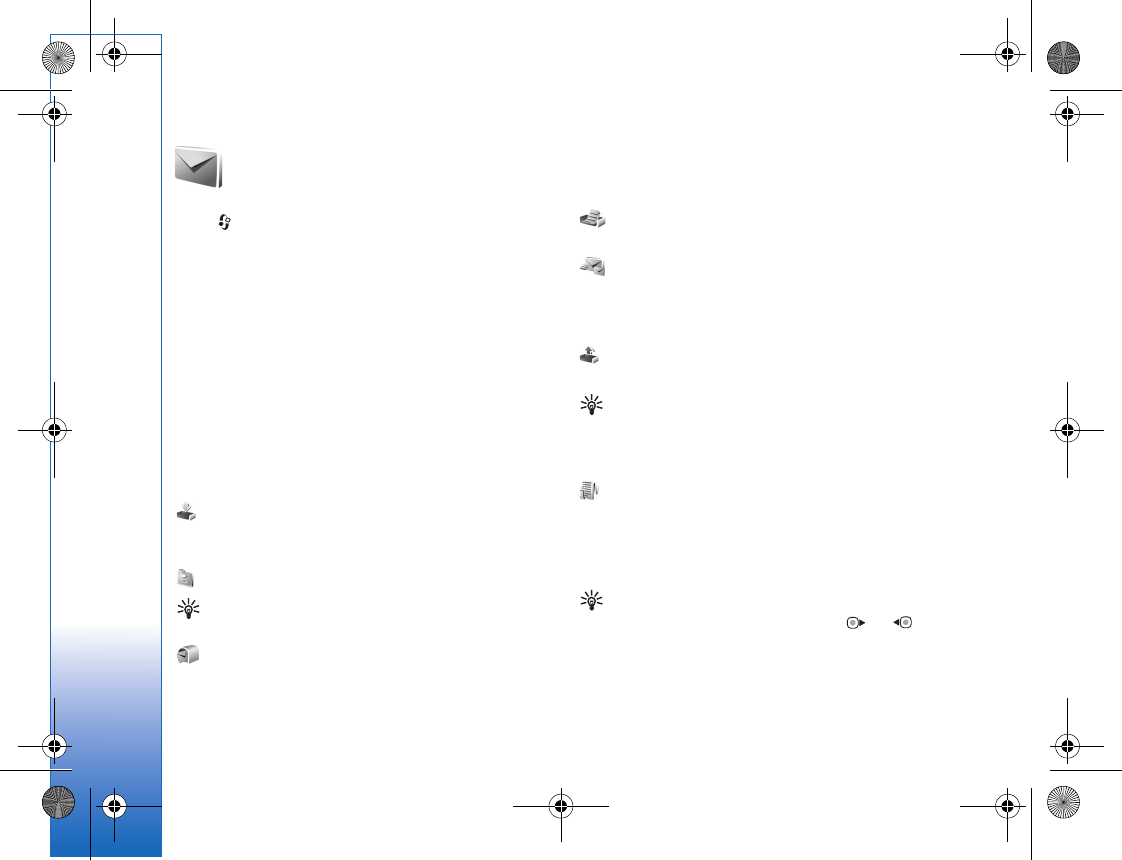
Messaging
58
Messaging
Press , and select Messag. (network service). In
Messaging, you can create, send, receive, view, edit, and
organize text messages, multimedia messages, e-mail
messages, and special text messages containing data. You
can also receive Web service messages, cell broadcast
messages, and send service commands. Messages and
data received using Bluetooth connectivity or infrared are
received in the Inbox folder in Messaging.
To create a new message, select New message.
Only devices that have compatible features can receive
and display multimedia messages. The appearance of a
message may vary depending on the receiving device.
Messaging contains the following folders:
Inbox—Received messages, except e-mail and cell
broadcast messages, are stored here. E-mail messages are
stored in the Mailbox.
My folders—Organize your messages into folders.
Tip! To avoid rewriting messages that you send often,
use texts in the templates folder.
Mailbox—Connect to your remote mailbox to
retrieve your new e-mail messages or view your previously
retrieved e-mail messages offline. See ‘E-mail’, p. 68.
Drafts—Draft messages that have not been sent are
stored here.
Sent—The last 20 messages that have been sent,
excluding messages sent using Bluetooth connectivity or
infrared, are stored here. To change the number of
messages to be saved, see ‘Other settings’, p. 70.
Outbox—Messages waiting to be sent are temporarily
stored here.
Example: Messages are placed in the outbox, for
example, when your device is outside network
coverage. You can also schedule e-mail messages to be
sent the next time you connect to your remote mailbox.
Reports—You can request the network to send you a
delivery report of the text messages and multimedia
messages you have sent (network service). Receiving a
delivery report of a multimedia message that has been sent
to an e-mail address may not be possible.
Tip! When you have opened any of the default folders,
to switch between the folders, press or .
To enter and send service requests (also known as USSD
commands), such as activation commands for network
R1108_en.book Page 58 Wednesday, March 5, 2008 9:53 AM
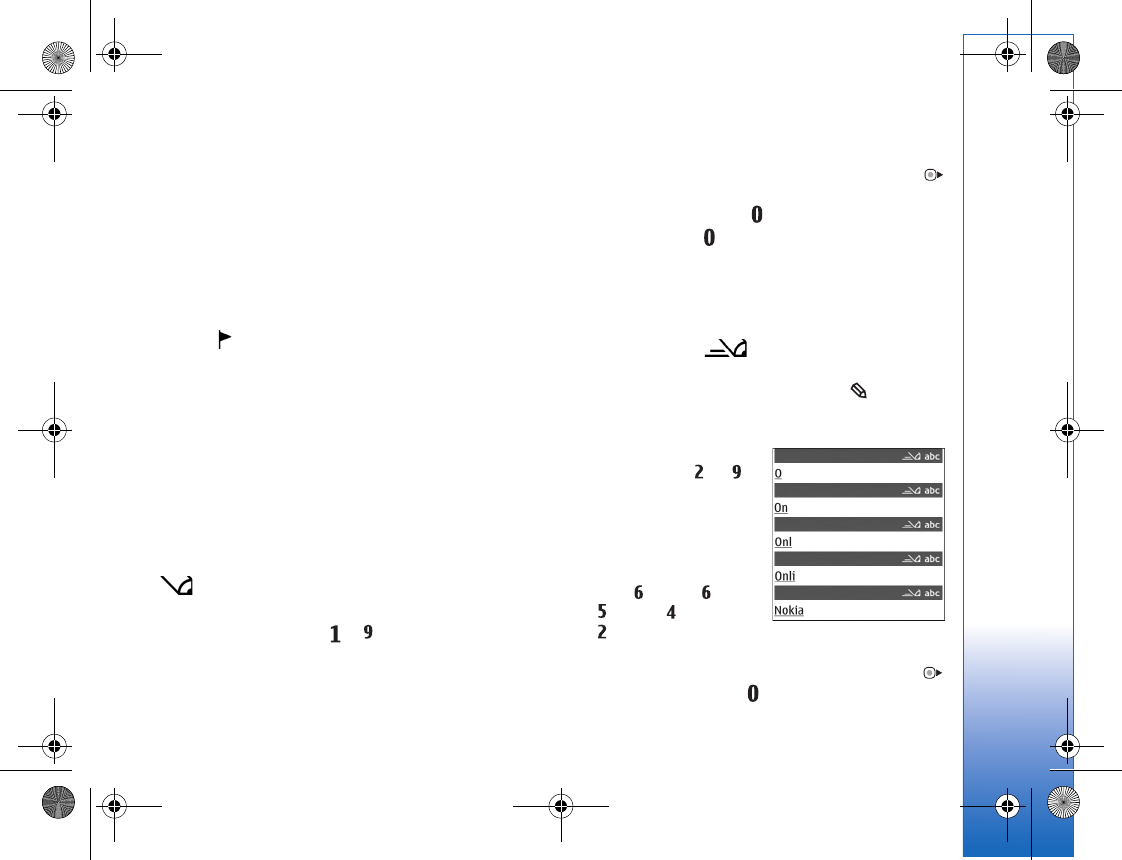
Messaging
59
services, to your service provider, select Options > Service
command in the main view of Messaging.
Cell broadcast (network service) allows you to receive
messages on various topics, such as weather or traffic
conditions, from your service provider. For available topics
and relevant topic numbers, contact your service provider.
In the main view of Messaging, select Options > Cell
broadcast. In the main view, you can see the status of a
topic, a topic number, name, and whether it has been
flagged ( ) for follow-up.
Cell broadcast messages cannot be received in UMTS
networks. A packet data connection may prevent cell
broadcast reception.
Write text
ABC, abc, and Abc indicate the selected character mode.
123 indicates the number mode.
Traditional text input
is displayed when you write text using traditional
text input.
• Press a number key ( — ) repeatedly until the
desired character appears. There are more characters
available for a number key than are printed on the key.
• If the next letter is located on the same key as the
present one, wait until the cursor appears (or press
to end the time-out period), and enter the letter.
• To insert a space, press . To move the cursor to the
next line, press three times.
Predictive text input
You can enter any letter with a single keypress. Predictive
text input is based on a built-in dictionary to which you
can add new words. is displayed when you write
text using predictive text input.
1To activate predictive text input, press , and select
Predictive text on. This activates predictive text input
for all editors in the device.
2To write the desired word,
press the keys — .
Press each key only once
for one letter. For
example, to write "Nokia"
when the English
dictionary is selected,
press for N, for o,
for k, for i, and
for a.
The word suggestion changes after each keypress.
3When you finish writing the word correctly, press
to confirm it, or press to add a space.
R1108_en.book Page 59 Wednesday, March 5, 2008 9:53 AM
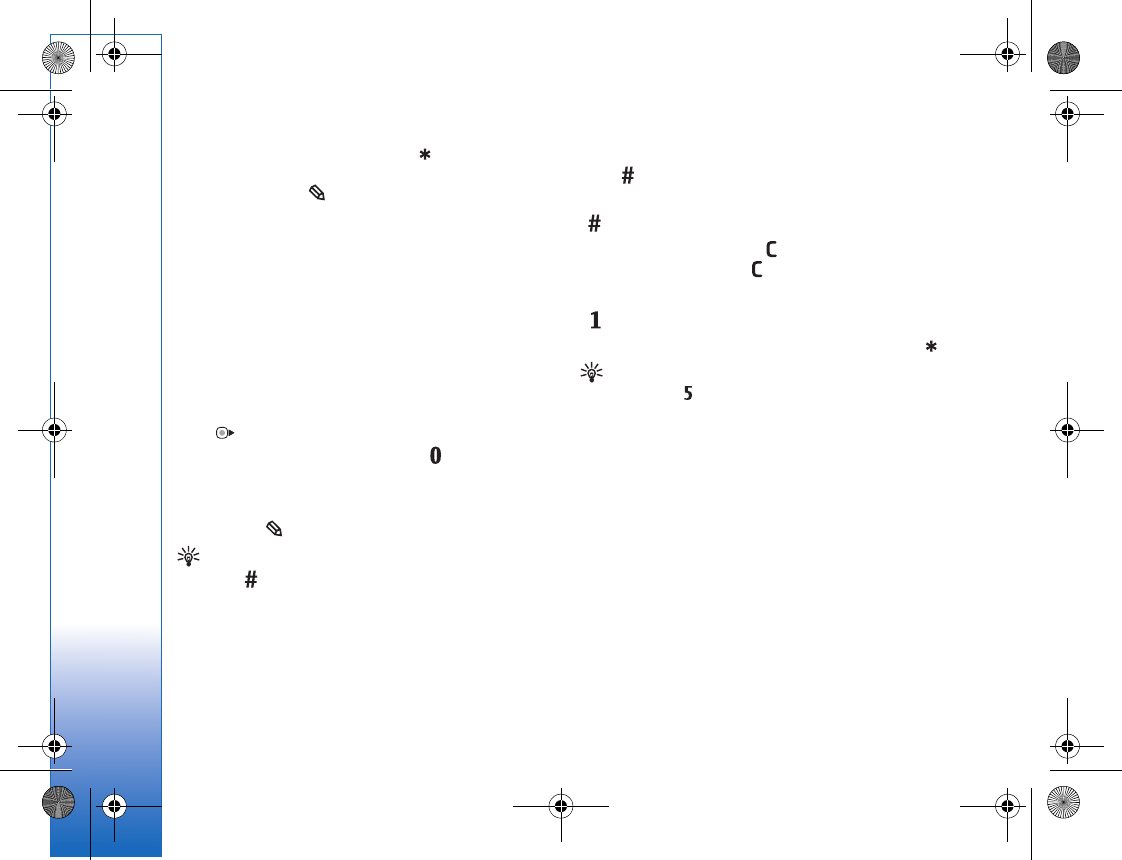
Messaging
60
If the word is not correct, press repeatedly to
view the matching words the dictionary has found one
by one, or press , and select Predictive text >
Matches.
If the ? character is shown after the word, the word is
not in the dictionary. To add a word to the dictionary,
select Spell, enter the word using traditional text
input, and select OK. The word is added to the
dictionary. When the dictionary is full, a new word
replaces the oldest added word.
4Start writing the next word.
Write compound words
Write the first half of a compound word; to confirm it,
press . Write the last part of the compound word. To
complete the compound word, press to add a space.
Turn predictive text input off
To turn predictive text input off for all editors in the
device, press , and select Predictive text > Off.
Tip! To turn predictive text input on or off, quickly
press twice.
Tips on text input
To insert a number in the letter mode, press and hold the
desired number key.
To switch between the letter and number mode, press and
hold .
To switch between the different character modes, press
.
To delete a character, press . To delete more than one
character, press and hold .
The most common punctuation marks are available under
.
To open a list of special characters, press and hold .
Tip! To insert several special characters at the same
time, press when you select each character.
Write and send messages
Before you can create a multimedia message or write an
e-mail, you must have the correct connection settings in
place. See ‘Receive MMS and e-mail settings’, p. 62 and
‘E-mail’, p. 68.
The wireless network may limit the size of MMS messages.
If the inserted picture exceeds this limit, the device may
make it smaller so that it can be sent by MMS.
1Select New message and from the following:
Text message—to send a text message
Multimedia message—to send a multimedia message
(MMS)
R1108_en.book Page 60 Wednesday, March 5, 2008 9:53 AM
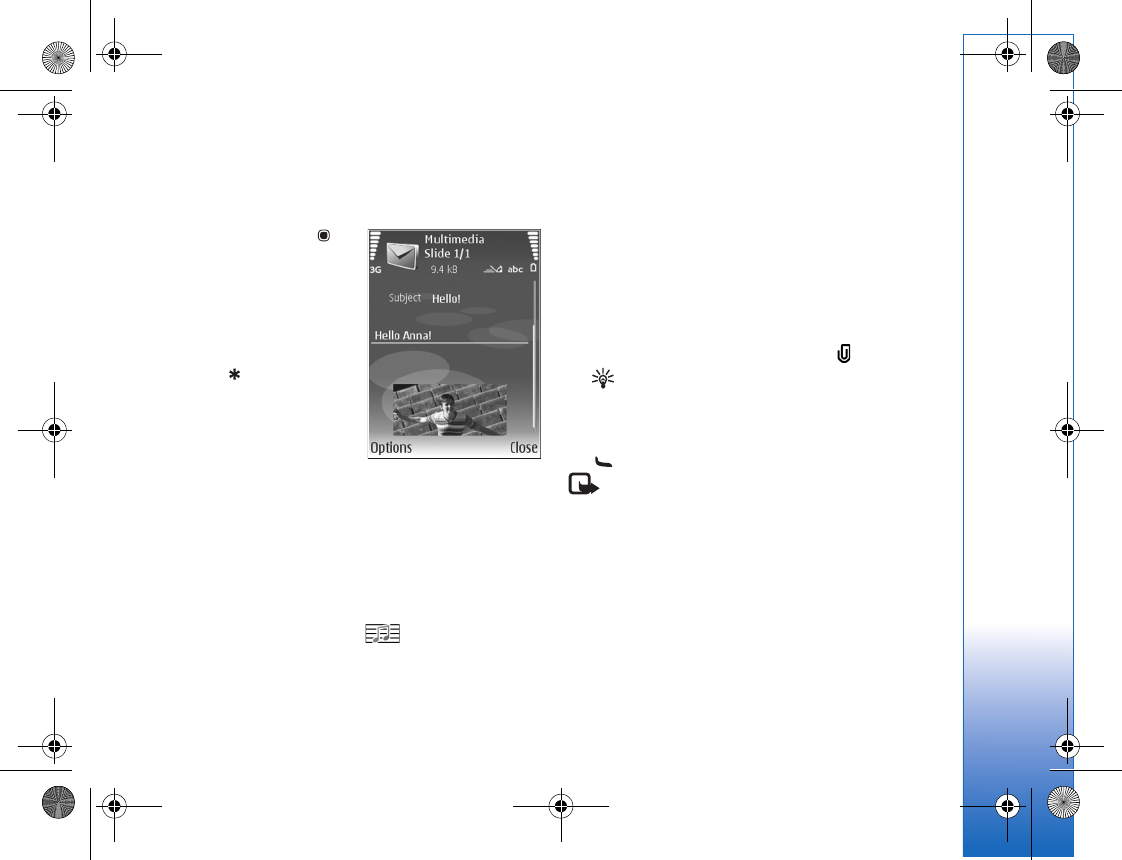
Messaging
61
E-mail—to send an e-mail
If you have not set up your e-mail account, you are
prompted to do so. To start creating the e-mail settings
with the mailbox guide, select Start.
2In the To field, press to
select recipients or groups
from contacts, or enter
the recipient’s phone
number or e-mail address.
To add a semicolon (;) that
separates the recipients,
press . You can also
copy and paste the
number or address from
the clipboard.
3In the Subject field, enter
the subject of a
multimedia message or e-mail. To change the fields
that are visible, select Options > Address fields.
4In the message field, write the message. To insert a
template, select Options > Insert or Insert object >
Template.
5To add a media object to a multimedia message, select
Options > Insert object > Image, Sound clip, or Video
clip. When sound is added, is shown.
You cannot send video clips that are saved in the .mp4
format in a multimedia message. To change the format
in which recorded videos are saved, see ‘Video
settings’, p. 26.
6To take a new picture or record sound or video for a
multimedia message, select Options > Insert new >
Image, Sound clip, or Video clip. To insert a new slide
to the message, select Slide.
To see what the multimedia message looks like, select
Options > Preview.
7To add an attachment to an e-mail, select Options >
Insert > Image, Sound clip, Video clip, or Note.
E-mail attachments are indicated by .
Tip! To send other file types as attachments, open
the appropriate application, and select Options >
Send > Via e-mail, if available.
8To send the message, select Options > Send, or press
.
Note: Your device may indicate that your message
was sent to the message center number programmed
into your device. Your device may not indicate whether
the message is received at the intended destination.
For more details about messaging services, contact
your service provider.
Your device supports the sending of text messages beyond
the character limit for a single message. Longer messages
are sent as a series of two or more messages. Your service
provider may charge accordingly. Characters that use
accents or other marks, and characters from some
R1108_en.book Page 61 Wednesday, March 5, 2008 9:53 AM
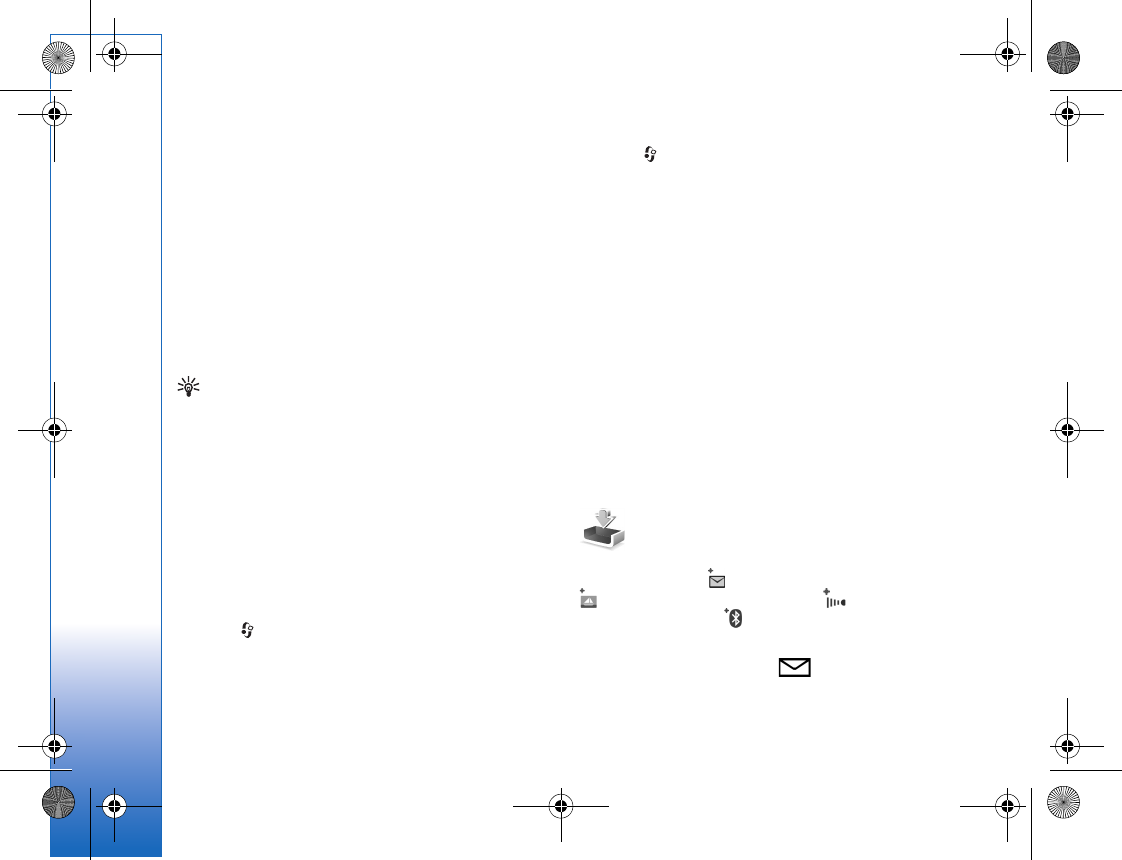
Messaging
62
language options, take up more space, limiting the
number of characters that can be sent in a single message.
In the navigation bar, you can see the message length
indicator counting backwards. For example, 10 (2) means
that you can still add 10 characters for the text to be sent
as two messages.
E-mail messages are automatically placed in Outbox
before sending. If sending does not succeed, the e-mail is
left in the Outbox first with the Queued status, and then
if the sending has failed several times, with the Failed
status.
Tip! You can combine images, video, sound, and text
to a presentation and send it in a multimedia message.
Start to create a multimedia message, and select
Options > Create presentation. The option is shown
only if MMS creation mode is set to Guided or Free.
See ‘Multimedia messages’, p. 67.
Receive MMS and e-mail settings
You may receive the settings in a message from your
service provider. See ‘Data and settings’, p. 63.
Enter the MMS settings manually
1Press , and select Tools > Settings >
Connection > Access points, and define the settings
for a multimedia messaging access point. See
‘Connection’, p. 117.
2Press , and select Messag. > Options > Settings >
Multimedia message > Access point in use and the
access point you created as the preferred connection.
See also ‘Multimedia messages’, p. 67.
Before you can send, receive, retrieve, reply to, and forward
e-mail, you must do the following:
• Configure an Internet access point (IAP) correctly. See
‘Connection’, p. 117.
• Define your e-mail settings correctly. If you select
Mailbox in the Messaging main view and have not set
up your e-mail account, you are prompted to do so. To
start creating the e-mail settings with the mailbox
guide, select Start. See also ‘E-mail’, p. 68.
You must have a separate e-mail account. Follow the
instructions given by your remote mailbox and Internet
service provider (ISP).
Inbox—receive messages
In the Inbox folder, indicates an unread text message,
an unread multimedia message, data received
through infrared, and data received through Bluetooth
connectivity.
When you receive a message, and 1 new message
are shown in the standby mode. To open the message,
R1108_en.book Page 62 Wednesday, March 5, 2008 9:53 AM
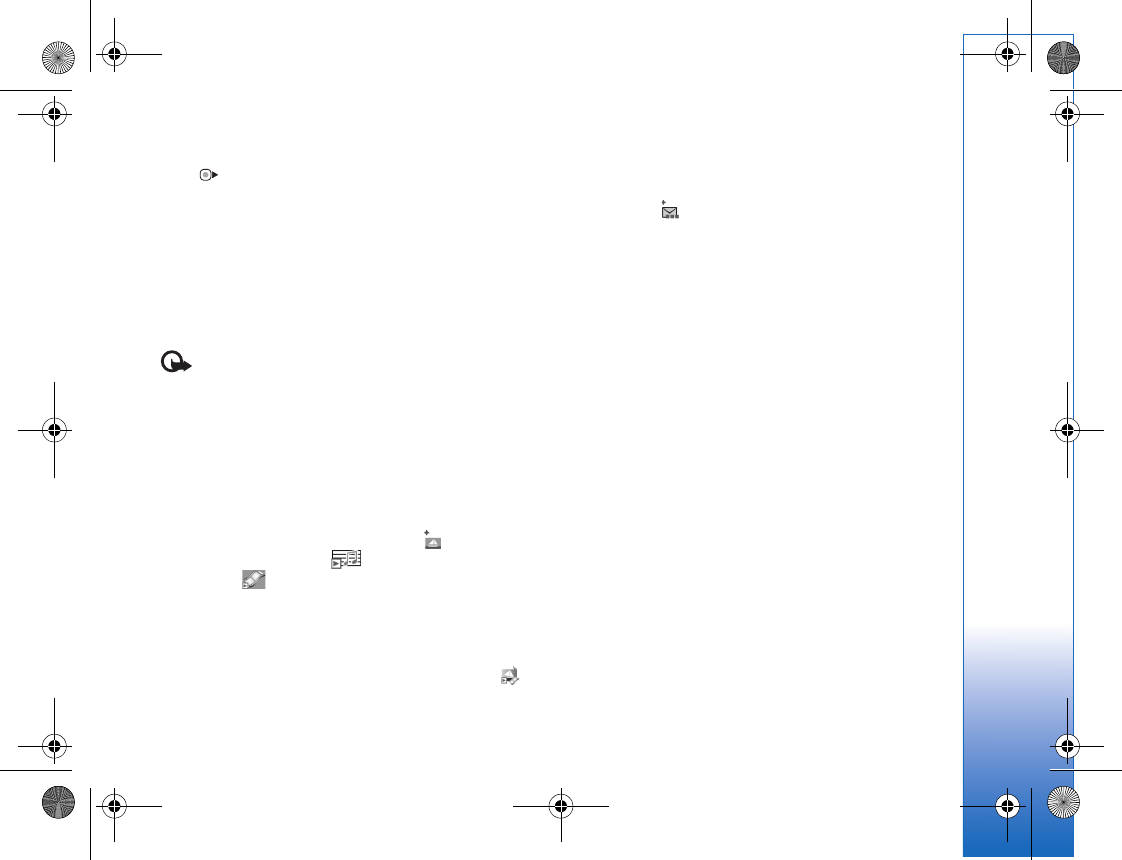
Messaging
63
select Show. To open a message in Inbox, scroll to it, and
press .
To reply to a received message, select Options > Reply
To print a text or a multimedia message on a compatible
Basic Print Profile (BPP) equipped printer with Bluetooth
connectivity (such as HP Deskjet 450 Mobile Printer or HP
Photosmart 8150), select Options > Print.
Multimedia messages
Important: Exercise caution when opening
messages. Multimedia message objects may contain
malicious software or otherwise be harmful to your device
or PC.
You may receive a notification that a multimedia message
is waiting in the multimedia message center. To start a
packet data connection to retrieve the message to your
device, select Options > Retrieve.
When you open a multimedia message ( ), you may see
an image and a message. is shown if sound is
included, or if video is included. To play the sound or
the video, select the indicator.
To see the media objects that have been included in the
multimedia message, select Options > Objects.
If the message includes a multimedia presentation, is
displayed. To play the presentation, select the indicator.
Data and settings
Your device can receive many kinds of messages that
contain data ( ):
Configuration message—You may receive settings from
your service provider, or company information
management department in a configuration message. To
save the settings, select Options > Save all.
Business card—To save the information to Contacts,
select Options > Save business card. Certificates or
sound files attached to the business card are not saved.
Ringing tone—To save the ringing tone, select Options >
Save.
Operat. logo—To have the logo shown in the standby
mode instead of the network operator’s own
identification, select Options > Save.
Calen. entry—To save the invitation, select Options >
Save to Calendar.
Web message—To save the bookmark to the bookmarks
list in the Web browser, select Options > Add to
bookmarks. If the message contains both access point
settings and bookmarks, to save the data, select Options >
Save all.
R1108_en.book Page 63 Wednesday, March 5, 2008 9:53 AM
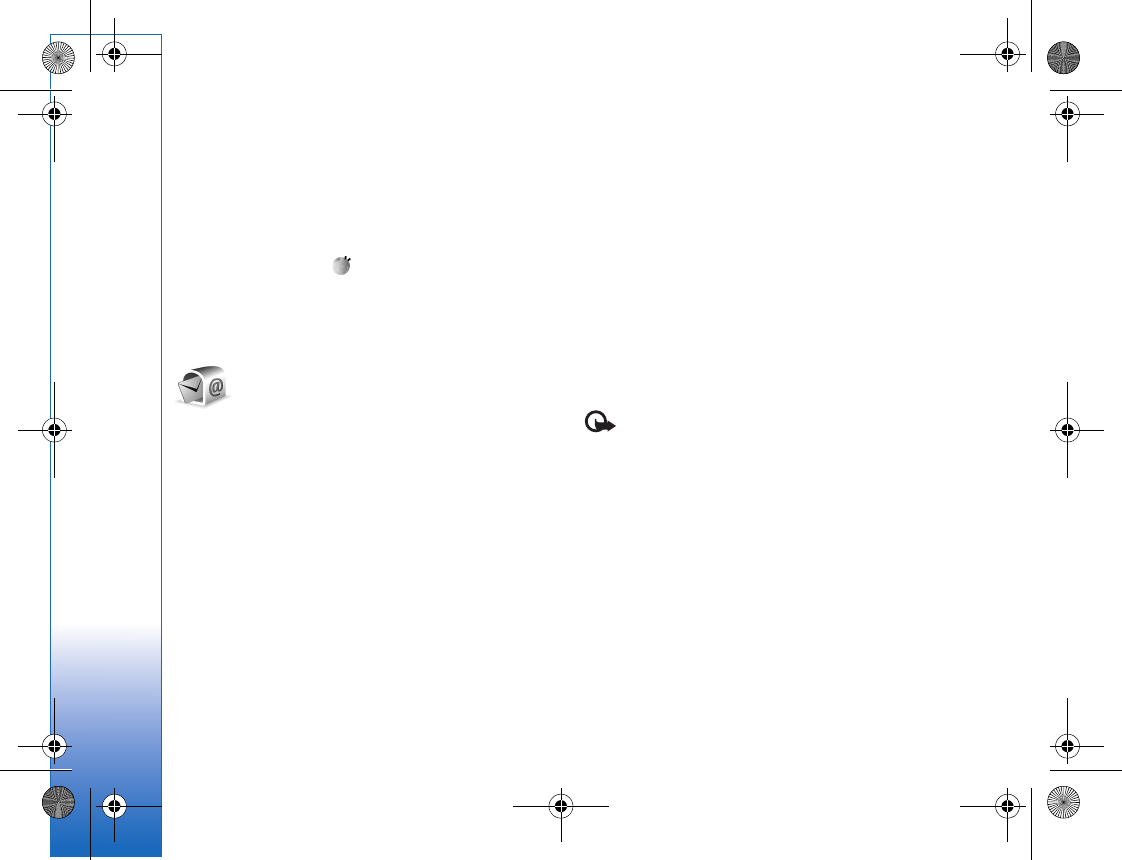
Messaging
64
E-mail notif.—The note tells you how many new e-mails
you have in your remote mailbox. An extended
notification may list more detailed information.
Web service messages
Web service messages ( ) are notifications (for
example, news headlines) and may contain a text message
or a link. For availability and subscription, contact your
service provider.
Mailbox
If you select Mailbox and have not set up your e-mail
account, you are prompted to do so. To start creating the
e-mail settings with the mailbox guide, select Start. See
also ‘E-mail’, p. 68.
When you create a new mailbox, the name you give to the
mailbox replaces Mailbox in the Messaging main view.
You can have up to six mailboxes.
Open the mailbox
When you open the mailbox, the device asks if you want
to connect to the mailbox (Connect to mailbox?).
To connect to your mailbox and retrieve new e-mail
headings or messages, select Yes. When you view
messages online, you are continuously connected to a
remote mailbox using a data connection. See also
‘Connection’, p. 117.
To view previously retrieved e-mail messages offline, select
No. When you view e-mail messages offline, your device is
not connected to the remote mailbox.
Retrieve e-mail messages
If you are offline, select Options > Connect to start a
connection to the remote mailbox.
Important: Exercise caution when opening
messages. E-mail messages may contain malicious
software or otherwise be harmful to your device or PC.
1When you have an open connection to a remote
mailbox, select Options > Retrieve e-mail and one of
the following:
New—to retrieve all new e-mail messages
Selected—to retrieve only the e-mail messages that
have been marked
All—to retrieve all messages from the mailbox
To stop retrieving messages, select Cancel.
2After you retrieve the e-mail messages, you can
continue viewing them online, or select Options >
R1108_en.book Page 64 Wednesday, March 5, 2008 9:53 AM
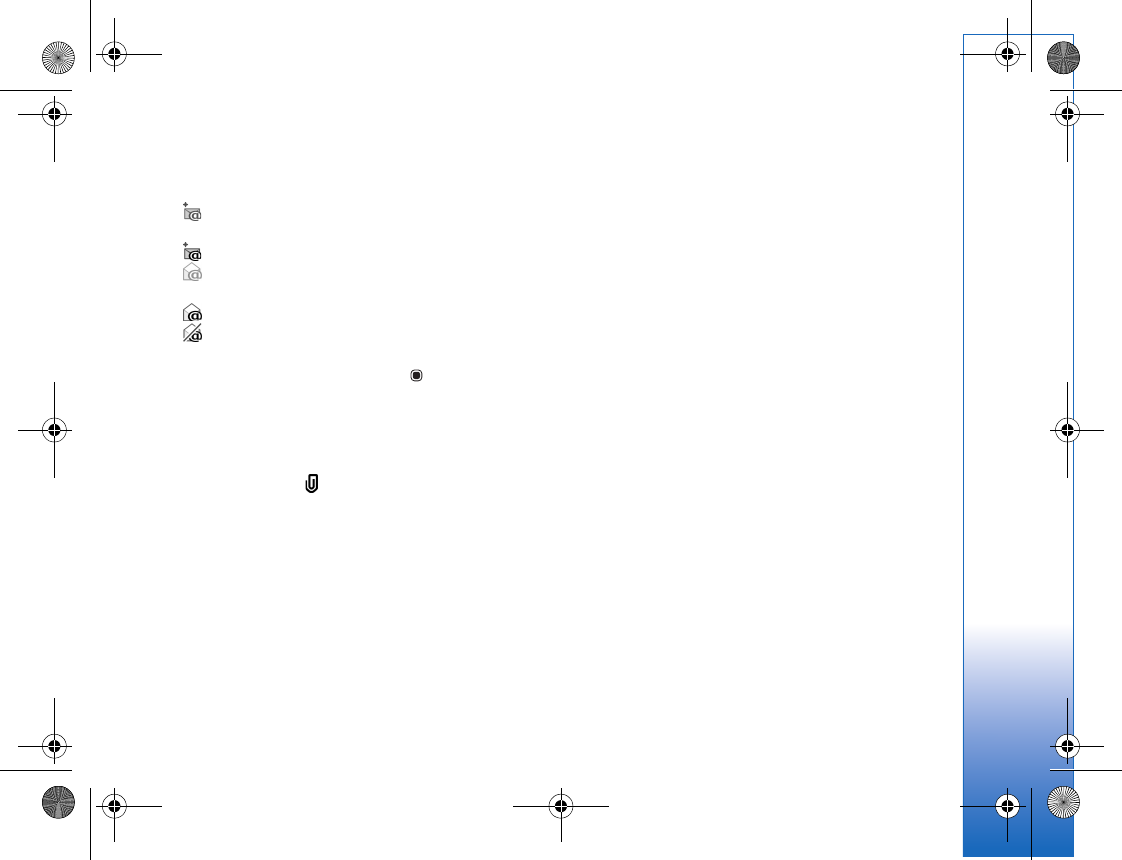
Messaging
65
Disconnect to close the connection and view the
e-mail messages offline.
E-mail status indicators:
The new e-mail (offline or online mode) has not
been retrieved to your device.
The new e-mail has been retrieved to your device.
The e-mail message has been read, and it has not
been retrieved to your device.
The e-mail message has been read.
The e-mail heading has been read and the message
content has been deleted from the device.
3To open an e-mail message, press . If the e-mail
message has not been retrieved and you are offline, you
are asked if you want to retrieve this message from the
mailbox.
To view e-mail attachments, open a message that has the
attachment indicator , and select Options >
Attachments. If the attachment has a dimmed indicator,
it has not been retrieved to the device; select Options >
Retrieve.
To print an e-mail message on a compatible Basic Print
Profile (BPP) equipped printer with Bluetooth connectivity
(such as HP Deskjet 450 Mobile Printer or HP Photosmart
8150), select Options > Print.
Retrieve e-mail messages automatically
To retrieve messages automatically, select Options > E-
mail settings > Automatic retrieval > Header
retrieval > Always enabled or Only in home net., and
define when and how often the messages are retrieved.
Retrieving e-mail messages automatically may increase
your call costs due to the data traffic.
Delete e-mail messages
To delete the contents of an e-mail message from the
device while still retaining it in the remote mailbox, select
Options > Delete. In Delete msg. from:, select Phone
only.
The device mirrors the e-mail headings in the remote
mailbox. Although you delete the message content, the
e-mail heading stays in your device. If you want to remove
the heading as well, you must first delete the e-mail
message from your remote mailbox, and then make a
connection from your device to the remote mailbox again
to update the status.
To delete an e-mail from the device and the remote
mailbox, select Options > Delete. In Delete msg. from:,
select Phone and server.
If you are offline, the e-mail is deleted first from your
device. During the next connection to the remote mailbox,
R1108_en.book Page 65 Wednesday, March 5, 2008 9:53 AM
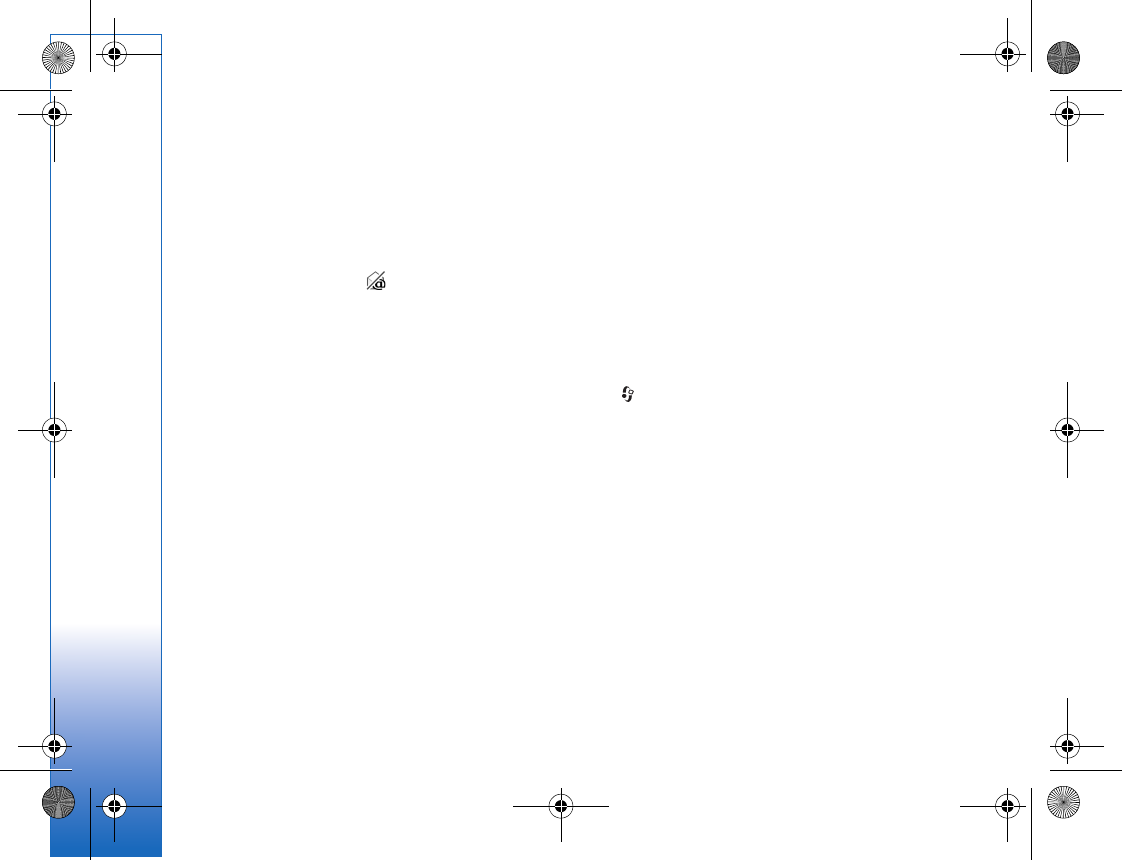
Messaging
66
it is automatically deleted from the remote mailbox. If you
are using the POP3 protocol, messages marked to be
deleted are removed only after you have closed the
connection to the remote mailbox.
To cancel deleting an e-mail from the device and server,
scroll to an e-mail that has been marked to be deleted
during the next connection ( ), and select Options >
Restore.
Disconnect from the mailbox
When you are online, to end the data connection to the
remote mailbox, select Options > Disconnect.
View messages on a SIM card
Before you can view SIM messages, you must copy them
to a folder in your device.
1In the Messaging main view, select Options > SIM
messages.
2Select Options > Mark/Unmark > Mark or Mark all
to mark messages.
3Select Options > Copy. A list of folders opens.
4To start copying, select a folder and OK. To view the
messages, open the folder.
Messaging settings
Fill in all fields marked with Must be defined or with a red
asterisk. Follow the instructions given by your service
provider. You may also obtain settings from your service
provider in a configuration message.
Some or all message centers or access points may be preset
for your device by your service provider, and you may not
be able to change, create, edit, or remove them.
Text messages
Press , and select Messag. > Options > Settings >
Text message and from the following:
Message centres—View a list of all text message centers
that have been defined.
Msg. centre in use—Select which message center is used
to deliver text messages.
Character encoding— To use character conversion to
another encoding system when available, select Reduced
support.
Receive report—Select whether the network sends
delivery reports on your messages (network service).
Message validity—Select how long the message center
resends your message if the first attempt fails (network
service). If the recipient cannot be reached within the
R1108_en.book Page 66 Wednesday, March 5, 2008 9:53 AM
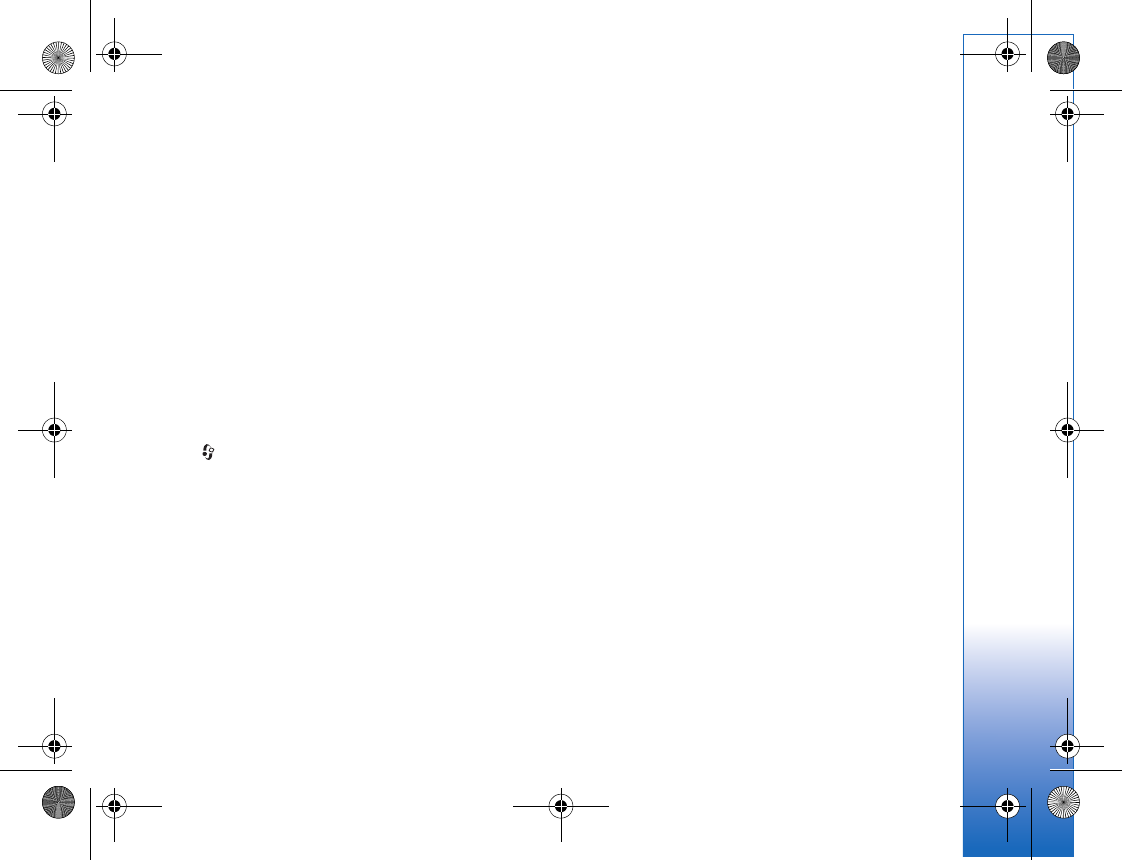
Messaging
67
validity period, the message is deleted from the message
center.
Message sent as—Change this option only if you are sure
that your message center is able to convert text messages
into these other formats. Contact your network operator.
Preferred conn.—Select the connection used for sending
text messages: GSM network or packet data, if supported
by the network. See ‘Connection’, p. 117.
Reply via same ctr.—Select whether you want the reply
message to be sent using the same text message center
number (network service).
Multimedia messages
Press , and select Messag. > Options > Settings >
Multimedia message and from the following:
Image size—Define the size of the image in a multimedia
message: Original (shown only when the MMS creation
mode is set to Guided or Free), Small, or Large.
MMS creation mode —If you select Guided, the device
informs you if you try to send a message that may not be
supported by the recipient. Select Restricted; the device
prevents you from sending messages that may not be
supported.
Access point in use—Select which access point is used as
the preferred connection for the multimedia message
center.
Multimedia retrieval—Select how you want to receive
multimedia messages. To receive multimedia messages
automatically in your home network (the operator whose
SIM card is in your device), select Auto. in home network.
Outside your home network, you receive a notification
that there is multimedia message that you can retrieve in
the multimedia message center.
When you are outside your home network, sending and
receiving multimedia messages may cost you more.
If you select Multimedia retrieval > Always automatic,
your device automatically makes an active packet data
connection to retrieve the message both in and outside
your home network.
Allow anon. msgs.—Select whether you want to reject
messages from an anonymous sender.
Receive adverts—Define whether you want to receive
multimedia message advertisements.
Receive report—Select whether you want the status of
the sent message to be shown in the log (network service).
Receiving a delivery report of a multimedia message that
has been sent to an e-mail address may not be possible.
R1108_en.book Page 67 Wednesday, March 5, 2008 9:53 AM
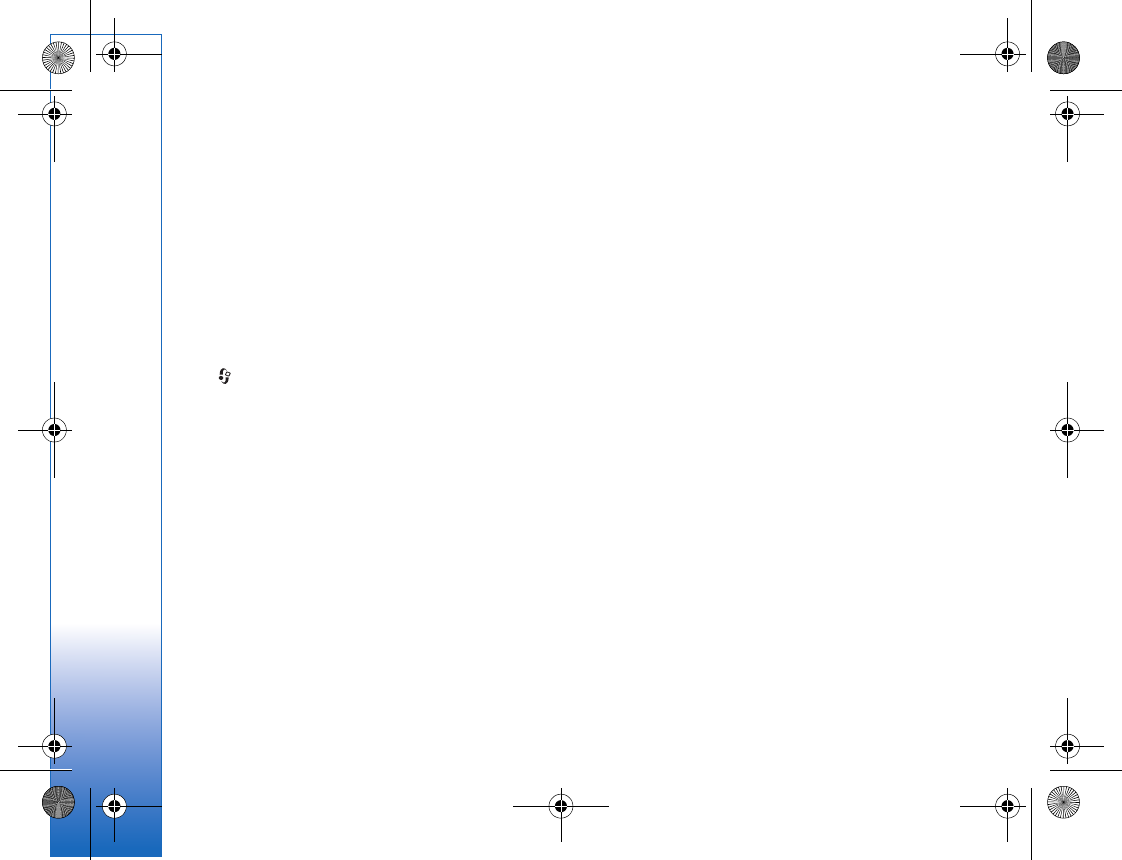
Messaging
68
Deny report sending—Select whether you want to deny
your device sending delivery reports of received
multimedia messages.
Message validity—Select how long the message center
resends your message if the first attempt fails (network
service). If the recipient cannot be reached within the
validity period, the message is deleted from the message
center.
E-mail
Press , and select Messag. > Options > Settings > E-
mail and from the following:
Mailboxes—Select a mailbox to change the following
settings: Connection settings, User settings, Retrieval
settings, and Automatic retrieval.
Mailbox in use— Select which mailbox you want to use
for sending e-mail.
To create a new mailbox, select Options > New mailbox
in the mailbox main view.
Connection settings
To edit the settings for the e-mail you receive, select
Incoming e-mail and from the following:
User name—Enter your user name, given to you by your
service provider.
Password—Enter your password. If you leave this field
blank, you are prompted for the password when you try to
connect to your remote mailbox.
Incoming mail serv.—Enter the IP address or host name of
the mail server that receives your e-mail.
Access point in use—Select an Internet access point (IAP).
See ‘Connection’, p. 117.
Mailbox name—Enter a name for the mailbox.
Mailbox type—Defines the e-mail protocol that your
remote mailbox service provider recommends. The options
are POP3 and IMAP4. This setting can be selected only
once and cannot be changed if you have saved or exited
from the mailbox settings. If you use the POP3 protocol,
e-mail messages are not updated automatically when you
are online. To see the latest e-mail messages, you must
disconnect and make a new connection to your mailbox.
Security (ports)—Select the security option used to secure
the connection to the remote mailbox.
Port—Define a port for the connection.
APOP secure login (for POP3 only)—Use with the POP3
protocol to encrypt the sending of passwords to the
remote e-mail server while connecting to the mailbox.
To edit the settings for the e-mail you send, select
Outgoing e-mail and from the following:
R1108_en.book Page 68 Wednesday, March 5, 2008 9:53 AM
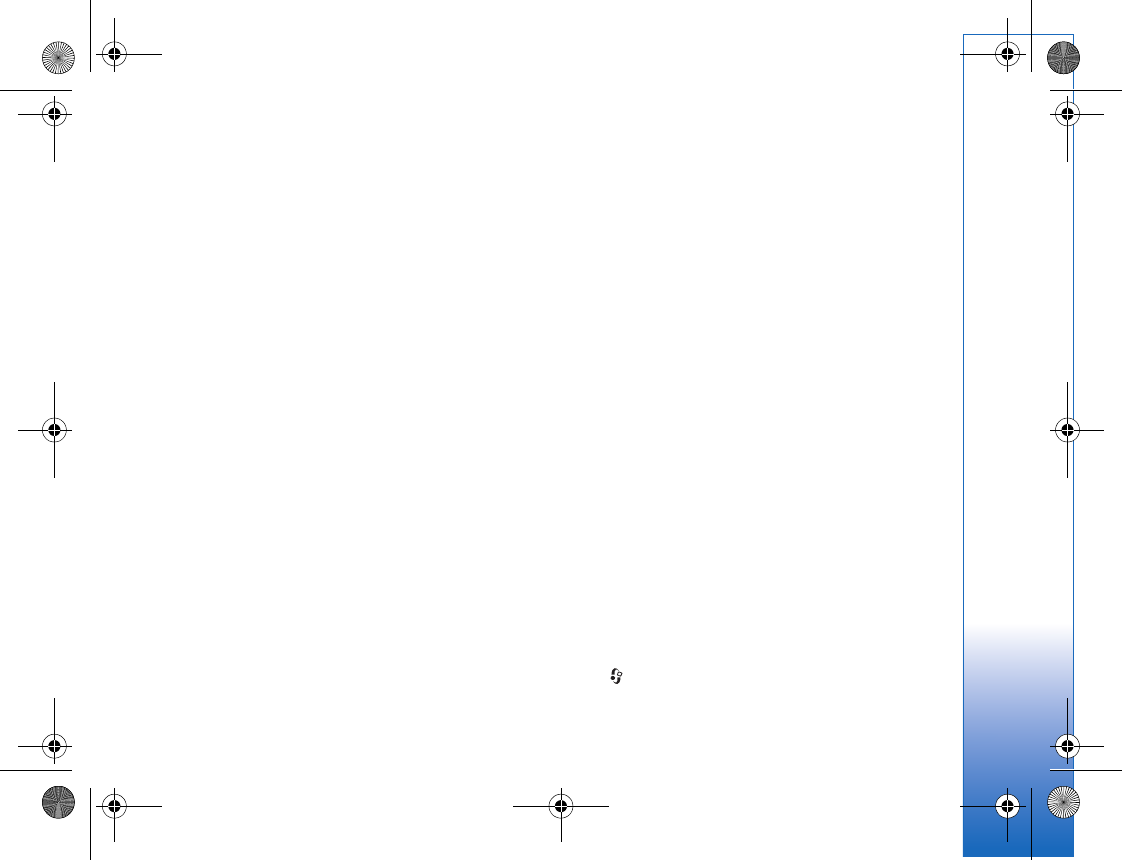
Messaging
69
My e-mail address—Enter the e-mail address given to you
by your service provider. Replies to your messages are sent
to this address.
Outgoing mail serv.—Enter the IP address or host name of
the mail server that sends your e-mail. You may only be
able to use the outgoing server of your network operator.
Contact your service provider for more information.
Access point in use—Select an Internet access point (IAP).
See ‘Connection’, p. 117.
The settings for User name, Password, Security (ports),
and Port are similar to the ones in Incoming e-mail.
User settings
My name—Enter your own name. Your name replaces your
e-mail address in the recipient’s device when the
recipient’s device supports this function.
Send message—Define how e-mail is sent from your
device. Select Immediately for the device to connect to the
mailbox when you select Send message. If you select
During next conn., e-mail is sent when the connection to
the remote mailbox is available.
Send copy to self—Select whether you want to save a
copy of the e-mail to your remote mailbox and to the
address defined in My e-mail address.
Include signature—Select whether you want to attach a
signature to your e-mail messages.
New e-mail alerts—Select whether you want to receive
the new e-mail indications, a tone and a note, when new
mail is received to the mailbox.
Retrieval settings
E-mail to retrieve—Define which parts of the e-mail are
retrieved: Headers only, Partially (kB) (for POP3 only), or
Msgs. & attachs. (for POP3 only).
Retrieval amount—Define how many new e-mail
messages are retrieved to the mailbox.
IMAP4 folder path (for IMAP4 only)—Define the folder
path for folders to be subscribed.
Folder subscriptions (for IMAP4 only)—Subscribe to other
folders in the remote mailbox and retrieve content from
those folders.
Automatic retrieval
Header retrieval—Select whether you want the device to
retrieve new e-mail automatically. You can define when,
and how often, the messages are retrieved.
Retrieving e-mail messages automatically may increase
your call costs due to the data traffic.
Web service messages
Press , and select Messag. > Options > Settings >
Service message. Select whether you want to receive
R1108_en.book Page 69 Wednesday, March 5, 2008 9:53 AM
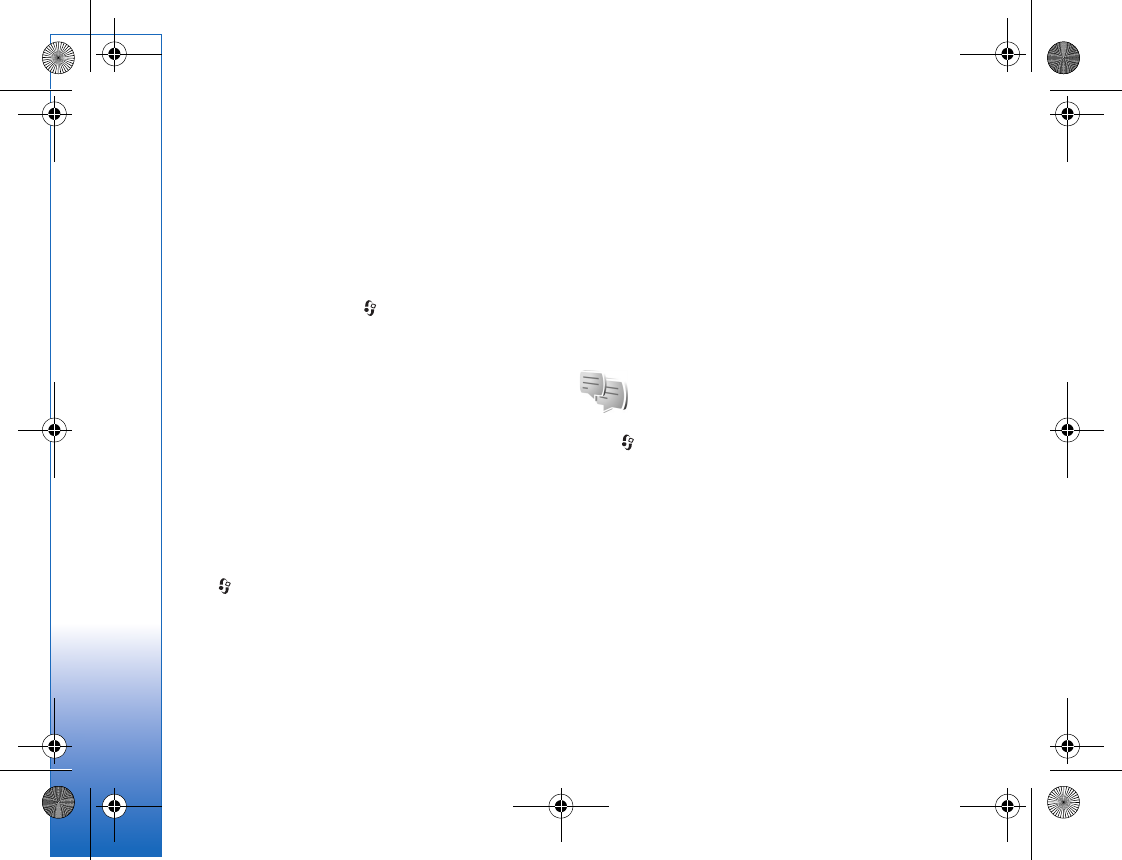
Messaging
70
service messages. If you want to set the device to
automatically activate the browser and start a network
connection to retrieve content when you receive a service
message, select Download messages > Automatically.
Cell broadcast
Check the available topics and related topic numbers with
your service provider. Press , and select Messag. >
Options > Settings > Cell broadcast and from the
following:
Reception—Select whether you want to receive cell
broadcast messages.
Language—Select the languages in which you want to
receive messages: All, Selected, or Other.
Topic detection—Select whether the device
automatically searches for new topic numbers, and saves
the new numbers without a name to the topic list.
Other settings
Press , and select Messag. > Options > Settings >
Other and from the following:
Save sent messages—Select whether you want to save a
copy of the text messages, multimedia messages, or e-
mail that you send to the Sent folder.
No. of saved msgs.—Define how many sent messages are
saved to the Sent folder at a time. The default limit is 20
messages. When the limit is reached, the oldest message is
deleted.
Folder view—To change the folder view layout from 1 line
to 2 lines.
Memory in use—If a compatible memory card is inserted
in the device, select the memory where you want to save
your messages: Phone memory or Memory card.
IM—instant messaging
Press , and select Applications > IM.
Instant messaging (network service) allows you to
converse with other people using instant messages and
join discussion forums (IM groups) with specific topics.
Various service providers maintain compatible IM servers
that you can log in to after you register to an IM service.
Service providers may differ in their support of features.
Select Conversations to start or continue a conversation
with an IM user; IM contacts to create, edit, or view the
online status of your IM contacts; IM groups to start or
continue a group conversation with multiple IM users; or
Record. chats to view a previous instant messaging
session that you saved.
R1108_en.book Page 70 Wednesday, March 5, 2008 9:53 AM
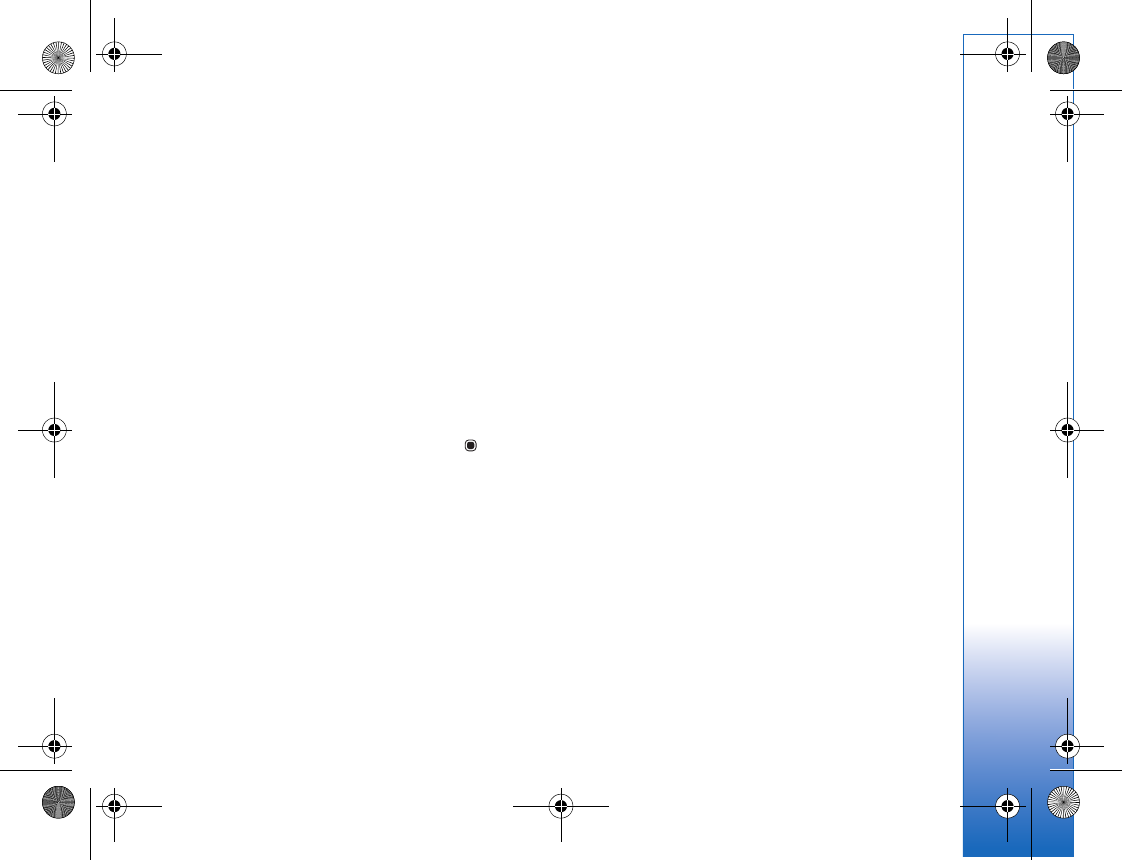
Messaging
71
Receive IM settings
You must save the settings to access the service that you
want to use. You may receive the settings in a special text
message from the service provider that offers the IM
service. See ‘Data and settings’, p. 63. You can also enter
the settings manually. See ‘Instant messaging server
settings’, p. 73.
Connect to an IM server
1To connect to the IM server in use, open IM, and select
Options > Login. To change the IM server in use and
save new IM servers, see ‘Instant messaging server
settings’, p. 73.
2Enter your user ID and password, and press to log in.
You obtain the user ID and password for the IM server
from your service provider.
3To log out, select Options > Logout.
Modify your IM settings
Select Options > Settings > IM settings and from the
following:
Use screen name (shown only if IM groups are supported
by the server)—To enter a nickname, select Yes.
Show my availability—To allow others to see if you are
online, select To everyone.
Allow messages from—To allow messages from all, select
All.
Allow invitations from—To allow invitations only from
your IM contacts, select IM contacts only. IM invitations
are sent by IM contacts who want you to join their groups.
Msg. scrolling speed—Select the speed at which new
messages are displayed.
Sort IM contacts—Select how your IM contacts are
sorted: Alphabetically or By online status.
Availabil. reloading—To select how to update information
about whether your IM contacts are online or offline,
select Automatic or Manual.
Offline contacts—Select whether IM contacts with an
offline status are shown in the IM contacts list.
Own message colour—Select the color of the instant
messages you send.
Received msg colour—Select the color of the instant
messages you receive.
IM alert tone—Change the tone played when you receive
a new instant message.
R1108_en.book Page 71 Wednesday, March 5, 2008 9:53 AM
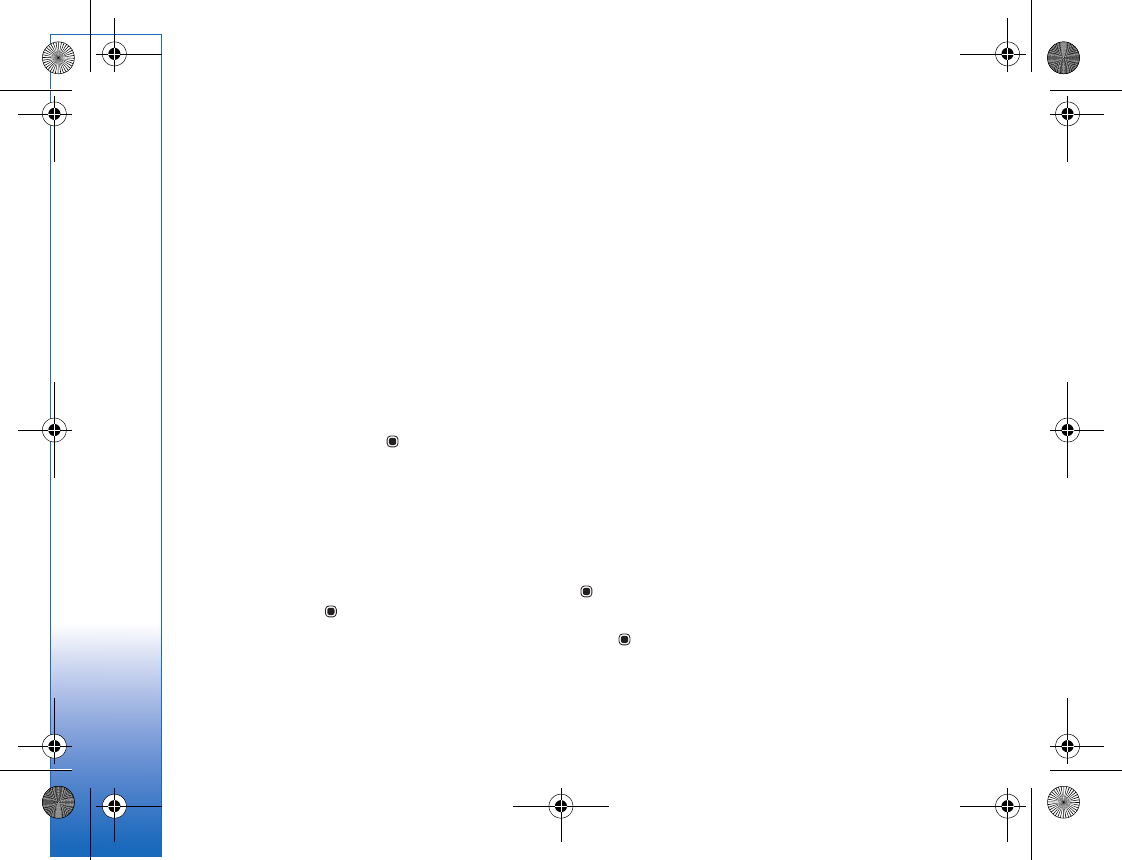
Messaging
72
Search for IM groups and users
To search for groups, in the IM groups view, select
Options > Search. You can search by Group name, Topic,
and Members (user ID).
To search for users, in the IM contacts view, select
Options > New IM contact > Search from server. You
can search by User's name, User ID, Phone number, and
E-mail address.
Join IM groups
The IM groups view shows a list of the IM groups that you
have saved or are currently joined to.
To join a saved IM group, press .
To leave the IM group, select Options > Leave IM group.
Instant messaging
After you join an IM group, you can view the messages
that are exchanged there, and send your own messages.
To send a message, write the message in the message
editor field, and press .
To send a private message to a participant, select
Options > Send private msg..
To reply to a private message sent to you, select the
message and Options > Reply.
To invite IM contacts who are online to join the IM group,
select Options > Send invitation.
To prevent receiving messages from certain participants,
select Options > Blocking options.
Record chats
To record the messages that are exchanged during a
conversation or while you are joined in a IM group, select
Options > Record chat. To stop recording, select
Options > Stop recording. To view the recorded chats, in
the main view, select Record. chats.
View and start conversations
The Conversations view shows a list of the individual
conversation participants that you have an ongoing
conversation with. Ongoing conversations are
automatically closed when you exit IM.
To view a conversation, scroll to a participant, and press
.
To continue the conversation, write your message, and
press .
R1108_en.book Page 72 Wednesday, March 5, 2008 9:53 AM
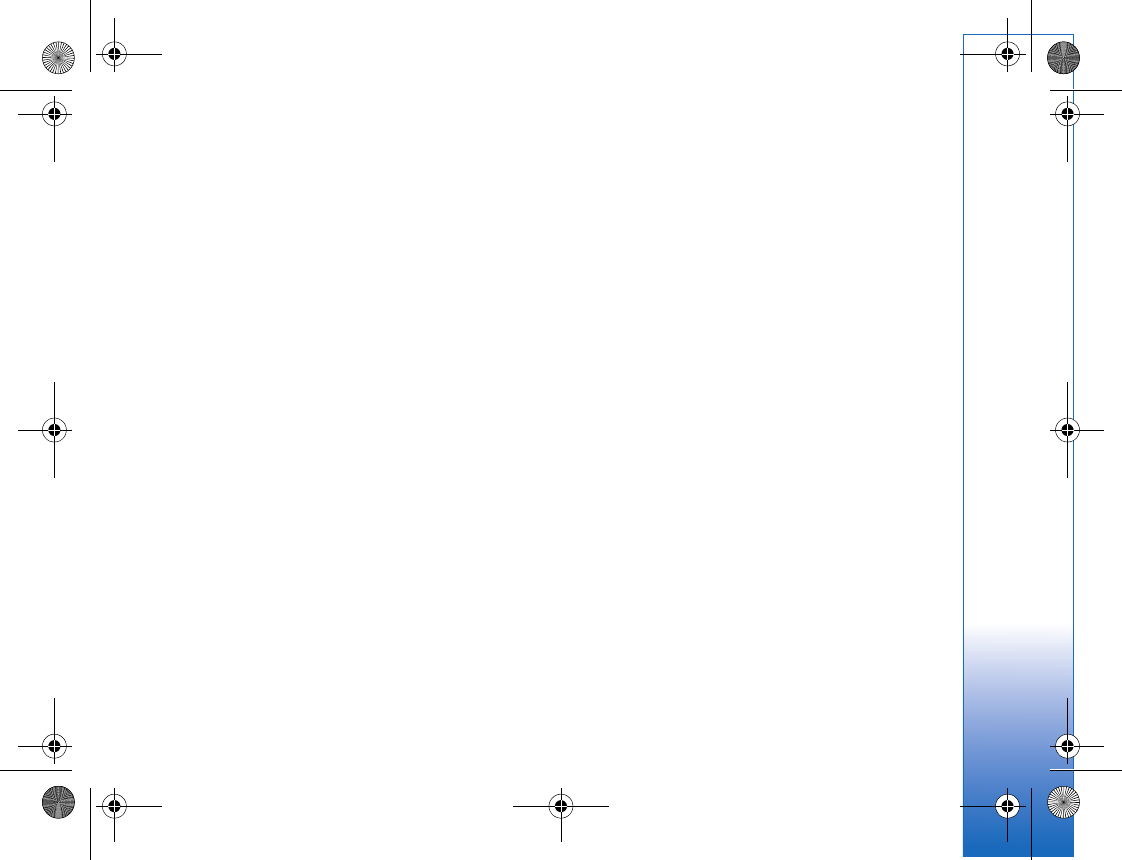
Messaging
73
To return to the conversations list without closing the
conversation, select Back. To close the conversation, select
Options > End conversation.
To start a new conversation, select Options > New
conversation.
To save a conversation participant to your IM contacts,
select Options > Add to IM contacts.
To send automatic replies to incoming messages, select
Options > Set auto reply on. You can still receive
messages.
IM contacts
In the IM contacts view, you can retrieve chat contact lists
from the server, or add a new chat contact to a contact list.
When you log in to the server, the previously used chat
contact list is retrieved from the server automatically.
Instant messaging server settings
Select Options > Settings > Server settings. You may
receive the settings in a special text message from the
service provider that offers the chat service. You obtain the
user ID and password from your service provider when you
register to the service. If you do not know your user ID or
password, contact your service provider.
Servers—View a list of all defined IM servers.
Default server—Change the IM server to which you want
to connect.
IM login type—To log in automatically when you start IM,
select On app. start-up.
To add a new server to your list of IM servers, select
Servers > Options > New server. Enter the following
settings:
Server name—the name for the chat server
Access point in use—the access point you want to use for
the server
Web address—the URL address of the IM server
User ID—your user ID
Password—your login password
R1108_en.book Page 73 Wednesday, March 5, 2008 9:53 AM
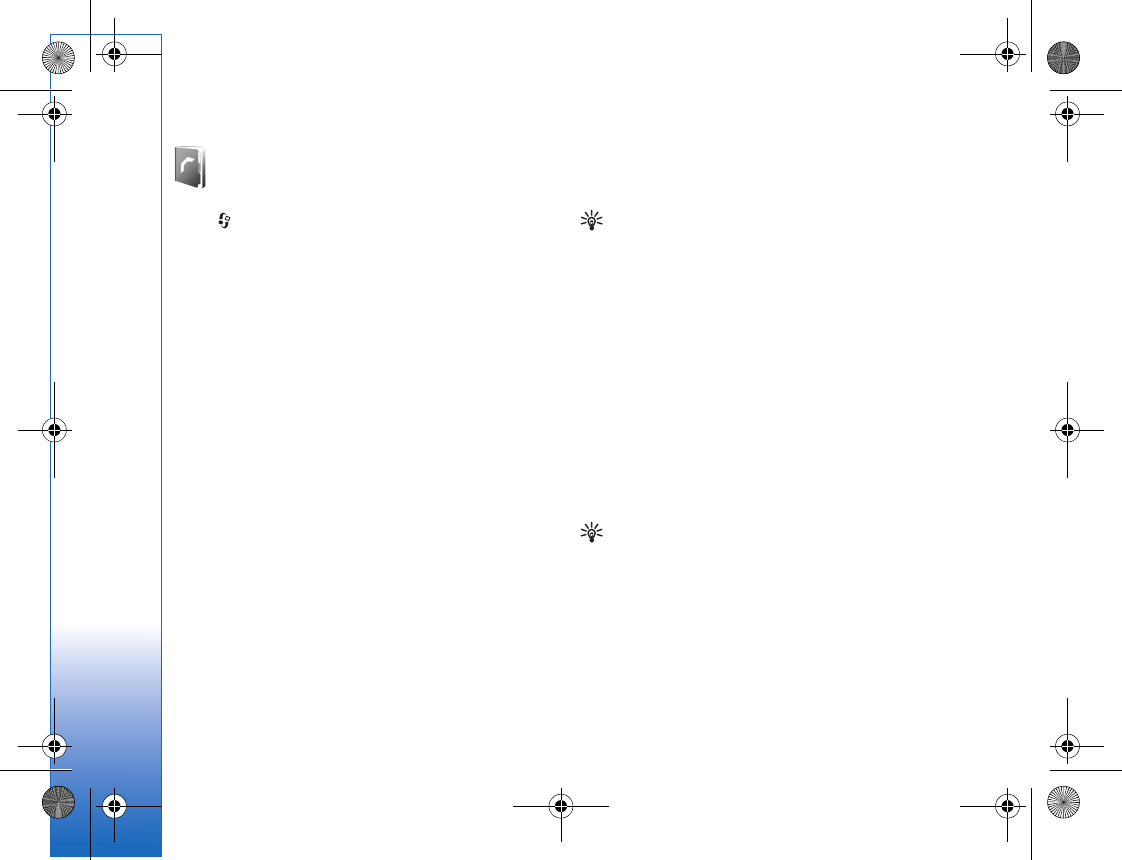
Contacts (Phonebook)
74
Contacts (Phonebook)
Press , and select Contacts. In Contacts you can save
and update contact information, such as phone numbers,
home addresses, or e-mail addresses, of your contacts.
You can add a personal ringing tone or a thumbnail image
to a contact card. You can also create contact groups,
which allow you to send text messages or e-mail to many
recipients at the same time. You can add received contact
information (business cards) to contacts. See ‘Data and
settings’, p. 63. Contact information can only be sent to or
received from compatible devices.
To view the number of contacts, groups, and the available
memory in Contacts, select Options > Contacts info.
Save and edit names and
numbers
1Select Options > New contact.
2Fill in the fields that you want, and select Done.
To edit contact cards in Contacts, scroll to the contact
card you want to edit, and select Options > Edit. You can
also search for the desired contact by entering the first
letters of the name to the search field. A list of the
contacts starting with the letters appear on the display.
Tip! To add and edit contact cards, you can also use
Nokia Contacts Editor available in Nokia PC Suite.
To attach a small thumbnail image to a contact card, open
the contact card, and select Options > Edit > Options >
Add thumbnail. The thumbnail image is shown when the
contact calls.
To listen to the voice tag assigned to the contact, scroll to
a contact card, and press the scroll key. Then select
Options > Play voice tag. See ‘Voice dialing’, p. 78.
To send contact information, select the card you want to
send. Select Options > Send > Via text message, Via
multimedia, Via e-mail, Via Bluetooth, or Via infrared.
See ‘Messaging’, p. 58 and ‘Send data using Bluetooth
connectivity’, p. 95.
Tip! To print contact cards on a compatible Basic Print
Profile (BPP) equipped printer with Bluetooth
connectivity (such as HP Deskjet 450 Mobile Printer or
HP Photosmart 8150), select Options > Print.
To add a contact to a group, select Options > Add to
group (shown only if you have created a group). See
‘Create contact groups’, p. 76.
R1108_en.book Page 74 Wednesday, March 5, 2008 9:53 AM
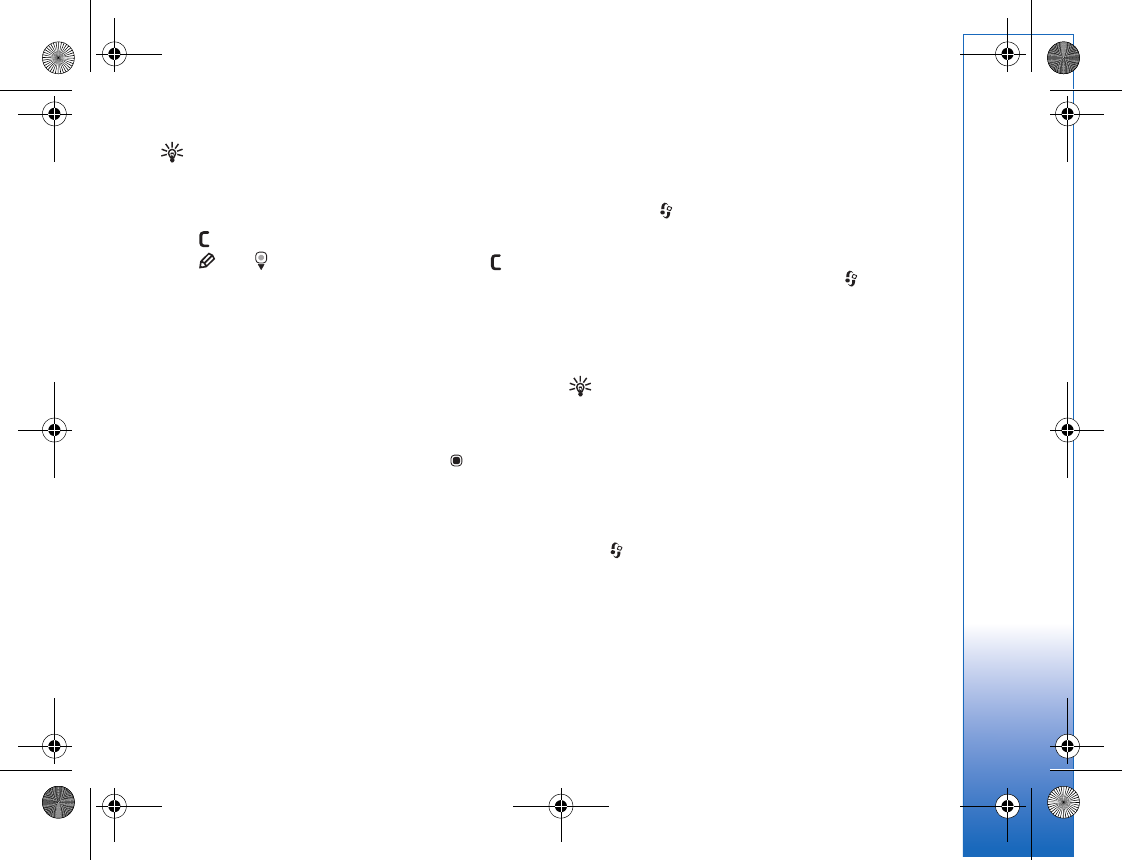
Contacts (Phonebook)
75
Tip! To check to which groups a contact belongs,
scroll to the contact, and select Options > Belongs to
groups.
To delete a contact card in Contacts, select a card, and
press . To delete several contact cards at the same time,
press and to mark the contacts, and press to
delete.
Default numbers and addresses
You can assign default numbers or addresses to a contact
card. In this way if a contact has several numbers or
addresses, you can easily call or send a message to the
contact to a certain number or address. The default
number is also used in voice dialing.
1In Contacts, select a contact, and press .
2Select Options > Defaults.
3Select a default to which you want to add a number or
an address, and select Assign.
4Select a number or an address you want to set as a
default.
The default number or address is underlined in the contact
card.
Copy contacts
To copy names and numbers from a SIM card to your
device, press , and select Contacts > Options > SIM
contacts > SIM directory. Select the names you want to
copy and Options > Copy to Contacts.
To copy contacts to your SIM card, press , and select
Contacts. Select the names you want to copy and
Options > Copy to SIM direct., or Options > Copy > To
SIM directory. Only the contact card fields supported by
your SIM card are copied.
Tip! You can synchronize your contacts to a
compatible PC with Nokia PC Suite.
SIM directory and other SIM services
For availability and information on using SIM card
services, contact your SIM card vendor. This may be the
service provider or other vendor.
Press , and select Contacts > Options > SIM
contacts > SIM directory to see the names and numbers
stored on the SIM card. In the SIM directory you can add,
edit, or copy numbers to contacts, and you can make calls.
To view the list of fixed dialing numbers, select Options >
SIM contacts > Fixed dialling contacts. This setting is
only shown if supported by your SIM card.
R1108_en.book Page 75 Wednesday, March 5, 2008 9:53 AM
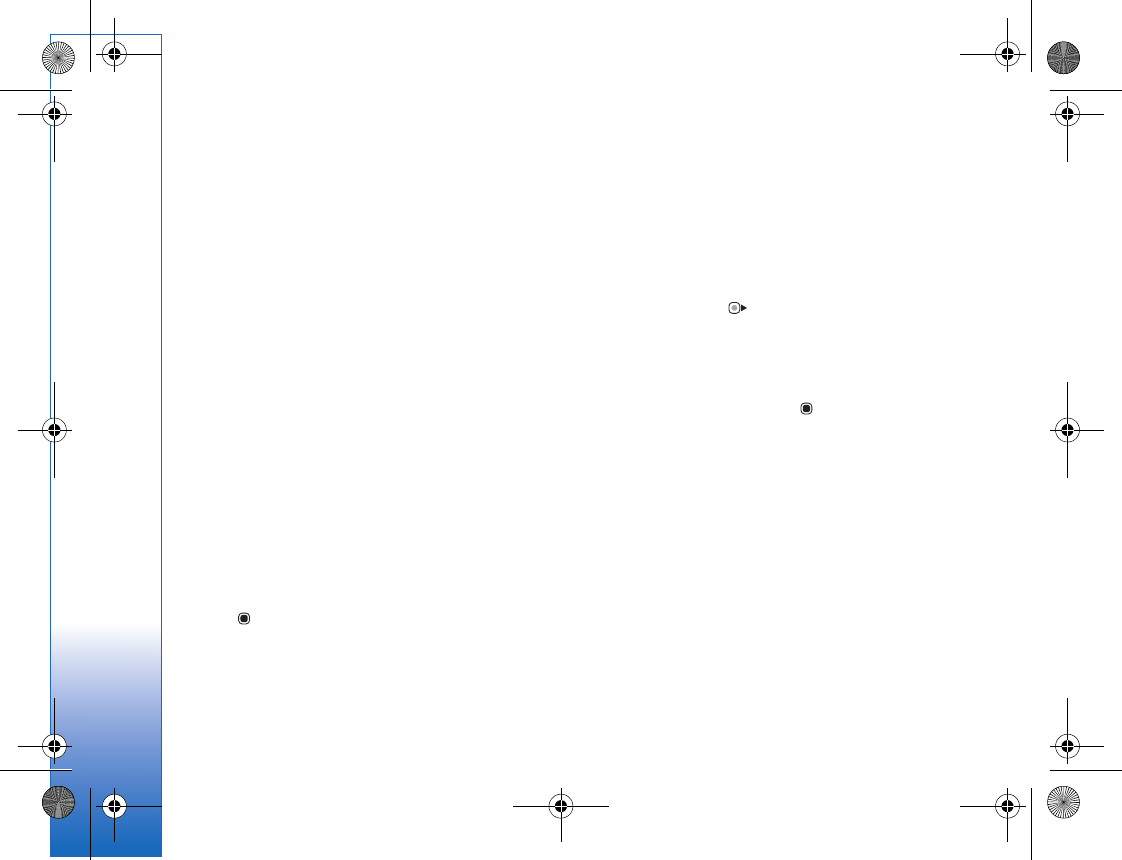
Contacts (Phonebook)
76
To restrict calls from your device to selected phone
numbers, select Options > Activ. fixed dialling. You need
your PIN2 code to activate and deactivate fixed dialing or
edit your fixed dialing contacts. Contact your service
provider if you do not have the code. To add new numbers
to the fixed dialing list, select Options > New SIM
contact. You need the PIN2 code for these functions.
When you use Fixed dialling, packet data connections are
not possible, except when sending text messages over a
packet data connection. In this case, the message center
number and the recipient’s phone number must be
included on the fixed dialing list.
When fixed dialing is activated, calls may be possible to
the official emergency number programmed into your
device.
Add ringing tones for contacts
When a contact or group member calls you, the device
plays the chosen ringing tone (if the caller’s telephone
number is sent with the call and your device recognizes
it).
1Press to open a contact card or go to the groups
list, and select a contact group.
2Select Options > Ringing tone. A list of ringing tones
opens.
3Select the ringing tone you want to use for the
individual contact or the selected group.
To remove the ringing tone, select Default tone from the
list of ringing tones.
Create contact groups
1In Contacts, press to open the groups list.
2Select Options > New group.
3Write a name for the group or use the default name,
and select OK.
4Open the group, and select Options > Add members.
5Scroll to a contact, and press to mark it. To add
multiple members at a time, repeat this action on all
the contacts you want to add.
6Select OK to add the contacts to the group.
To rename a group, select Options > Rename, enter the
new name, and select OK.
Remove members from a group
1In the groups list, open the group you want to modify.
2Scroll to the contact, and select Options > Remove
from group.
3Select Yes to remove the contact from the group.
R1108_en.book Page 76 Wednesday, March 5, 2008 9:53 AM